Siberian Ibex were common in the Tianshan Mountains of Xinjiang!
***
***
Be sure to check out our Pbase galleries for Xinjiang and Gansu:
***
Gansu's Gobi Desert
Yadan National Geological Reserve
Mammals of Xinjiang and Gansu
Lop Nur Wild Bactrian Camel Reserve
Tianshan Mountains
Turpan
Urumqi
Gansu's Ancient Sites
Wutong Gou & Karamori Reserves
Birds of Xinjiang
***
***
Expedition to Xinjiang!
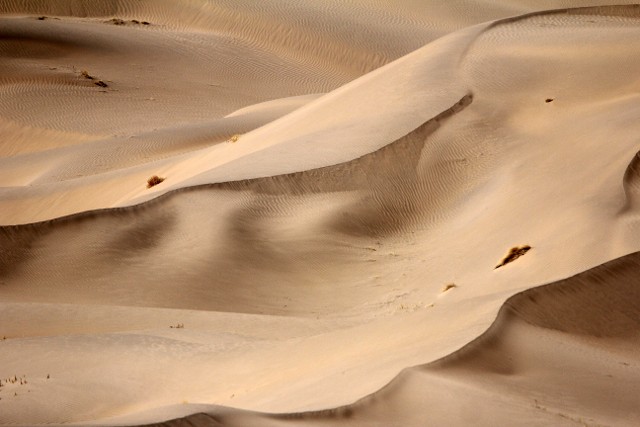
Our expedition to Xinjiang exposed us to two of China's largest deserts, the Kumtage Desert in northeastern Xinjiang and the Taklamakan Desert to the south. Stunning scenery and landscapes were common throughout.
***
Hard to believe we’ve been in China now for three years. During our time in the Middle Kingdom, we’ve had some amazing wildlife journeys and have racked up quite a species list of some of Asia’s most spectacular mammals and birds. (See Life Lists here) But for years now, I have always stared at the map of China and my eyes kept wandering to the west to vast province known as Xinjiang. Really not knowing much about it – there really are no mammal-watching reports that I am aware of – I had always been a bit reticent to attempt a wildlife trip to the huge province.
***
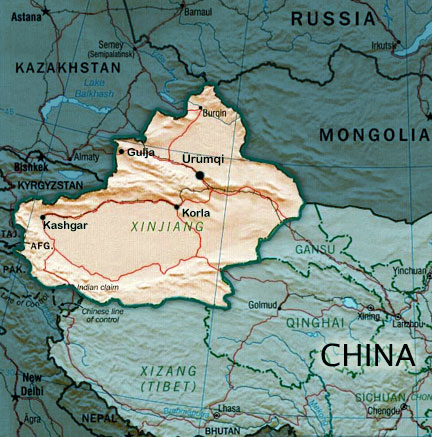
Xinjiang Map (linked from http://compound-eye.org/rogc/xinjiang/) Our expedition started in Gansu to the east and ended in Urumqi.
******
I initially attempt to illicit information for a potential trip to the trip a couple years ago with failed, unanswered contacts to various web-based sources, so I went about planning and partaking in other wildlife expeditions to China until I could find a source of information that would allow Xinjiang top be added to our list. (See our China Wildlife Expeditions webpage here for our trip reports for other areas of China).
All of this changed when I accepted a contract at International School Bangkok as their new Environmental Sciences instructor for the 2013 academic year, and I felt a sense of urgency to visit many of the wildlife destinations I had dreamt about for years before our departure. With this in mind, I contacted some of my old wildlife contacts here and one thing led to another, and I was put in contact with Professor Li WeiDong, from Urumqi, Xinjiang.
***
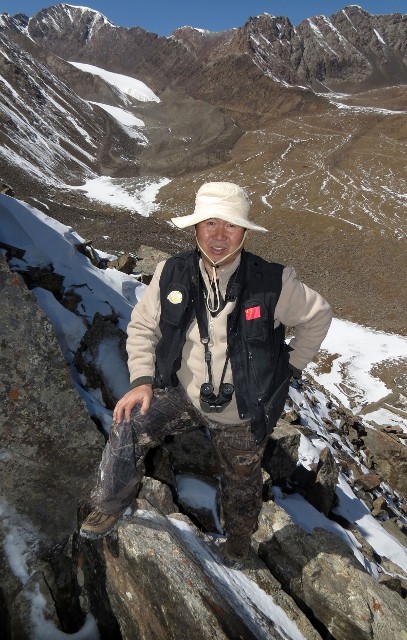
Professor Li Weidong. We were very priviledged on this expedition to have Professor Li as our guide and friend. His expertise on all things Xinjiang made our expedition more than successful. Here he is at 4200 meters in elevation, searching the scree-filled slopes of Tianshan Glacier #1 Valley in search of the mammal he discovered, the elusive Ili Pika (Ochotona iliensis).
***
***
“Professor Li”, as we called him, is an amazing man. An accomplished wildlife biologist and medical doctor with a vast list of accomplishments, including being one of China’s foremost wild Bactrian Camel experts and taxonomists, and the discoverer the rare Ili Pika (Ochonota iliensis). He is also one of China’s great conservationists with high credits for helping the cause for the formation several of western China’s national nature preserves including, Arjin Shan NNR and others. Professor Li is a very easy going, modest scientist with an excellent sense of humor and very kind disposition. He made us feel comfortable throughout our entire expedition, even in times of uncertainty. We were very fortunate to have made contact with Professor Li and have him be our guide and escort through some of Asia’s (not only China’s!) most wild areas! (Here is Professor Li’s email).
***
Ili Pika (Ochotona iliensis)
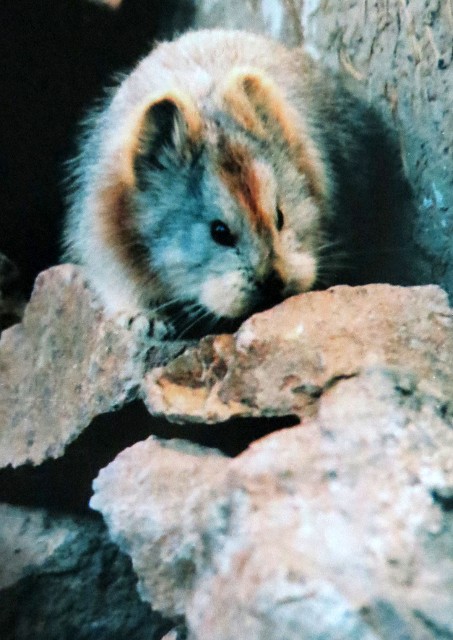
The famous Ili Pika (Ochotona iliensis) is one of Professor Li's many claims to fame. Professor Li took this picture in the early days of his studies after discovering this beautiful species in the western Tianshan Mountains of Xinjiang after saving a young Uyghur girls life in the remote high elevation areas during a wildlife survey expedition.
***
***
Our other team members included my long-time buddy, Steven Shi and Mr. Fung (affectionately nicknamed “Mr. Square” (Fung means square in Mandarin) and eventually “John Wayne” due to his resemblance to the cowboy movie star. We even got him to start saying “Howdy partner” as a greeting on the trip. Mr. Fung is an avid off-road enthusiast and is a very able driver and expeditioner – good man to have along on an adventure such as this. When Steven heard about our plans to go to Xinjiang’s most remote regions, he asked if he could come and I was overjoyed when a seat became available for him to come along. His bilingual abilities were invaluable throughout and he was a definite asset that made our experiences far richer.
***
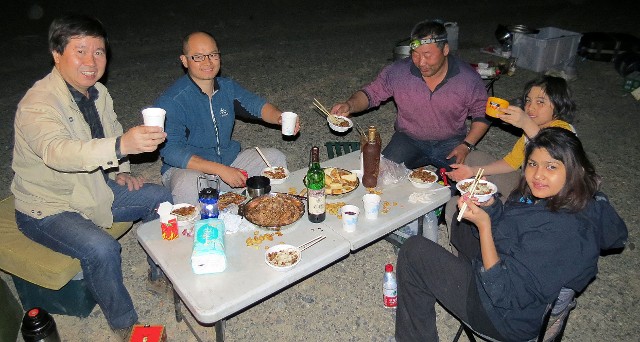
Our expedition team on our first night of wilderness camping in the Kumtage Desert of Gansu. From the Left: Professor Li, Steven Shi, Mr. Fung (Mr. Square!), Cokie and Som. Even after nearly a week and a half in the desert, we all remained friends!
***
When thinking of Xinjiang, the first thing one needs to know is that it is damn big! At over 636,000 square miles (1.6 million square kilometers), it is nearly THREE times larger than Texas and almost as large as Alaska! During the initial planning stages of the trip, I had grand elusions of seeing all corners of the province and attempting a 20-30 species expedition! Professor Li, however, knew the realities of travel in the province and gently reined me in and guided me to a much more realistic, although still very ambitious, expedition. Professor Li is an excellent emailer and can communicate in written English very well. His spoken English is basic but is more than sufficient for effective communication.
***
Gansu Province & the Gobi Desert
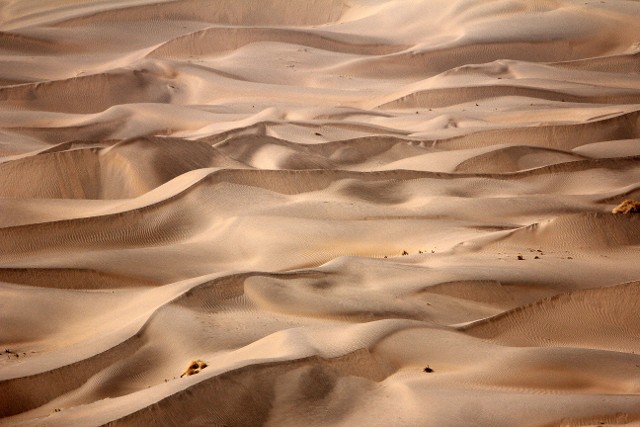
Prior to actually traveling to Gansu, I really had no idea what it was all about. Surprisingly it is a very diverse and rich province, both in terms of fauna and landscapes. The east is grassland steppe and the west is the Gobi Desert. Here we are seeing the southern dunes that delineate the end of the Gobi Desert and the beginning of the great Kumtage Desert.
***
Due to the vastness of Xinjiang, we opted for a one-way trip rather than a loop. Noting a couple cultural destinations in nearby Gansu province, we opted to start our trip in Jaiyuguan, famous for having a spectacular fortress situated along the final stretches of the Great Wall of China. The flights from Shanghai to Jaiyuguan were next to free so we figured the far-eastern starting point for our trip would be economical and culturally enlightening. Well, economical? Not sure about that looking back on it…One of the requirements for a trip to the deserts of Xinjiang is TWO 4X4 vehicles. Initially I thought this to be a bit of overkill but looking back on it, the ONLY safe way to see the great Lop Nur, Kumtage (pronounced Koomtaga) and Taklamakan Deserts is with two well-maintained vehicles. No sane traveler should even consider venturing in to any of these vast wildernesses with only one vehicle. So having to pay mileage for two vehicles to drive across Xinjiang to pick us up in the middle of Gansu probably cost us more than flying to another closer destination to start our journey.
Oh well, we did see the giant Jiayuguan Fortress as well as the Mogao Grottos in Dunhuang, which were interesting cultural sights for sure. Luckily were traveling in early April, well before the tourist season, so we basically owned these normally very crowded spots. This added to the appreciation factor as traveling in China when the hoards of tourists are cramming and crunching and the loudspeakers are bellowing is pure hell and should be avoided at all costs.
***
Jaiyuguan Pass Fortress and Great Wall
 While I was planning this trip, I cam across images of the famous Jaiyuguan Pass Fortress with glorious mountains, wide open desert valleys...Now in true China style, there are chemical factories and powerlines to add to the ambiance of the World Heritage Site. And somehow now, there are no mountains to be included in the setting....Hmm...
While I was planning this trip, I cam across images of the famous Jaiyuguan Pass Fortress with glorious mountains, wide open desert valleys...Now in true China style, there are chemical factories and powerlines to add to the ambiance of the World Heritage Site. And somehow now, there are no mountains to be included in the setting....Hmm...
***
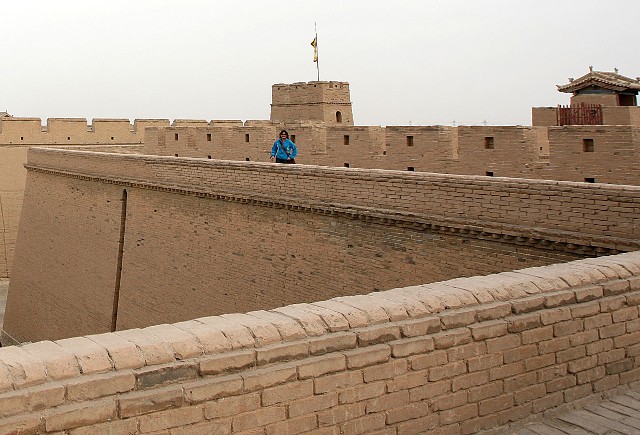
One saving grace of our visit to the fortress was that we literally owned the place! No other tourists! Now in China, this is nothing short of a miracle....
***
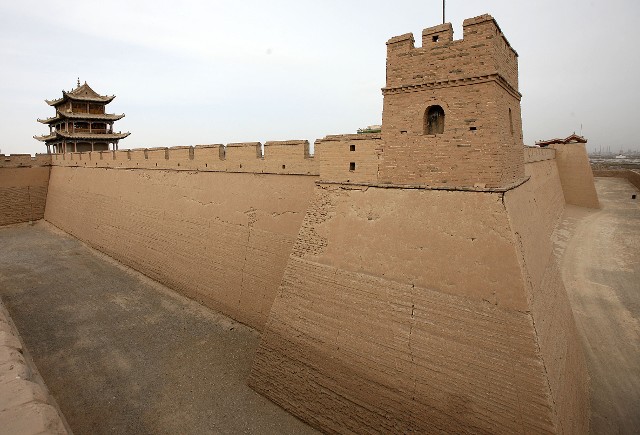
Still an impressive site for sure.
***
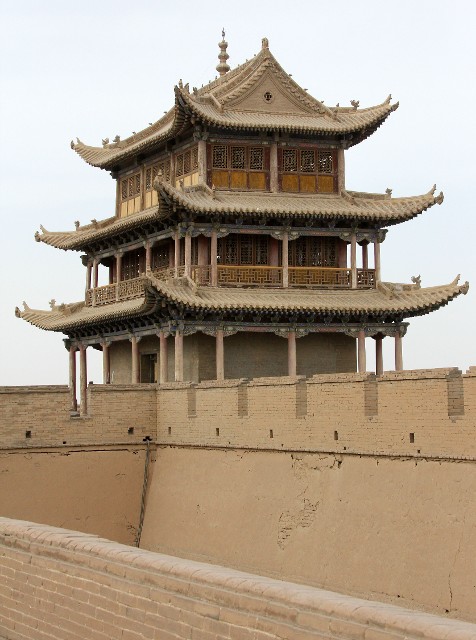
Jaiyuguan Pass Fortress
***
Mogao Grottoes
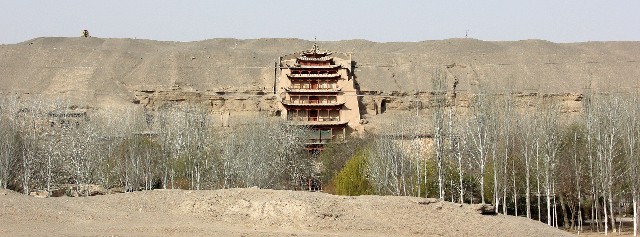
Mogao Grottoes were an interesting site as well. We opted not to tour the interior when they tried to make us leave our cameras and bags at the entrance stating policy, but allowed dozens of Chinese guests to enter with cameras and bags....Rules are for foreigners only I suppose.
***
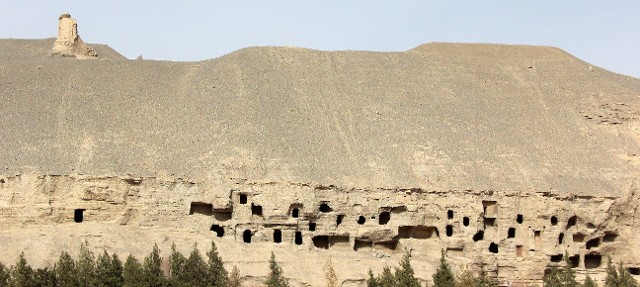
Steven was telling me that at his university, there is a major that centers only on these grottoes!
***
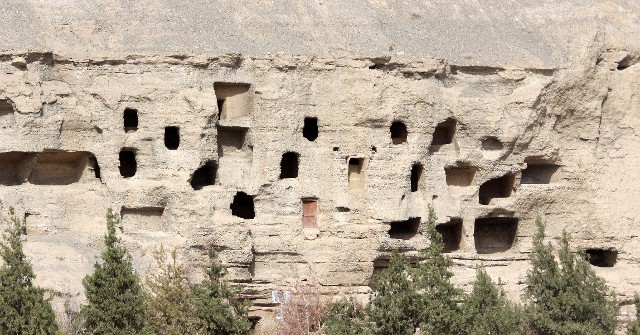
Mogao Grottoes
***
***
Gansu Dunhuang Xifu Nature Reserve
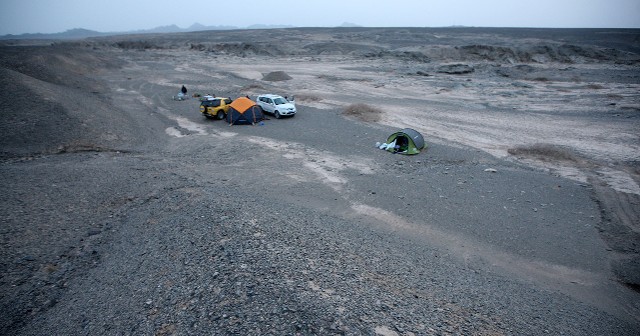
Base Camp Xifu! Our first night wilderness camping in a dry riverbed just outside Gansu Dunhuang Xifu Nature Reserve, a great wilderness!
***
So our first 1.5 days of the expedition were spent touring the cultural highpoints of Gansu Province and were void of wildlife. The desert scenery we passed through was spectacular though which made this part of the journey well worthwhile. But main destination in Gansu was the very poorly known and rarely visited, Gansu Dunhuang Xifu Nature Reserve, a location Professor Li knew about and said was home to a few of our target species, namely Wild Bactrian Camels, Goitered Gazelles and Przewalski’s Horses.
Xifu NR is about 150 or more kilometers deep in to the Gansu section of the Gobi Desert. As we entered the great expanses of the desert south of Dunhuang, it became evident very quickly that we were heading in to an amazing desert wilderness, larger than any I had ever experienced in the past. (I have only traveled to certain parts of the Sahara, so that direct comparison has yet to be made….) Initially we traveled over mud-pan desert, void of any vegetation, but eventually we made it in to the classic Gobi Desert scrub/steppe community with low-lying drought-resistant species that seemed like very suitable habitat for the species we were searching for.
***
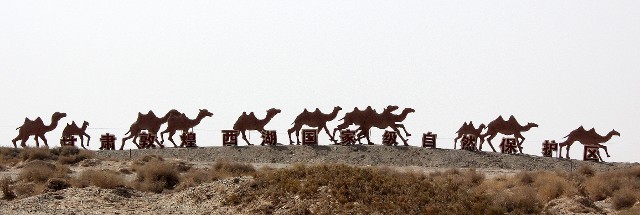
The funny thing was....when we spotted this sign for the reserve at a distance, we thought we were actually seeing wild Bactrian Camels!
***
After about an hour of driving, we eventually made it to a massive gate indicating we were about to enter the Xifu NR. Interestingly however, our vehicle stopped considerably short of the entrance while our other vehicle, containing Mr. Fung (AKA “John Wayne”) and my good buddy Steven Shi, who also joined me on my Qinghai expeditions, approached the gate first. It was at this moment that we found out that being foreigners in Xinjiang is problematic. I was not aware that there were still areas of China (except of course Tibet) that still blocked foreigners like the old days. While Xifu did not block our entrance thankfully, nor did anyplace else for that matter, we did find that our team was cautious about us not being Chinese nationals. Thankfully we did get free passage throughout, no problems! So perhaps things aren’t that bad in Xinjiang nowadays after all.
Once we entered Xifu NR, we began immediately searching for our targets. The habitat seemed appropriate and the weather was outstanding! After driving deeper in to the core area of the reserve, we ventured off on a dirt track and immediately came up on species #1! Two spectacular Gansu Goitered Gazelles (Gazella subguttarosa hilleriana), China’s only example of the genus, Gazella(of which there are four subspecies), were spotted directly next to the road in fantastic light. We stopped for quite a few minutes photographing the seemingly unperturbed gazelles before we got the call from vehicle #2, that Steven and Mr. Fung had spotted 5 Przewalski’s Horses (Equus caballus przewalskii), one of the world’s last remaining wild horse subspecies. So within our first two hours in the field, we’d nailed two of our primary targets! We scanned the desert for some time searching for wild Bactrian Camels fruitlessly but we were still happy to have spotted a couple new lifers!
***
Gansu Goitered Gazelle (Gazella subgutturosa hilleriana)
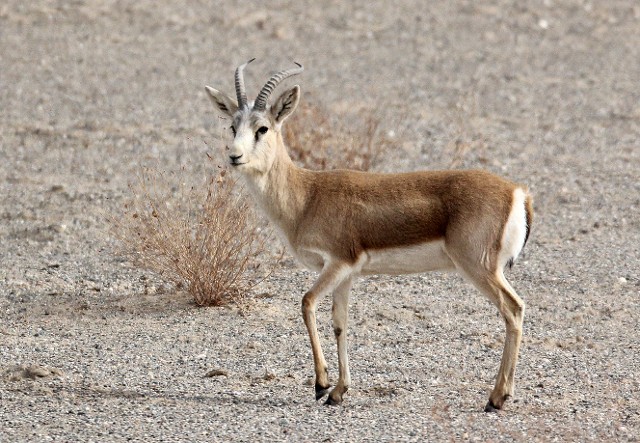
It didn't take us long to locate our first mammal for the trip, the Gansu Goitered Gazelle (Gazella subgutturosa hilleriana). A nice pair were waiting for us shortly after entering Xifu NR.
***
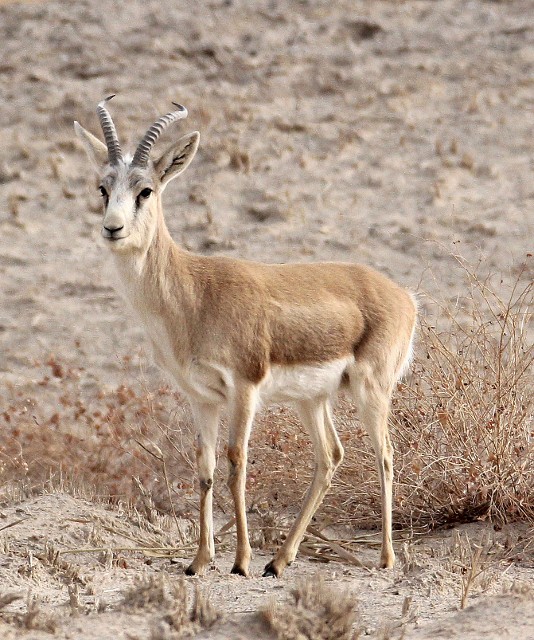
Gansu Goitered Gazelle (Gazella subgutturosa hilleriana) male in Xifu Nature Reserve.
***
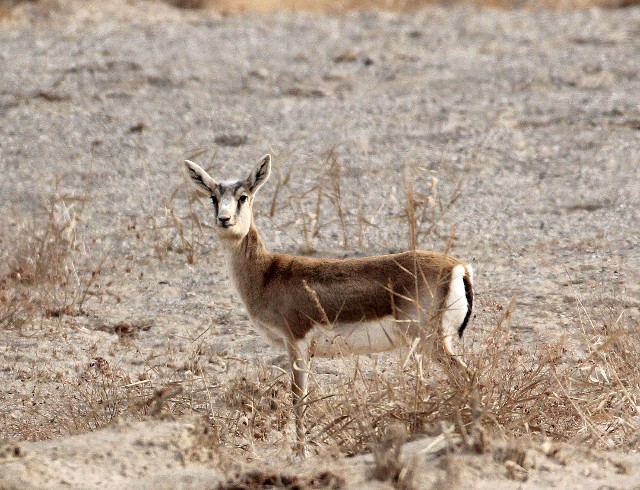
Gansu Goitered Gazelle (Gazella subgutturosa hilleriana) female at Xifu Nature Reserve.
***
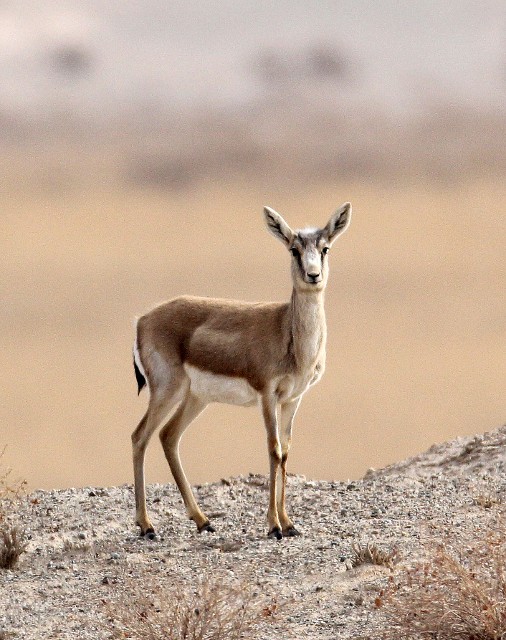
Gansu Goitered Gazelle (Gazella subgutturosa hilleriana)
***
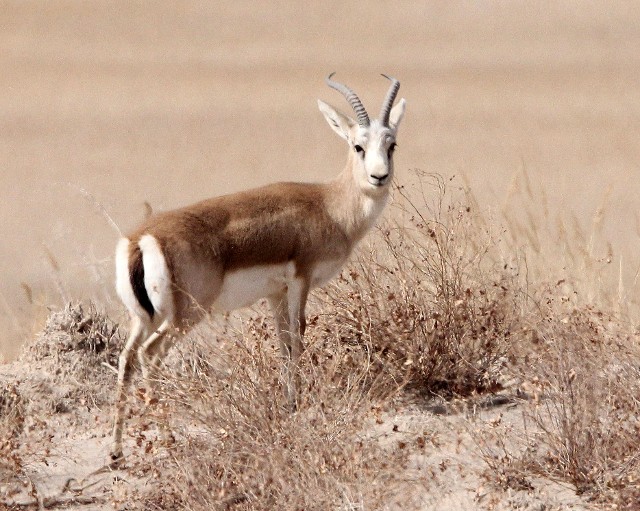
Gansu Goitered Gazelle (Gazella subgutturosa hilleriana)
***
***
Przewalski’s Horses (Equus caballus przewalskii)
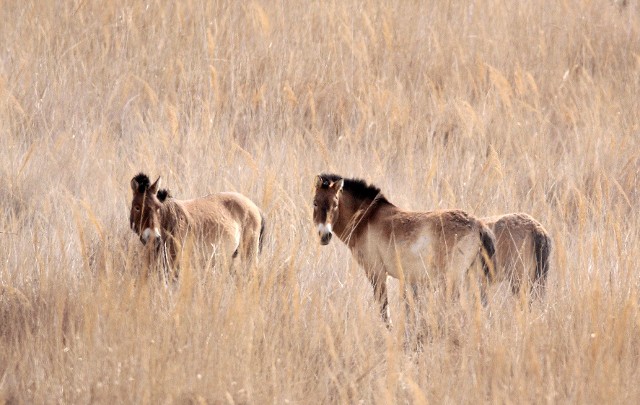 Przewalski’s Horses (Equus caballus przewalskii) are thought by some taxonomists to be a true species in their own right (E. przewalskii) due to mitochondrial DNA studies that indicate a divergence from modern domestic horses over 160,000 years ago. Currently there are estimated to be over 1500 of these wonderful equids in the wild both in China and Mongolia.
Przewalski’s Horses (Equus caballus przewalskii) are thought by some taxonomists to be a true species in their own right (E. przewalskii) due to mitochondrial DNA studies that indicate a divergence from modern domestic horses over 160,000 years ago. Currently there are estimated to be over 1500 of these wonderful equids in the wild both in China and Mongolia.
***
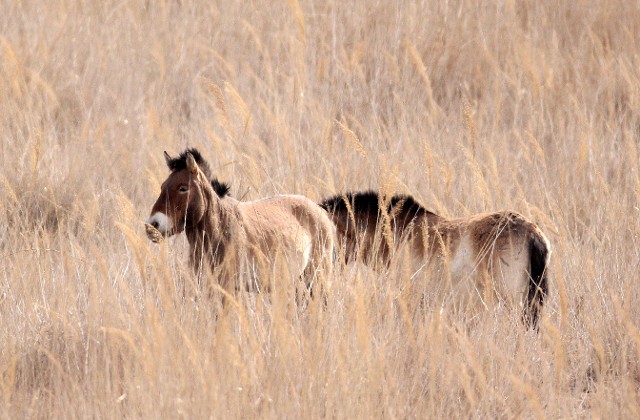
These horses are part of a reintroduced herd at Xifu. So far their numbers appear to be stable and the population seems to be secure under the protection of the reserve. China has at least three populations of Przewalski’s Horses (Equus caballus przewalskii) currently with efforts for more reintroductions as habitats become available.
***
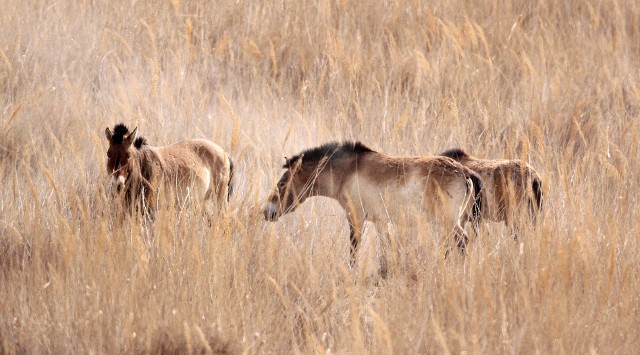
Przewalski’s Horses (Equus caballus przewalskii)
***
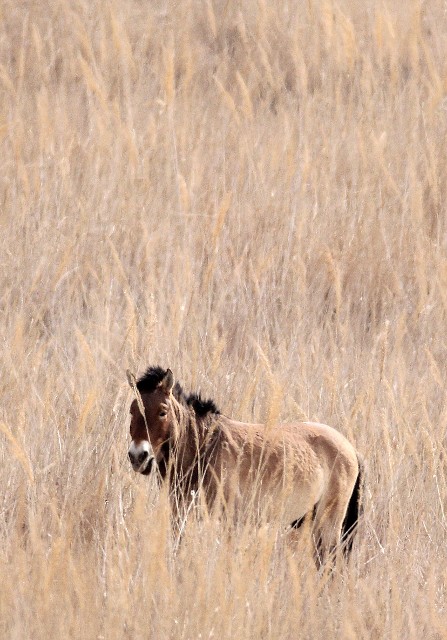
Przewalski’s Horses (Equus caballus przewalskii)
***
***
Yadan National Geological Park
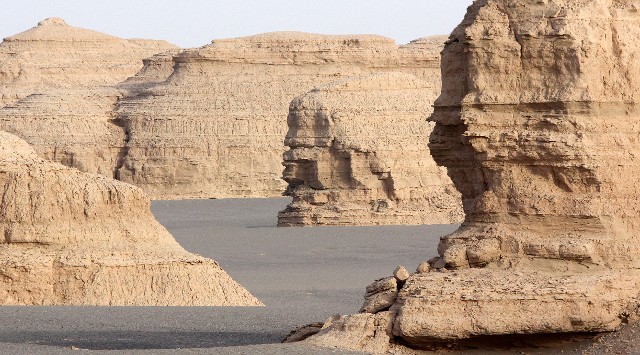
Yadan! This was a nice surprise - I was not expecting such an impressive place.
***
Although it was late in the afternoon, Professor Li recommended that we proceed even deeper in to the Gobi to a geological sight known as Yadan Geological Park, which proved to be one of the most spectacular scenic spots visited on the expedition! We spent a couple late afternoon hours exploring the impressive sand formations in the middle of Gansu’s Gobi Desert. Evidently formed from a massive dry lake bed subsequently eroded in to these amazing formations, Yadan is a sight NOT to be missed if in the area.
***
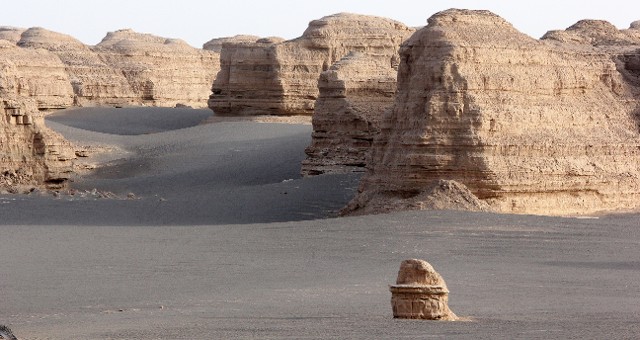
There really was no educational information on the region, but I can imagine that these formations were once the bottoms of a giant lake that has since dried up and the lake bed is now eroding to form these impressive formations.
***
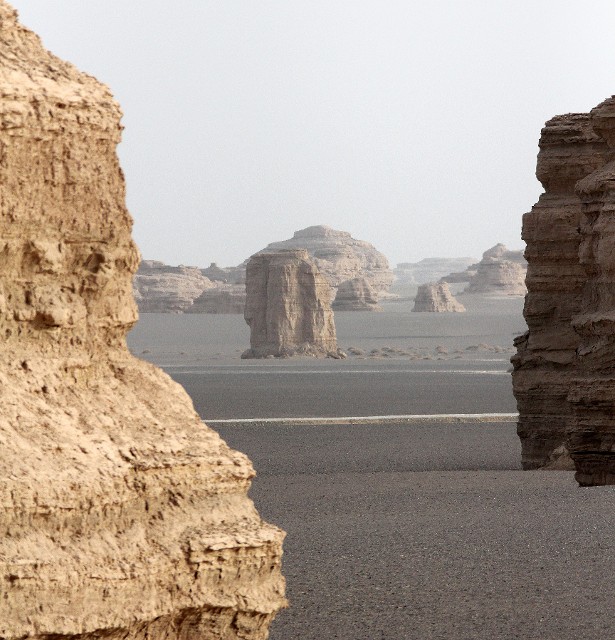
We once again owned this place. April is absolutely the best time to travel to these remote places in China - no tourists at all!
***
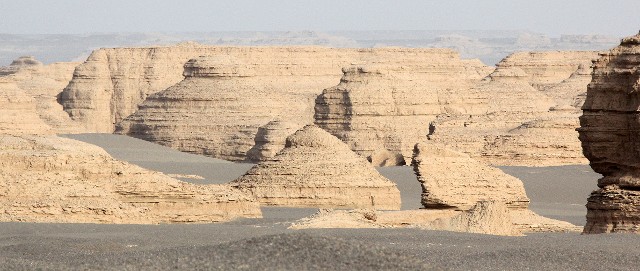
Yadan National Geologic Reserve
***
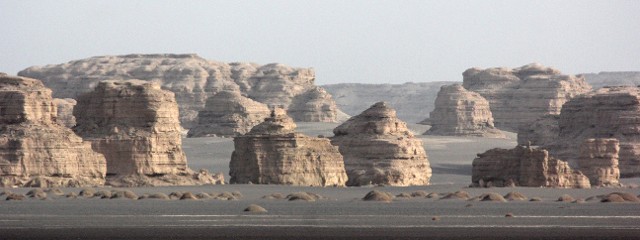
Stunning
***
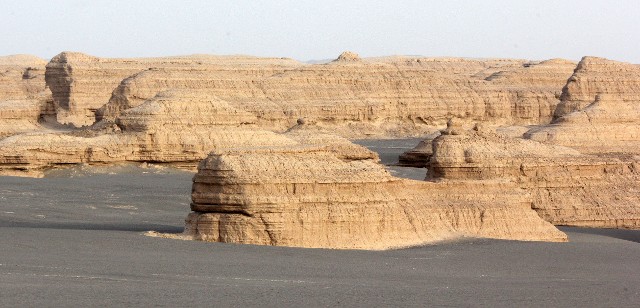
The conditions were absolutely perfect - both for photography and for simply being in the Gobi Desert!
***
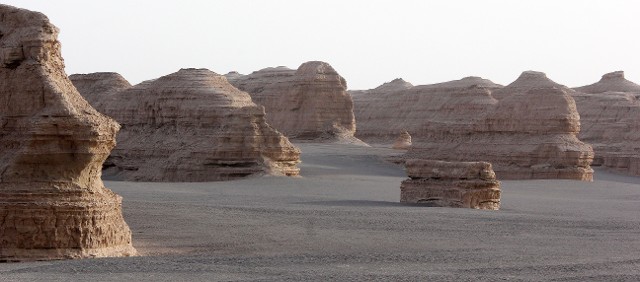
Yadan
***
Since we were now hundreds of kilometers away from humanity, we opted (with a little prompting from me!) to wilderness camp in the Gobi. While Professor Li was initially a bit reluctant for some reason, he eventually came to agree that it was a viable option and we found a nice dry river drainage a few kilometers back in to the Gobi were we set up a wonderful wilderness camp and had a wonderful night camping in the desert. After setting up camp and exploring the area a bit, we grubbed down on Mr. Fung’s and Steven’s home cooking – Xinjiang cuisine at its best! I could tell at this point, we were with a great group of people and that we would all be able to get along well on this tremendous journey. And it did my soul good to get out of Chinese cities and towns and horribly filthy hotels, filled with cigarette smoke and spitting sounds and back in to the wilderness filled with clean air, nature sounds and stars! Lots and lots of stars!
***
Lop Nur Wild Camel Reserve
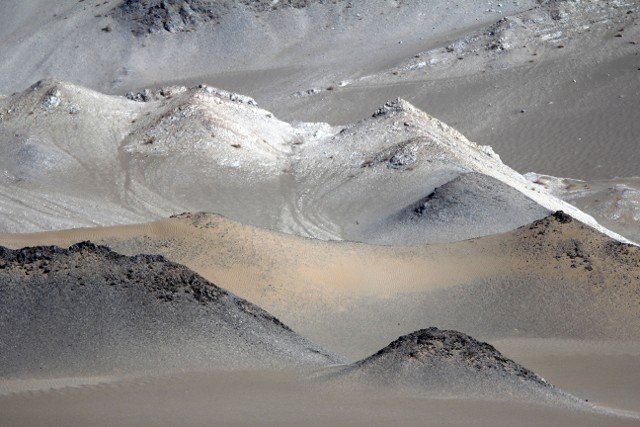
Lop Nur is like no where I have ever been before. So remote, so desolate, and so raw. At certain times, some of the details looked strangely familiar but yet it was so unique, both in terms of the landscapes and the biodiversity of the vast region.
***
Our next morning was the beginning of our true desert-portion of the expedition. We were to head further south out of Gansu and in to Qinghai Province where we aimed to enter the famous Lop Nur Wild Camel Reserve. The main focus of this entire expedition was to get in to Lop Nur and attempt to spot an actual wild Bactrian Camel. All of our plans basically centered around this very lofty goal. The drive south through the southern tip of Gansu and northwestern Qinghai was absolutely spectacular. We even dipped in to Altun Mountain Nature Reserve, which is generally rich in wildlife, but today we only spotted a few bird species although we searched fruitlessly for Himalayan Marmots and Blue Sheep, which Professor Li had spotted on previous visits.
We continued south to a very small village in Qinghai where we had lunch and stocked up on supplies with the plan of spending several days camping and exploring the desert areas in and around Lop Nur in search of Bactrian Camels and other wildlife. Up to this point we were on paved, well marked roads, so I was wondering when we were going to find a need for two vehicles….and then we turned left down a dirt track, and I soon found out why…
***

Qinghai's Altun Shan National Nature Reserve. A good spot for wildlife, just not this afternoon....We only had time to fly through it today.
***

Our last stop to stock up before heading in to the desert. Surprisingly we found a pretty well-equipped little store with ample supplies.
***
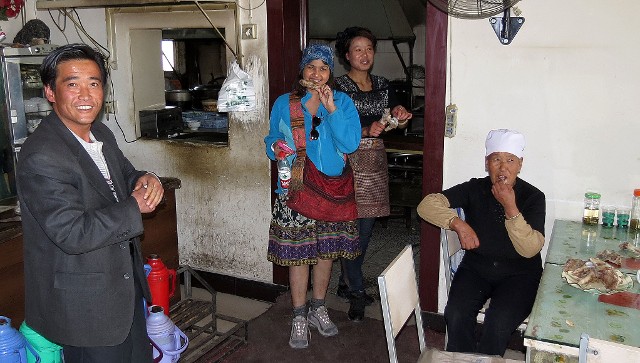
Som going local! Fresh and greasy lamb! Yum!
***
For the next several hours, we noticed our well worn dirt track turn in to a small series of wheel ruts working their way westward through the Kumtage Desert of northwestern Qinghai, eventually entering Xinjiang. Eventually the series of tracks disappeared completely and we were making our own new tracks through the very vast desert, through canyons, up hills and dunes, across plains and valleys for what seemed like an eternity. The scenery was absolutely spectacular and we even came across ample sign of wild Bactrian Camels! There were fresh tracks all over the place so I knew we were heading in the right direction even though it became clear that no one really had a solid idea what the right direction was!
***
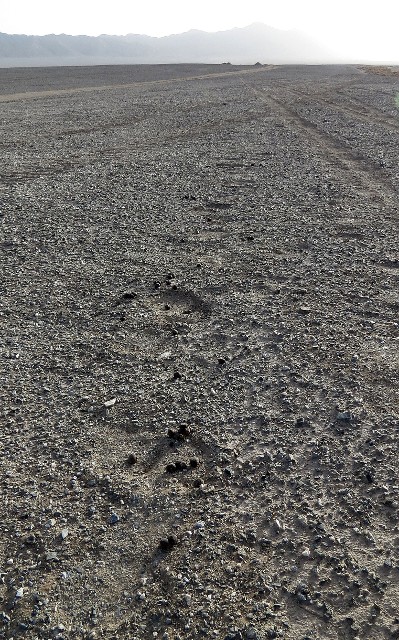
We spotted quite a bit of Bactrian Camel sign while we were "finding" our way in to the Lop Nur desert. These tracks may have been a couple days old, but they showed that there were camels here!
***

Camel tracks everywhere! Where the hell are the critters that made them???
***
The professor knew we wanted to head to a part of Lop Nur called, La Pie Quan Spring, located in the southeastern sector of the huge Lop Nur Wild Camel Reserve. But I was unaware that the route we were taking to La Pie Quan was not a route at all – it was a truly overland haul across the vast roadless section of this part of the Kumtage Desert for which only a good sense of direction and series of GPS units (we had three going at any given time) could aid in accomplishing safely. It became clear late in the afternoon that we were completely lost in the desert. Professor Li knew the general direction of La Pie Quan, and even had precise GPS coordinates to the springs, but the topography simply did not jibe with the directions we wanted to travel. Before we knew it, the conditions were changing rapidly – the temperature was dropping dramatically and the winds were kicking up to make the previously warm, comfy desert turn in to a wintry scene that was now quickly becoming very dangerous.
Even though it was becoming dark, the professor seemed to want to continue searching for the springs, which were a mere 27 kilometersto the northwest. I knew that in this terrain, 27 kms may as well be a 1000, so I told him to head back to safer, wind-blocked canyons so we could find a reasonable place to wilderness camp. He saw the logic in this request and we traveled back across the bumpy, roadless wilderness to eventually find a relatively sheltered canyon where we hastily set up camp and proceeded to get warm and eat!
***
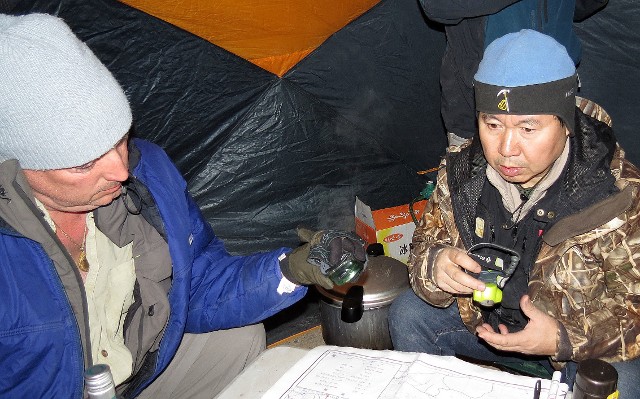
"OK, where the heck are we?"
***
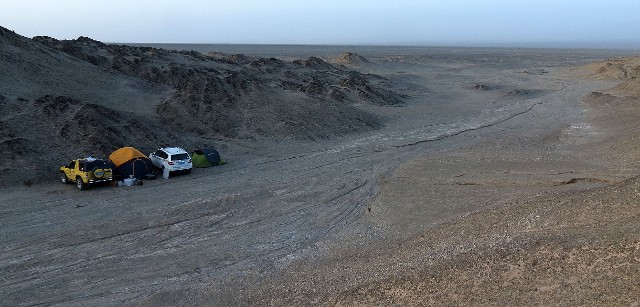
Luckily we were able to find a reasonable windbreak in this small canyon tucked away safely. It ended up being a really awesome campsite in the vast peopleless wilderness of Lop Nur.
***

Steven cooking up some rice porridge for dinner.
***
Even though we were very very lost in the Kumtage, all of our spirits were high. We had ample diesel, food and water for several days in the desert, so once we got out of the wind and the cold, we all felt fine, looking forward to finding some damn camels! It was on this evening that we realized that this was no ordinary wildlife trip for us. This was an adventure and we were part of a spectacular journey in one of the world’s most inhospitable places. While I was out on the cliff searching for our destination with the professor, feeling the elements pound my bones, I had a nearly spiritual sensation of vulnerability. I felt very mortal, although somehow I knew we were fine and this would all end as a powerful awareness-inducing experience. It was a very powerful feeling.
We ate, drank and laughed our way through the evening and eventually made it to bed sometime around midnight, Beijing time. Here in Xinjiang, they still use the Beijing time zone, but the reality is that people operate on the local time, which is two hours behind, as it should be. So by going to bed around midnight, we were actually going to bed around 10PM. This interpretation of time was nice at night, but we soon found out the morning departures were the bummer – getting an early start was something of a rarity, until we eventually insisted on getting on the road BEFORE 11AM!
So day two in the Kumtage started with the normal late start, but Mr. Fung and Professor Li were confident we were within spitting distance of our destination – a larger gravel track that would take us in to the heart of the Lop Nur core area. They knew of a dirt road that we should be crossing, and the GPS told us that we should be pretty close to it. So we continued ever deeper in to the desert in hopes of finding the mystery dirt track. We headed down a massive alluvial fan and eventually deep in to a great depression that ended in a giant mud pan. Initially it was pretty slow going as there were substantial ruts in the alluvial fan, but the mud pan allowed us to speed to near highway speeds for a few kilometers. This part was fun!
***
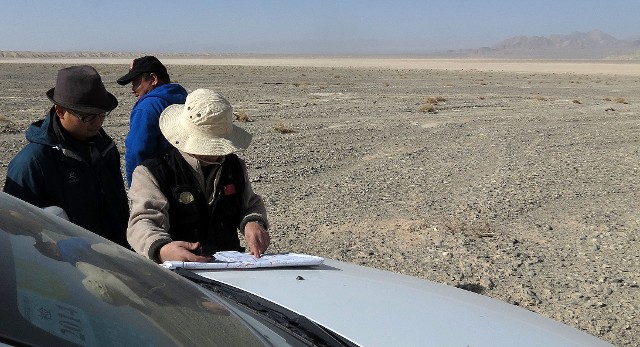 Still lost on day 2...According to the map, there should be a road near here somewhere....But where the heck is it?
Still lost on day 2...According to the map, there should be a road near here somewhere....But where the heck is it?
***
There were virtually no tire tracks indicating someone else had tried this route before. After finishing the mud pan there were many instances were we headed in on direction only to find the terrain too challenging for our Landwind 4X4, so we had to turn back multiple times. What started out being a hopeful quick off-road jaunt to the dirt track ended up being a multi-hour trek in to the vast remote wilderness, where we felt ever more lost….At least I did.
We had good radios, so we decided to separate and try various angles of the desert to see if one of us could find our way to some sort of recognizable landmark or road. It was a bit unnerving honestly to see Mr. Fung and Steven head in a completely opposite direction than us, but we really did need to find our way out of this part of the desert. Just as I was contemplating yet another night lost in the Kumtage Desert, Steven came across the radio claiming to have found a big road! We proceeded to head in their direction, or what we thought to be their direction, and after about an hour of searching, we too found a “big” (a track that about 5 vehicles had used before….in the history of the desert…) road. Although we could not yet spot Mr. Fung’s fancy yellow Landwind off-roader, we did see their very fresh tracks and proceeded to quickly follow their direction.
Eventually we did find them and we even spotted what seemed to be a much larger dirt road off in the distance. Yes! We were actually at the main track of Lop Nur! Finally! Now we could concentrate only on spotting camels and not on saving our skins! All the time we were venturing lost through the desert, we were in prime camel habitat, but so far all we had seen was tracks – mostly older sign but some very fresh as well. It was still great to know we were in the haunts of one of the rarest mammals on earth, with less than 1000 still in existence – some 600 in China and a mere 300 in Mongolia.
***
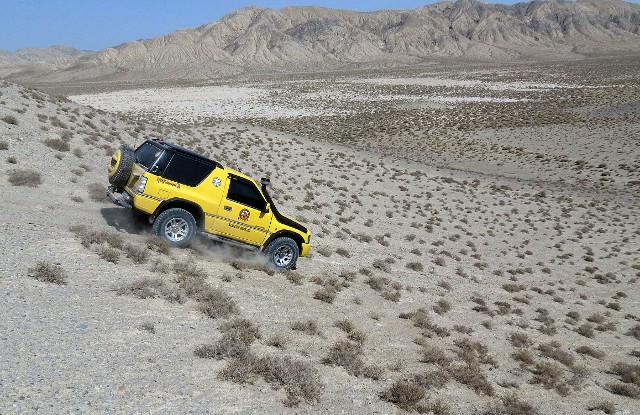
Finally! Off in the distance we spotted a road! Now all we had to do was get to it and we'd be on our way to spotting a Wild Bactrian Camel, although we had already been in prime camel habitat now for two days....
***
After a bit of last minute rough terrain navigation, and a short wrong turn, we were finally on the main track of Lop Nur. Now we started the journey toward the La Pie Quan Spring in hopes of spotting some wildlife. It was at this point that Professor Li started to prepare me for the realities of actually spotting a wild Bactrian Camel this time of year. He pointed out all of the frozen water and the dirt-covered snow-drifts in the area. He explained with all of this water available throughout Lop Nur, it was very unlikely that we would find the camels in any one centralized area – they would be very spread out. So finding them would be very challenging to say the least.
***
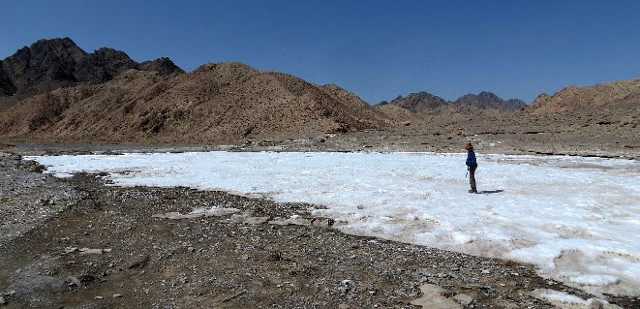
La Pie Quan Springs, completely frozen over. No camel sign here today....
***

Interestingly (and disappointingly), there were snow drifts like this all over the place this April in Lop Nur. You can see that in this one animals have been chistling away at the sandy cover to get at the frozen water inside. Due to the ready availability of water in this form throughout the region, the wildlife of Lop Nur was very dispersed and difficult to spot. Professor Li told me that coming in the summer months, although oppressively hot, would be a better time to spotting fauna.
***
I was not happy to hear this but I knew the realities of our timing so I was not surprised, nor was I daunted by this revelation. I was still very hopeful to spot some somewhere. Since we saw absolutely no wild camel sign at the springs, we continued further north heading toward the core area of Lop Nur. With no one to screen us at the southern checkpoint of the reserve we proceed even deeper and deeper in to the core area. We came across and followed a dry river bed for some 25-230 kilometersto search for camels in their prime habitat. We found many more Goitered Gazelles (this time the Tarim Basin Gazelles) and several Xinjiang Red Foxes (Vulpes vulpes karagan). And if I understood Professor Li correctly, the red foxes we photographed were the first ones ever photographed in Lop Nur! But still no camels – just some bones of a recently dead one perhaps killed by a summer flash flood….I noticed holes for numerous rodent species populating the Nitrariascrublands expanse. I was hoping to set traps there this evening but our camp ended up being in very different habitat.
***
Wild Bactrian Camel (Camelus bactrianus)!

Cokie spotted our very first Wild Bactrian Camel! Too bad it was dead....This one may have died in a flash flood during the previous year's summer rainy season...
***
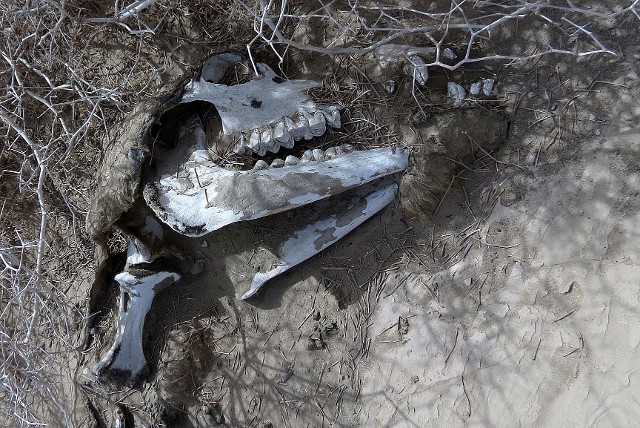
Oh to see a live one....Any minute now....
***
Tarim Basin Goitered Gazelle (Gazella subgutturosa yarkendensis)
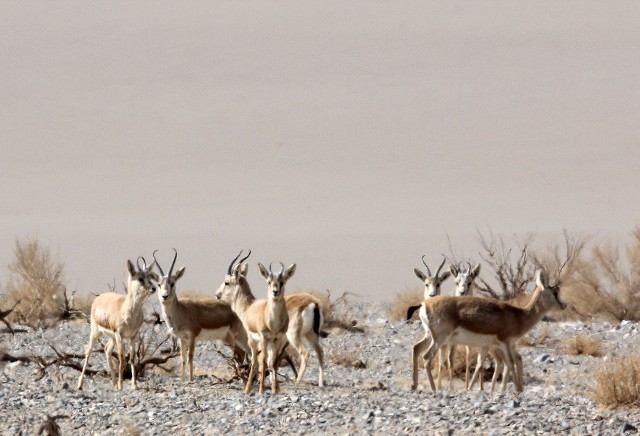
The Tarim Basin subspecies of Goitered Gazelle (Gazella subgutturosa yarkendensis) is noticeably different from the Gansu subspecies. We came across nearly 100 of them while in Lop Nur.
***
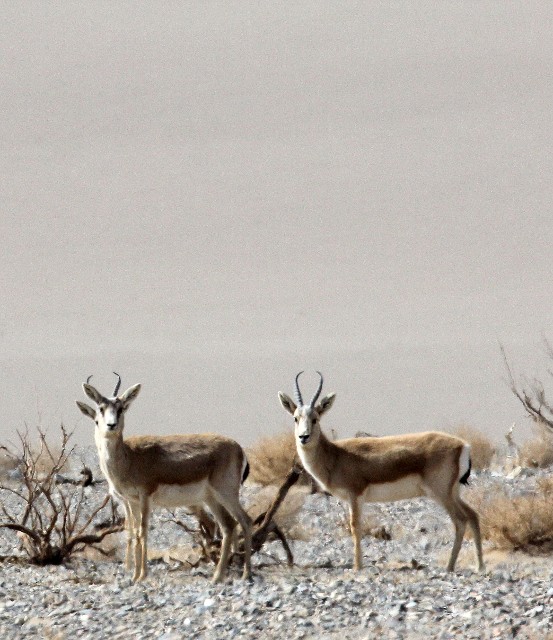
A couple Tarim Basin Goitered Gazelles greeting upon entering Lop Nur's core area.
***
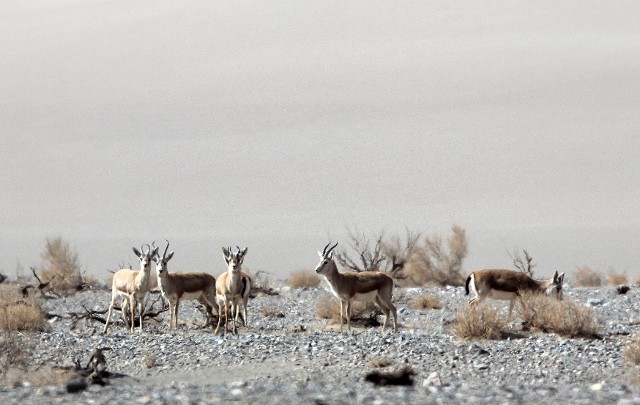
Tarim Basin Goitered Gazelles in Lop Nur.
***
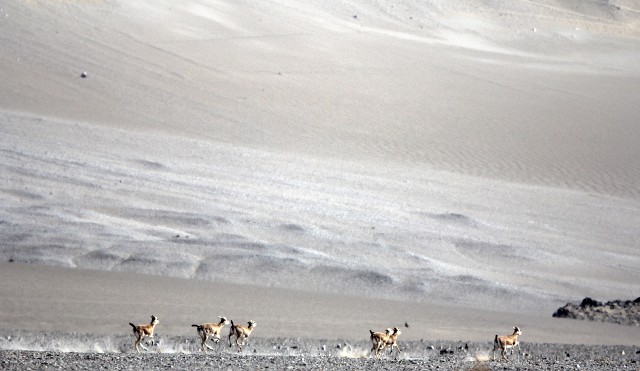
Interestingly, even though Lop Nur is truly a people-free wilderness (one of China's rare people-less areas), the gazelles were very shy and easily spooked.
***
Tarim Basin Red Fox (Vulpes vulpes karagan)
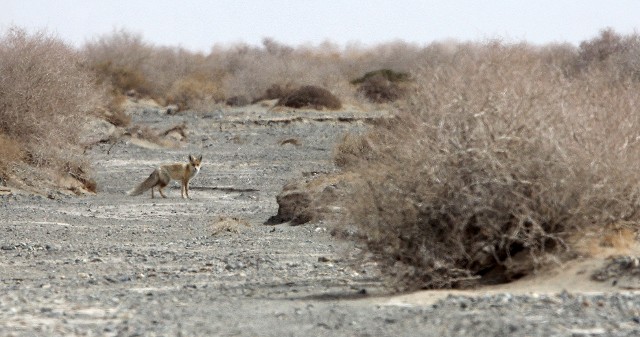
Tarim Basin Red Fox (Vulpes vulpes karagan) were actually quite common in the dry river bed we used as our main track to Lop Nur's core area. Evidently this is the first picture taken of one here.
***
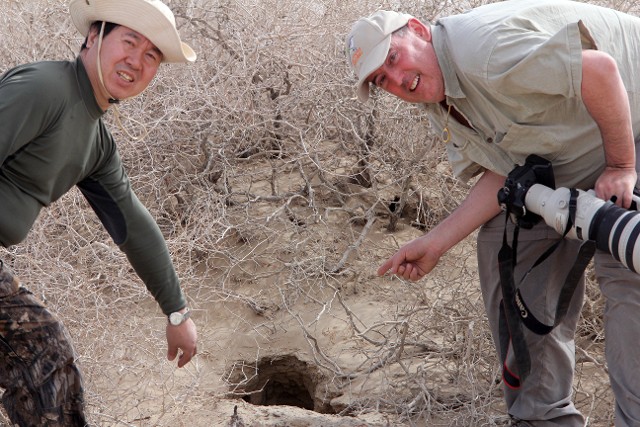
Tarim Basin Red Fox (Vulpes vulpes karagan) den.
***
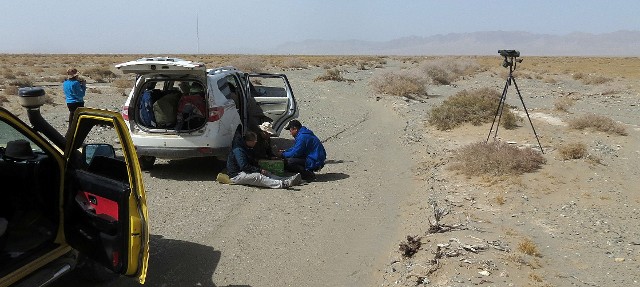
Lunch stop in Lop Nur. This is the riverbed we traversed to enter the core area of the reserve.
***
We stopped periodically during the 25++ km drive through the riverbed, but no camels. We came across more and more Tarim Basin Goitered Gazelles and another fox and eventually reached a “T” in the riverbed where the river branched in three directions, running both parallel and perpendicular to a sizable mountain range. We continued westerly toward a spot in the range where we began to head in to the mountains themselves. It was not long at all before we began to come across an impressive amount of very fresh camel sign – both in the form of fresh tracks and scat. The excitement in the group was palpable! We were definitely very close to many camels! Based on the sign, it was clear that at least 25-35 individuals had just passed through the pass in the range.
We proceeded a few kilometers deeper in to the range and up a fairly steep grade, following the increasing amount of fresh camel sign. Eventually we reached the pass and the Professor stopped just shy of the crest. He gave us an excited look and asked if we wanted to proceed by foot to see if there were camels on the other side! We all leapt out of the vehicles quickly and tipy-toed our way up to the pass to see what was waiting for us on the other side. But aside from a massive expanse of desert, sand dunes and mud-pan, there was little else. The scenery was absolutely stunning, and it was phenomenal to see all of the fresh sign, but we were all alone as far as wildlife was concerned….
***
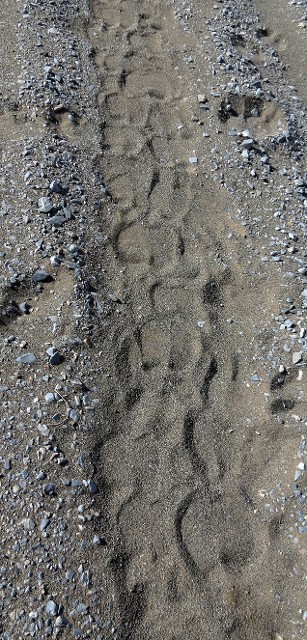
We were now on a veritable Bactrian Camel highway at this stage. There was sign everywhere - and it was fresh! There were camels there this morning no doubt! But where were they now?
***
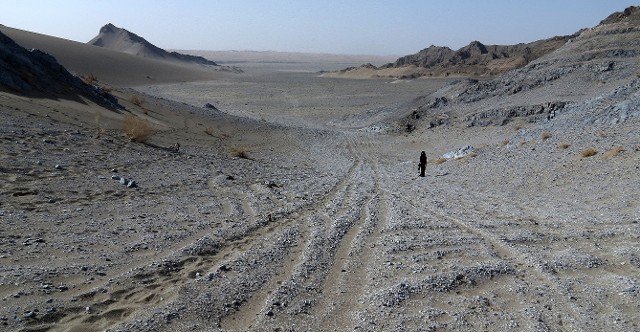
We came over the ledge to see the vast core area of Lop Nur. Too bad there were no camels there! This image does not do justice to the steep grade and sandy nature of the slope here. I was sure glad our vehicles had no intention of going down. The tracks here were of patrol vehicles heading down, NOT up...
***
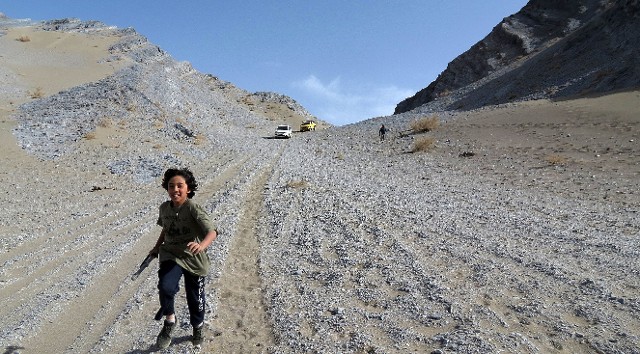
What the...!? I was shocked when I saw our vehicles coming down the hill....I hoped there was another way out of this great basin....There wasn't.
***
Som, Steven, Cokie and I proceeded by foot toward the bottom of the range on the north side. Looking at the very steep grade that was mostly composed of loose sand, I was very glad to know the vehicles were safely on the other side of the hill, as there was no way they could ever make it back up! It was right about then that I noticed both vehicles driving slowly DOWN the hill! I was thinking, “Oh crap!” I could not believe they were actually attempting the hill. Going down was no problem but I just knew they would never make it back up! No way! As soon as the professor came down, I asked if there was another road out of the massive desert we were entering….He replied in the negative…When I asked if we were going to have to make our way back up the hill, he nodded his head indicating that it was our only real option….Crap…
Well there was nothing I could do about it now, so I decided to focus on the now and see if we could spot any camels in the northern sector of Lop Nur’s core area. We continued our desert drive and nearly immediately hit some very rough alluvial fans that were rutted with drainage ditches every few meters, making travel a long and arduous process. We made it a few kilometers in a couple hours and decided to call it a day and camp in a spectacular spot with sweeping views of the vast Lop Nur desert area. The dunes were massive and would be seen for miles and miles. We could see at least ten to twenty kilometers in every direction and we spent considerable time scanning the region for camel action. There was none….
***
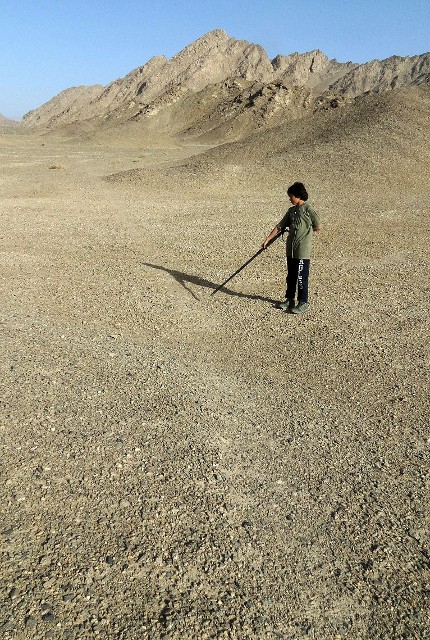
We decided to set up camp near one of the Bactrian Camel trails. Even though this one had not been used in some time, it was nice to daydream about them strolling right through camp the next morning on their way to the springs in the hills behind...
***
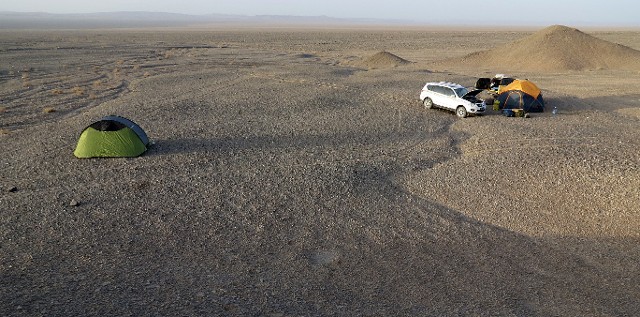
There is little doubt that this will be in our memories of one of the best campsites we've ever experienced - solitude and amazing wilderness. What more could you possibly ask...Oh yes, Wild Bactrian Camels please....
***
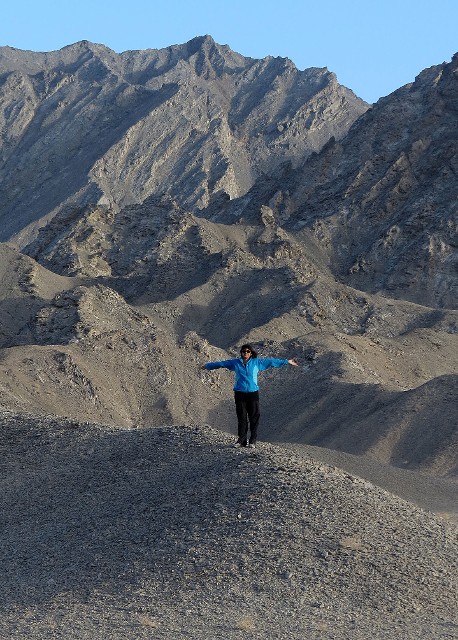
We were all on an extreme emotional high simply by being in this amazing place. Even if we were to be denied wild camels, we were all just to happy to be here.
***
But the spot was absolutely sublime. Desert wilderness camping simply could not be better. 50-60 kilometersin to a roadless desert wilderness, with no other humans for over 100 kilometers, warm (but not hot) temperatures, no wind or dust and just our Xinjiang Team to share the air! We had plenty of food and wine and a good dose of optimism that there was still ample opportunity to spot a wild Bactrian Camel in the coming day or two. Cokie, Steven and I played Frisbee between scanning sessions on one of the nearby hills. What an amazing spot – even camel-less this was one of our top stops on the entire trip.
The next morning, I woke before sunrise to scan more for camels crossing the desert. I thought I was surely the first up but found Professor Li already scanning himself. I could sense that he was now worried that we were not going to see any wild camels, so he was trying extra hard to see if he could spot some for us. I was already satisfied though. I mean of course, I would have really loved to see a wild camel, but simply being in this unparalleled wilderness with new friends and my family was one of the high points of my life already. I could feel how both Som and Cokie also loved being in this special place. We all would have been thrilled to see a camel but we were all just so happy to be in Lop Nur. And to know we were the very first foreign tourists to visit the area made it all that much more amazing. We were not just cruising through the main tracks of the reserve; we were deep, and I mean deep, in to the core area of the most remote and inaccessible places in China!
***
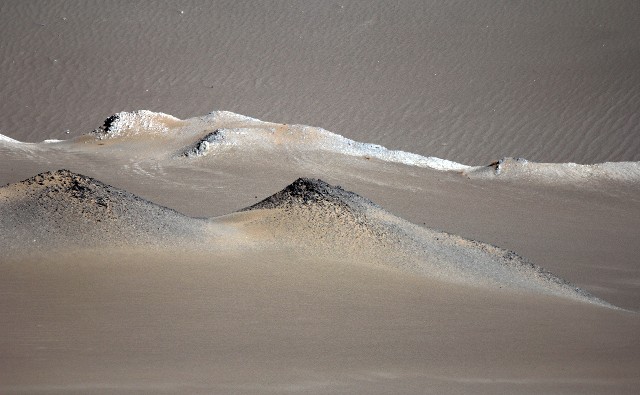
The landscapes and scenery of Lop Nur's core area are stunning.
***
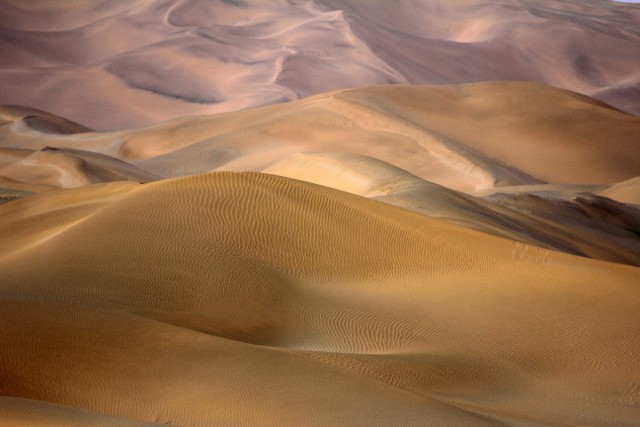
The immense dunes of Lop Nur near our campsite.
***
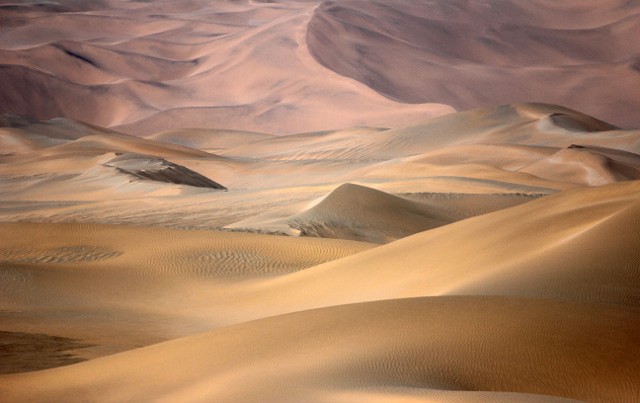
Simply amazing.
***
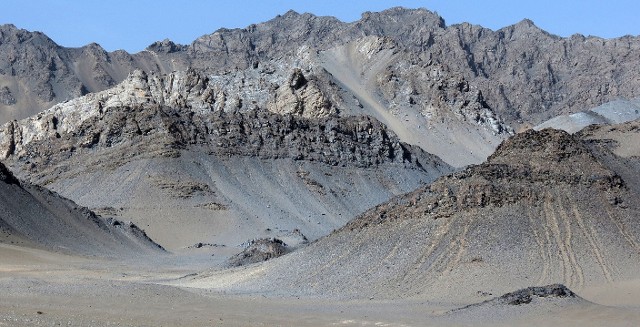
The colors of the minerals in the surrounding mountains were beautiful but sadly most likely indicative of a rich geology that will no doubt soon be exploited by a nation hungry for money. (Major sections of Lop Nur have already gone the way of the mine...Gold in particular)
***
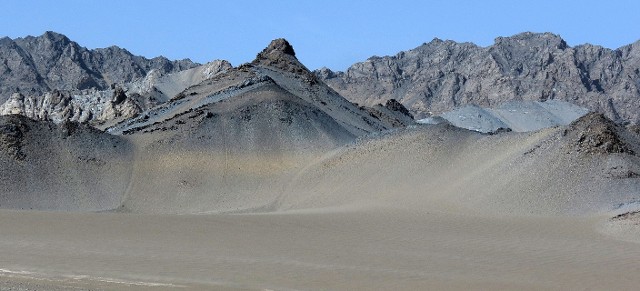
Spectacular!
***
Well, I now look back and realize that it was a good thing that we were all so happy just to be in Lop Nur, and that camels would have just been icing on an already amazing life experience, because the next two days remained utterly camel-less!
After miraculously making it back up the sand-hill from hell (after a couple attempts and deflating the heck out of our tires), we slowly proceeded back through the riverbed eventually returning to the main track hoping to spot camels. No such luck. For the next 400 or so kilometers through the desert we were still deep in Lop Nur – it is seriously one of the world’s largest nature reserves – it goes on forever! We passed through numerous habitats and noted camel sign in virtually in every one. Professor Li took us initially to one of the best places to spot them and we missed them, even though a few days before, one of his contacts in the reserve informed him that they spotted over 72 individuals in the very location we had just spent two days!
We were determined to spot one. But nothing….nothing but more and more spectacular desert. We did come across some more bones but nothing living…As we eventually reached the southern edge of the reserve, we gave up hope for ever seeing a wild Bactrian Camel. After another full day of driving and searching, we eventually found our way to paved roads and other people after spending four days in the wilderness of Lop Nur. We only had three species on our list but somehow no one was disappointed at all. The adventures we shared in those four days were life-inspiring. The experiences were priceless – even better than seeing a wild camel. Well, almost…
We had over 1000 kilometersof desert still to cross before we hit the sector of the trip that would be phase two of our Xinjiang expedition. We were heading to Xinjiang’s northern deserts to search for other species of mammals, but before we could even contemplate such an extension, we had to cross the Kumtage and Taklamakan deserts! This was no small task. Granted it was 2013 and there were paved roads (mostly) and petrol stations now…but it was still a slow go. For some insanely stupid reason, Xinjiang has the slowest posted (and enforced!!!) speed limits ON EARTH! For some reason, someone in charge thinks that 60 km/hr (about 36 mph) in the most wide open expanse on earth is as fast as people should be allowed to go on excellent roads….And with speed traps everywhere, we were not about to cross the limit too often….So what should have been a 20 hour drive was much longer, covering two very long days. Again, the desert scenery was outstanding but the trip was frustrating at times.
On our second day passing through the desert, and in the middle of the Euphrates Poplar (Populus euphratica) Forest and traveling the course of China’s longest inland river, the Talimu, we drove by a camel sitting in the western extension Lop Nur Wild Camel Reserve. I was sure it was a domestic camel but wanted to stop and take a few pictures anyway, as it was the first camel of any sort we had actually seen on the trip. So we stopped and as we proceeded to get out for some pictures, and I noticed Professor Li taking some serious looks at the beast sitting in the white sands of Lop Nur.
***
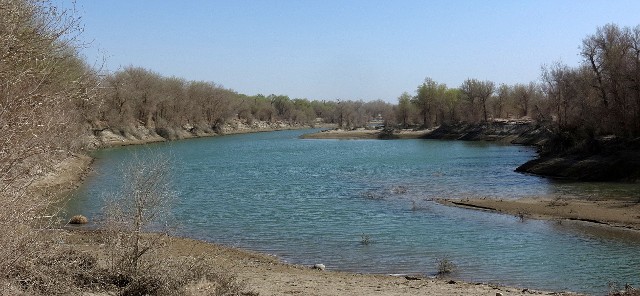
The Talimu River, China's longest "continental" river. At 2400 kilometers, it is the longest completely inland river in China. The river supports a diverse ecosystem dominated by Populus euphratica forests.
***
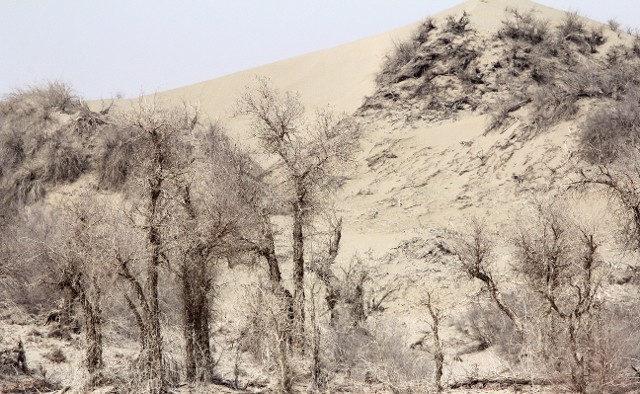
The immense Euphrates Poplar forests, supported by the Talimu River, are all that maintain the separated nature of the Taklamakan and Kumtage Deserts. The dunes in this image are the dunes that represent the beginning of the huge Taklamakan Desert in Xinjiang's southern regions.
***
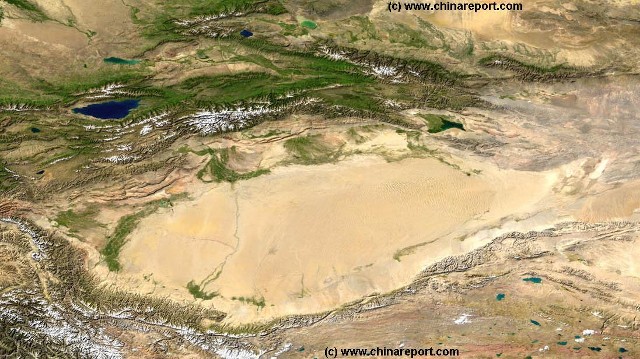
The Taklamakan Desert is one of the world's largest. The right section of the desert is where the Kumtage begins. The snow-capped mountains in the center and upper areas of the map are the Tianshan Mountains, where we searched for other species later in the expedition. (Linked from www.chinareport.com)
***
Bactrian Camel (Camelus bactrianus)!!!
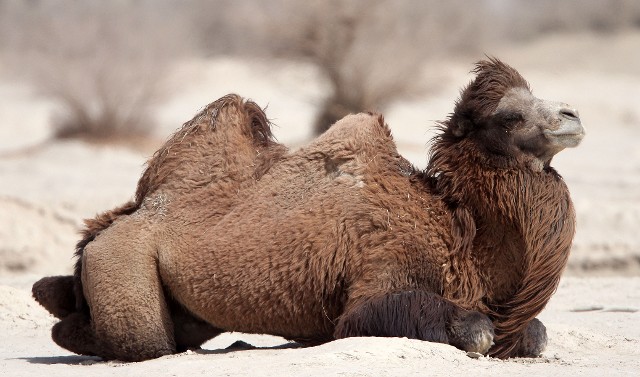
Our very own Wild Bactrian Camel! Well, that's what we believed for the rest of the expedition....And then we noticed that tiny little pierce below his nostril....
***
Professor Li was a bit unsure what the heck this camel was doing here. We were still in the Lop Nur reserve, albeit the periphery, and there was this camel. He explained that we were about 250-300 kilometersaway from any domesticated camels and that there should be no domesticated camels anywhere near here. Maybe it was not domestic after all? We all got out and started to take some much closer looks at the camel. There was no evidence of nostril reins, calluses or anything that would indicate domestication. It was unable or unwilling to get up, even when we approached closely, so were assuming that it was very ill and maybe in the last stages of life and came to the Talimu River basin to be near water during its final stages of life. After looking closely at certain features like hump size, leg and hip development, fur condition and other visible characteristics, the Professor concluded that it was in fact a wild camel!
We were all very excited! We were simply thrilled to see our only wild Bactrian Camel on our last possible day the Lop Nur region! I was more than happy to accept the opinion Professor Li, but I did still photograph very carefully every possible angle of the animal to make sure I had ample evidence to verify the sighting. I noticed a small scar on the lower rostrum of the camel, but did not think much of it….Until we got all the way back in Urumqi and we had a chance to look more closely at the images…..Damn! It ended up not being a scar at all – it was a small piercing….a piercing that allowed a small pin to be placed all the way through the nose/rostrum to which a rope or rein could be attached….&#$^#%!!!! It was not a wild camel after all….Initially I thought the pierce may have been a wound as I could find no evidence of such scars with a thorough internet search of the various reins of domestic camels, but when we arrived back at the professor’s home in Urumqi, we searched his substantial image collection and eventually found a picture of a camel he took in to the desert during one of his epic expeditions in to Lop Nur (that was eventually made in to a movie!) that sported the very pierce we were seeing on our so-called wild camel….Boo!
***

Bactrian Camel (Camelus bactrianus) chewing its cud. This one was no doubt feral exhibiting nearly all of the attributes of a wild camel.
***
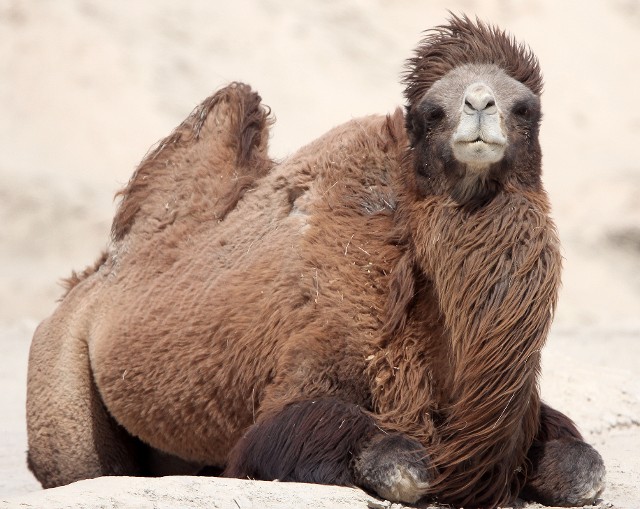
Bactrian Camel (Camelus bactrianus). This one was so far from humanity and any source of domestication. Professor Li even postulated that it was the product of a hybrid-wild mating. Maybe it escaped? Maybe it was released? It was so deep in to the Lop Nur Reserve it begged many unanswerable questions. We won't count it as wild due to this but it sure was exciting when we thought it was!
***
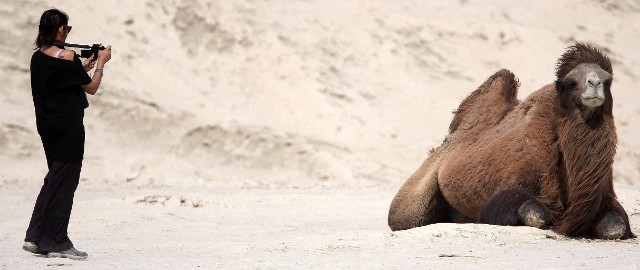
Seeing Som so near this animal made us appreciate just how large they are. This camel was no doubt ill as it refused to react to our presence in the slightest.
***
Interestingly, we were not devastated by the trip back down to a mere three species of mammals in the better part of a week…Our experiences were simply too rich to allow for any serious disappointment, but there were still several unanswered questions about this particular camel. Why was it so far away from humanity? Why was it so far inside the Lop Nur Wild Camel Reserve? Why did its physical characteristics (e.g., smaller leg and pelvic and pectoral musculature than domestic varieties)? Why was the fur so much more dramatically wild type than any of the domestic ones we saw in high numbers throughout the remainder of the trip? (Domesticated camels’ fur tends to be much thicker and more matted than their wild cousins.) After considerable discussion back in Urumqi, we concluded that it was most likely a domesticated animal that had either been released or escaped and was living in the wild for some time. Its phenotype and location were simply too wild for it to have recently been domesticated. Professor Li even theorized that it could have been a hybrid of a wild type and domestic mating… All of these will questions that will forever remain unanswered…But we sure did enjoy the few days we had believed we actually saw a wild camel! I only wished had waited a bit more before I had sent all those emails to my friends bragging about our sighting!
Oh well, so the way it goes in wildlife watching….Sometimes you see a wild Bactrian Camel and sometimes you don’t….Anyway, for several days during the trip we had a high degree of satisfaction on our sighting. Upon concluding our Tarim Basin desert portion of our trip, we made a slight change in our plans. Originally we had planned on crossing the Tianshan Mountains from the south. The Tianshan Mountains separate northern Xinjiang and the southern Tarim Basin sections of Xinjiang. But Professor Li got reports of a very significant storm that was coming in and to slam Xinjiang, so we decided to head a bit east-northeast to the ancient city of Turpan for a bit to check out that section of the Silk Road and to experience the Uyghur culture.
***
Turpan
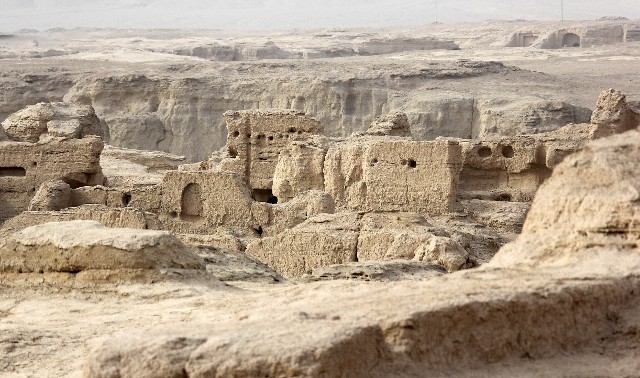
Turpan was an unexpected gem on the trip. After Jiayuguan and Dunhuang, we were convinced we wanted no more touristy stops, but Turpan was outstanding. These are the famous Jiaohe Ruins situated so beautifully on a table-top plateau in a river valley in the middle of Xinjiang's Gobi Desert.
***
Turpan town sits right in the heart of the great Turpan Depression and is 154 metersbelow sea level, making it the third lowest place on the planet. Our goal was to see the ancient city of Jiaohe, which is over 2200 years old and is situated spectacularly on a table-top plateau island in the Yamaz Valley. I knew very little about the ruins themselves other than having seen some images on Google Image Search a few weeks earlier, so I was not fully prepared for the stunning size and setting for this amazing site. We owned the place as it was still deep in the low season, so we took time to explore the various dwellings and crevices of the ruins for the better part of a morning. Seriously spectacular! We spent the rest of the morning exploring Turpan town, eating some Uyghur food and strolling a small market nearby. Great diversion – thank goodness for that storm as I was contemplating skipping Turpan.
***

The Jiaohe Ruins went on forever!
***
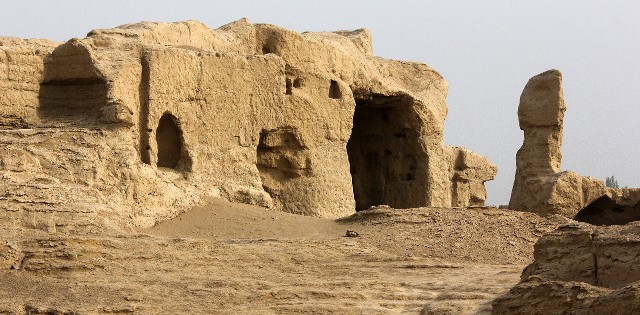
I tried to imagine the civilization that created such a city 2200 years ago. Thankfully the dry desert climate allowed the ruins to remain so well preserved.
***
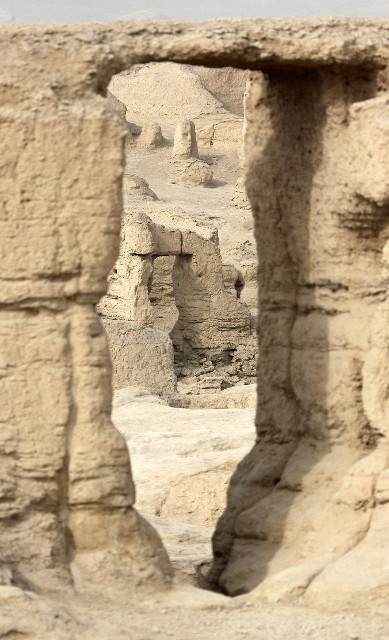
Awesome!
***
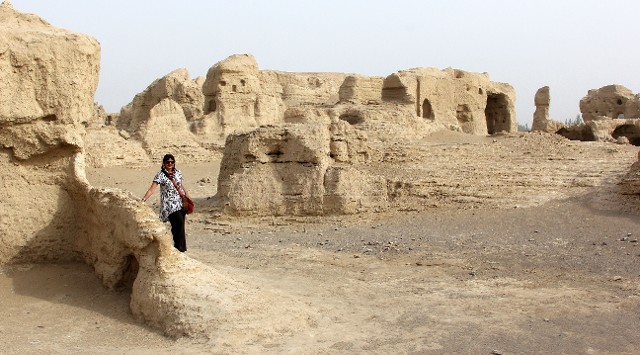
Once again, we owned the place!
***
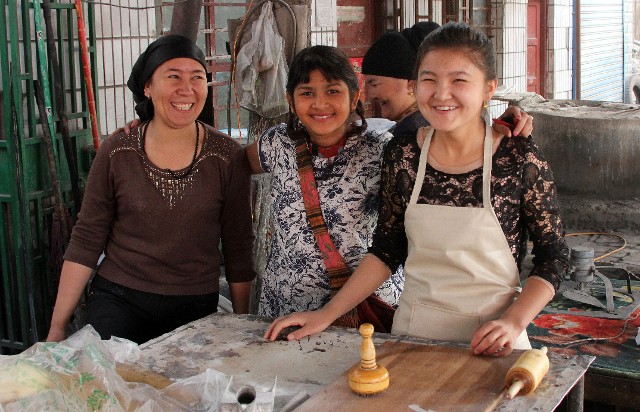
One of the highpoints of our day in Turpan was simply hanging out with the local Uyghur people in a small market on the outskirts of town. Som was of course thought to be a local - people came up to her expecting her to speak Uyghur!
***

Fresh stone-cooked bread was a nice change of pace.
***
Well, the Professor was not mistaken about that storm. Once we left Turpan, we traveled toward Urumqi, the capital of Xinjiang, and a sizable city in its own right, only to be greeted by fierce winds, quickly dropping temperatures and an eye-irritating sand storm. They had even closed the main highway the day before. Definitely good choice to go to Turpan first...
Before heading to the northern section of our trip, we made a quick stop in Urumqi so we could get some work done on the professor’s vehicle. It was here that we started to see that Professor Li was quite the celebrity in Xinjiang. The car dealership had is picture and exploits plastered all over their main wall! Evidently he is one of Landwind’s celeb promoters! I love how China actually does raise scientists to this level very often. I wish my own country would give such respect and deference to our scientists. We were all very thrilled to see his pictures and bio on the wall of the dealership.
***
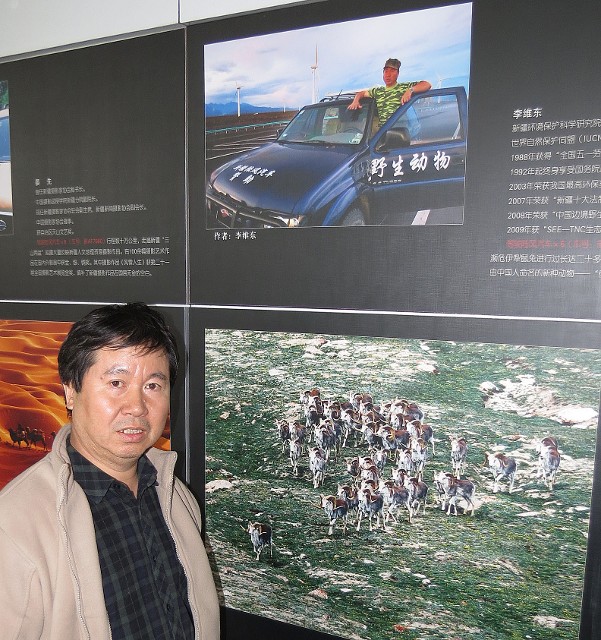
Professor Li's pictures were plastered all over the auto dealership! One famous dude for sure!
***
Wutong Gou Desert Attraction
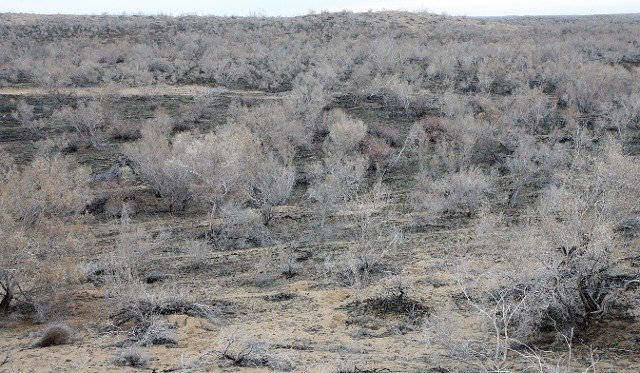
Wutong Gou went in all directions for hundreds of kilometers. There really seems to be no information on the site available in English but the Professor knew of it and was aware that it is a great place for wildlife, when there is not a "Code Red" storm slamming the province...
***
Once on the road again, it became clear quickly that the professor’s weather prediction was going to prove accurate. The temperatures were dropping quickly and the normally clear blue skies were clouding up dramatically.
We were heading to a desert location that he visited often that had the potential of adding a few new species to our depressing list. Initially we left the main road (G216) and proceeded on some very rural roads, none of which were marked or ever describable to others, but eventually we made it to what I believe was Binghu Reservoir for some brief birdwatching, where we spotted several species of ducks and some common cranes. By this point of the trip I was desperate for wildlife so some birding was a very welcome option. But the outside temps were near freezing now. Steven informed me that the national weather bureau had been sending out warnings of a “Code Red” storm about to hit Xinjiang. He explained that “Code Red” was the second worse storm category….Great….We were planning on camping this evening.
Our destination was a remote, and unknown to anyone outside the Xinjiang 4X4 recreationalist circuit, desert destination called the Wutong Gou Desert Attraction. Mainly a weekend desert destination for Urumqi 4X4 clubs, Wutong Gou is a vast (300 km+ across!) desert expanse comprised mainly of vegetated sand dunes. What caught my eye immediately was the amazing wealth of rodent holes in and around the dunes at the bases of the scrub. Professor Li told me that there were at least five species of rodents possible in the desert, so I had high hopes of a good night of trapping! But then again there was that damn “Code Red” storm screaming toward us….It was only 6 PM and already below freezing…
We were a couple hundred kilometers away from Urumqi by this point and lodging options were limited. Legion 222, the nearest military town, was pretty desolate, and camping was quickly becoming a non-option due to the high winds and freezing temps. Wutong Gou had a visitor’s center of sorts but everything seemed to be locked up tight. However, after the professor scoured the grounds a bit more thoroughly, he found an Uyghur gentleman stashed away in the basement of the center who let us in and offered us a couple basic rooms in the center to spend a nice warm evening. Whew! Seriously, I think this sort of thing could only happen in China…
***
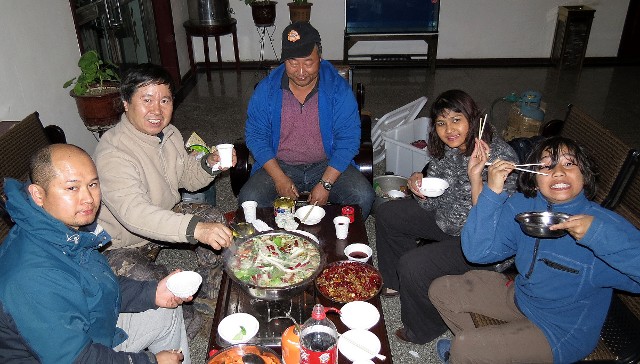
A home-cooked dinner in the lobby of the visitor's center of Wutong Gou! Thankfully we found someone to unlock the joint so we could keep from freezing to death!
***
Before dark we set all 12 of our traps at various locations Professor Li thought would be productive and yield a good variety of species. He knew the holes by species and we were hoping to catch the resident rodents which included Red-tailed Gerbils, Great Gerbils, Northern Three-toed Jerboas, Gray Hamsters and a few other possibilities. I had high hopes of boosting our species list but the storm made the entire effort fruitless. After a fun evening joking, drinking and eating in the lobby of the visitor’s center, which of course we completely owned, we checked the traps early the next morning to find them all empty. Of course the storm kept all living creatures of the Wutong Gou indoors, with the exception of course being the stupid Homo sapiens visiting the area…It was damn cold!
***
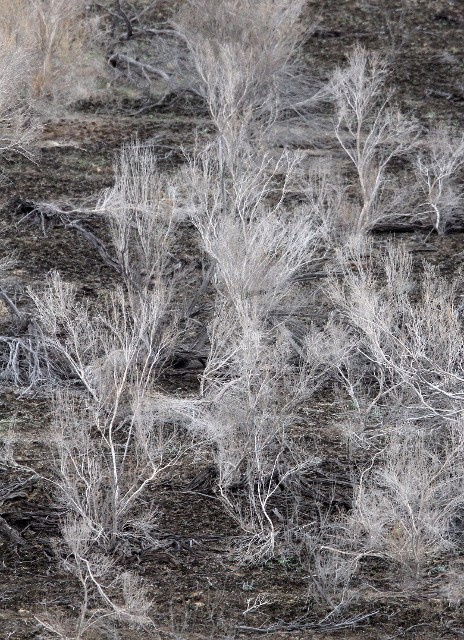
The vegetation of Wutong Gou was rather homogeneous but it provided prime forage for a very diverse assemblage of Rodentia species.
***

The entire desert at Wutong Gou was riddled with rodent holes. We couldn't even walk on the dunes without falling through. Too bad we were not seeing any of the residents!
***
We did a brief game drive that morning before breakfast. Aside from a very impressive dune desert, and some fresh Corsac Fox tracks, there was little action at all. But just before we arrived back to the visitor’s center, Som noticed a largish rodent directly next to the car. It quickly disappeared before I could get a look, so the ID temporarily eluded us. We stopped the car and waited several minutes silently. Eventually another one further up the hill came up to take a look at all the commotion. Got it! A Great Gerbil was sitting upright looking directly at us! I was amazed at how large these gerbils were. For the next half hour or so we watched many individual Great Gerbils popping up and down and scurrying about in the dunes of Wutong Gou.
***
Great Gerbil (Rhombomys opimus)

Finally we got 'em! Great Gerbils were everywhere at Wutong Gou. I mean you could not even walk on the dunes without falling through their tunnels.
***
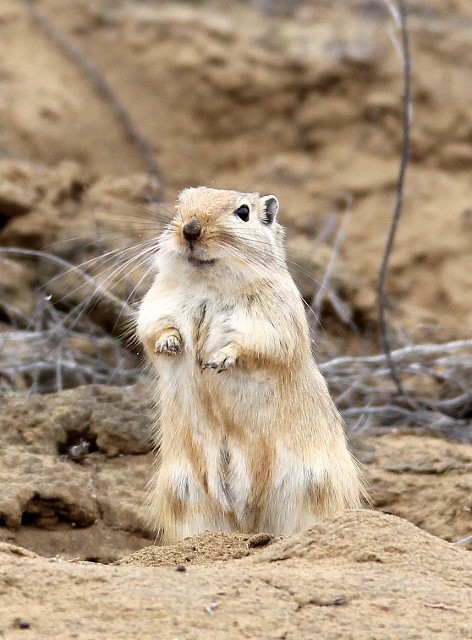
It took a while before they started to show themselves. The "Code Red" storm kept them inside a bit longer this morning....But we finally got a bunch of them.
***
Professor Li told us that on a nice warm summer morning, you could see thousands of them, and the sheer number of large holes in the dunes attested to this fact. Great Gerbils are massive being nearly the size of a Prairie Dog – they are a very impressive rodent. Som got a good look (and I a fleeting glance) at a Northern Three-toed Jerboa hopping around the dunes as well. Now we were up to five species!
***
Karamori National Nature Reserve

Karamori National Ungulate & Nature Reserve is a very different ecosystem dominated by various grasses and low profile shrubs which seem to go on forever. Outer Mongolia is just a bit off in the distance in the direction of this image.
***
We departed Wutong Gou after breakfast and continued north through the northern desert. We proceeded toward our ultimate goal, Karamori (pronounced more like Karameri) National Nature Reserve, in hopes of seeing more Przewalski’s Horses, wild Kulan or Mongolian Ass, North Xinjiang Goitered Gazelles, etc. The drive north was spectacular but wildlife-less. We managed a few distant gazelles but no sign of wild horses of any species.
As we entered the southern sector of Karamori Nature Reserve, we were greeted with the largest assemblage of coal mines and coal power plants I had ever seen anywhere! Seriously, there at least ten different and tightly concentrated and massive coal power plants punctuating at least 100 square kilometers of the Karamori. I had never seen such a depressing sight - something that happens way too often in China. Nature reserves here are made to be exploited and destroyed in the name of profit like virtually no other country on earth.
***

Welcome to Karamori National Nature Reserve, sadly home to some of China's largest coal deposits...
***
The skies were clear and clean this morning but when all of these fresh power plants go on line in the coming year or so, this will no doubt be one of the most polluted places on earth. And as we proceeded north deeper in to the core area of Karamori, I noticed dozens of tell-tale white trucks with people exploring the desert with special equipment to find even more coal deposits for even more power plants….I am afraid that Karamori National Nature Reserve and its resident wildlife (which so far was nonexistent) have a very bleak future indeed.
Finally we made our way further north and left “Coal Alley” and entered some more pristine desert. Our “Code Red” storm, which for most of the morning left us alone and even gave us the impression that it was over, returned at this point with a vengeance! Initially there was a rapid temperature decrease followed by some light snow flurries, but before long, we were driving through the Karamori Desert in full blizzard! What a contrast! Just a few minutes before we were in a warm and sunny day thinking the storm was finished and now we were in white-out conditions!
***
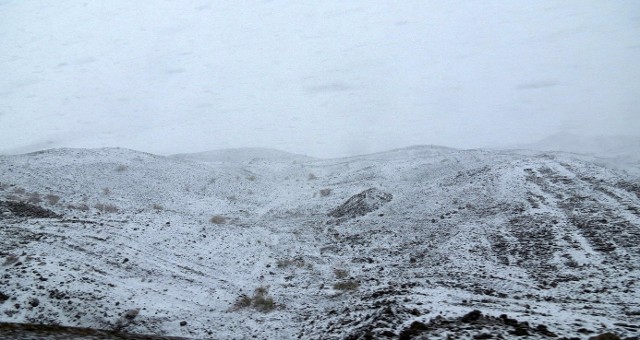
Blizzard in the Karamori! Wow what a storm! A couple hours earlier we were in T-shirts and shorts!
***
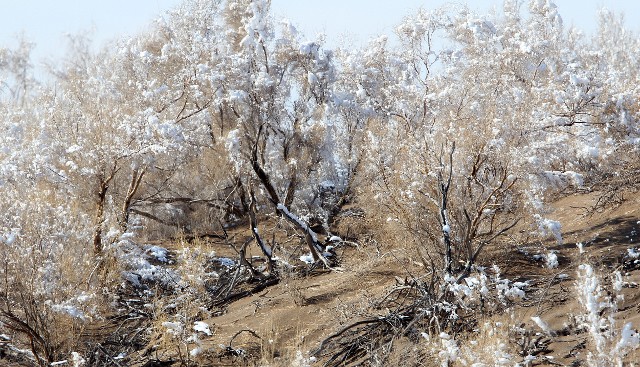
The storm temporarily transformed the desert in to a winter wonderland.
***
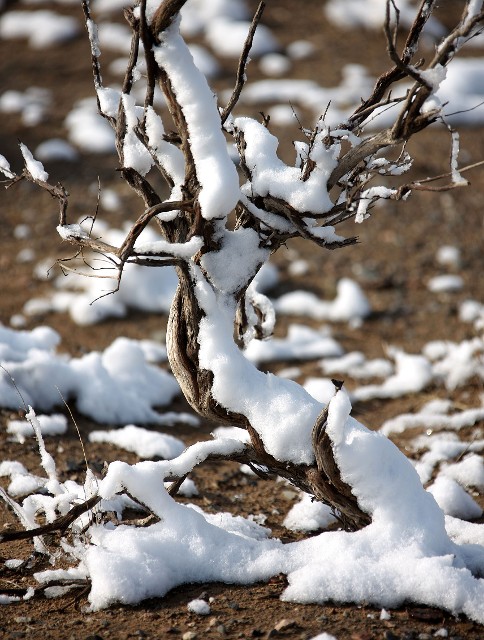
Snowy Artemisia bush...
***
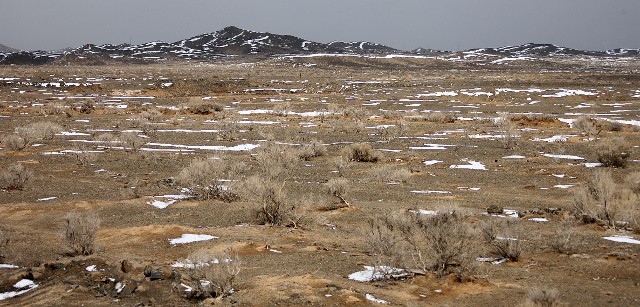
Karamori was spectacular.
***
We made it further north, about 50 kilometersdeeper in to Karamori, to a small village where we had some nice Kazakh food for lunch. For a brief spell the storm subsided and we decided to try our luck with a road that Mr. Fung knew and had seen Kulan in the past. So we headed west toward the Mongolian border over the vast Karamori Desert steppe. We spotted many groups of Northern Goitered Gazelles but so far no Kulan. We heard reports of the Przewalski’s Horses about 150 kmnorth of us but decided to pass as the mere cost of driving that far north was not worth the chance of spotting a species we’d already seen on the trip, so we decided to focus on the Kulan instead as they populated the more central and southern portions of the reserve.
We proceeded eastward and eventually made it to a high point in the reserve where we could break out the scope and binocs for a serious scan. The storm has subsided and visibility was now good – well over 10-20 kms in all directions perhaps. Sure enough, I spotted a very small and distant horse-like silhouette toward the southeast. I was not sure if it was a Kulan or a simple domestic horse, but we all decided to B-line it toward the shadow to give it a better look. So a few kilometers of off-road desert crossing later, sure enough we finally had our Kulan! We followed it across the desert for a bit but eventually left satisfied with distant and poor quality images. We spotted many groups of gazelles as well, but all of the wildlife here seemed extremely shy and spooked. Clearly hunting/poaching is still a serious issue in Karamori.
***
Kulan or Mongolian Wild Ass (Equus hemionus hermionus)
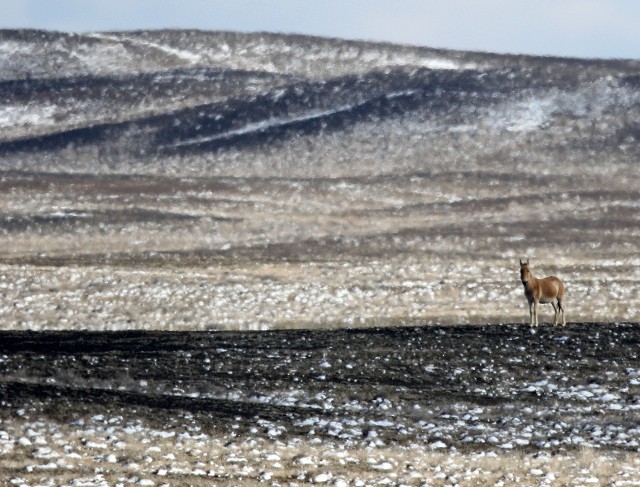
I was very fortunate to spot this very distant Kulan. We tracked it for several kilometers over the desert until it allowed us close enough for this image, and we confirmed our seventh species for the trip!
***
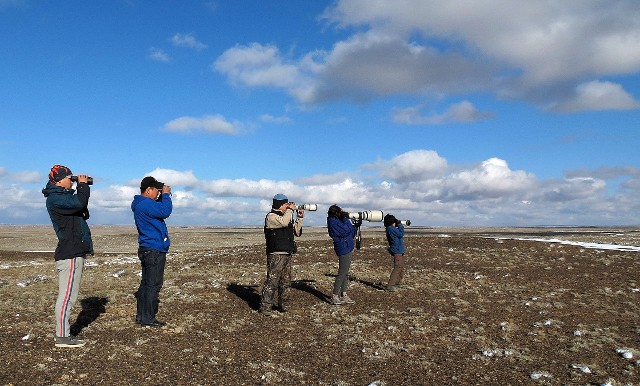
Team Xinjiang shooting our one and only Kulan! (So far...)
***
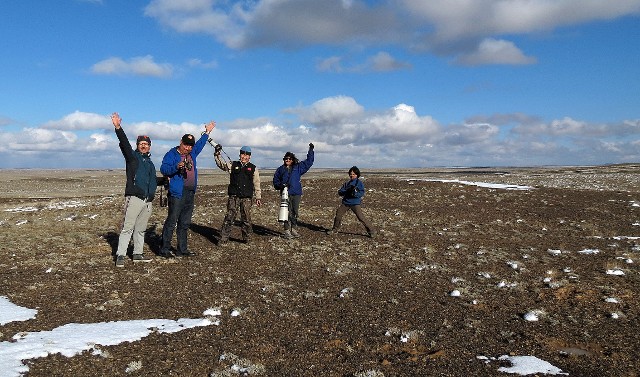
Kulan baby!
***
North Xinjiang Goitered Gazelles
(Gazella subgutturosa sairensis)
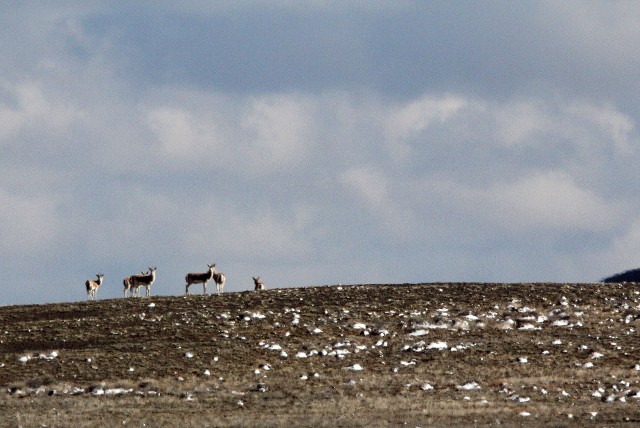
We got our third of the four subspecies of Goitered Gazelles in China. The North Xinjiang Goitered Gazelle (Gazella subgutturosa sairensis) was very common in the core area of Karamori. I was not aware of this being a new subspecies or I would have attempted better pictures...
***
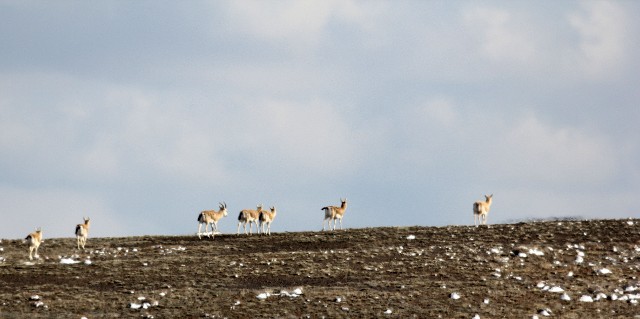
North Xinjiang Goitered Gazelles in Karamori Ungulate Reserve.
***
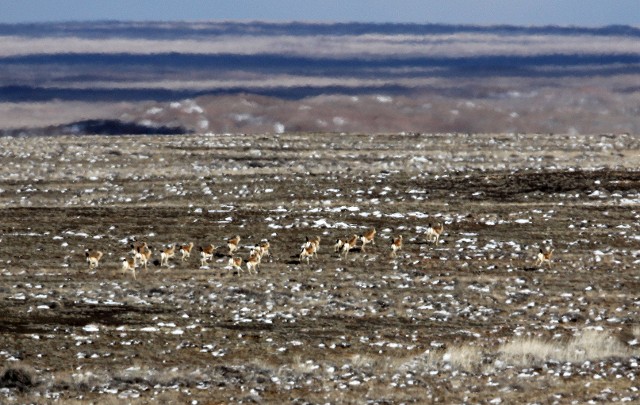
The gazelles were seen in many herds with totals in the hundreds for the afternoon. They were at times very camouflaged with the landscape so I am sure we missed as many as we spotted.
***
Very happy with the addition of our 7thspecies, we proceeded south to find some lodging options. At this late stage of the afternoon, the storm once again returned, but this time with serious intent. We were driving in near zero visibility at points and the desert became a white terrain more reminiscent of the Great Plains in the middle of winter than a desert in mid spring. Cokie was excited and was telling us how unusual it was to see a desert with snow. This was a seriously spectacular sight. We finally found some lodging down in Coal Alley ironically. The entire place was disgusting and filthy but it was there and we were cold and tired.
The next morning we got an early start (9:30AM!) and proceeded westward through the Karamori again in hopes of seeing still more Kulan if we were lucky. The desert was spectacular. The storm was finally gone for good now and the desert scrub was beautifully decorated with snow and color. This was truly a morning to remember. We drove for nearly 50 kilometersbefore meeting up a dirt track and underpass (below some train tracks). The professor was trying to find the access to a spring that he once spotted many Kulan in the previous season. We did find the access point and even some very fresh sigh of nearly 20 individual Kulan in the sand, but no live critters. We opted to continue toward Urumqi rather than travel overland again toward the spring. With this much water around, there was a very low chance that we’d find any of the Kulan near the spring anyway. But I did note that the tracks we had just seen were all very fresh and were headed eastward. So I was optimistic that we still may stand a chance to see the individuals who had made these tracks up the road.
Sure enough, about ten minutes down the road to the east, I spotted about 18 or so wild Kulan directly next to us on the main road! Great grouping in great light! What a spectacular departure gift from Karamori National Nature Reserve! We shared some great morning light with these splendid equids for the better part of a half hour this morning. I could not help but wonder what their future would be like with all the very destructive human activity in their home.
***
More Kulan (Wild Mongolian Ass)!
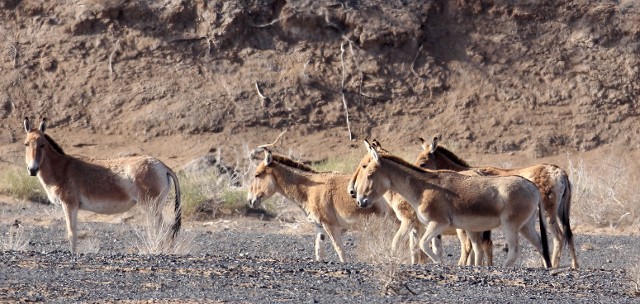
Although I was contemplating heading a different route, we stayed the course on the main road heading east toward Mongolia, and were rewarded with an outstanding sighting of a large herd of wild Kulan!
***
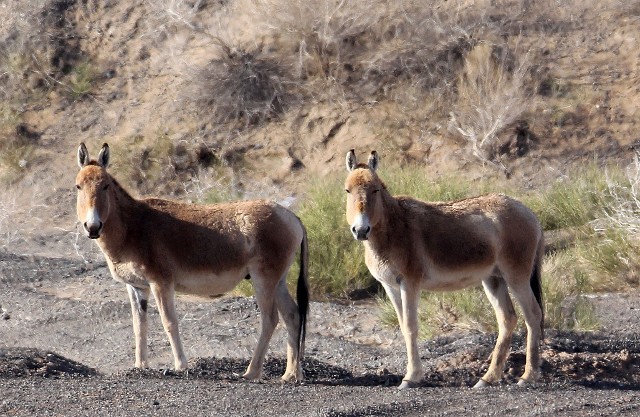
Evidently the Kulan and other mammals of Karamori were much more common as recently as a couple years ago, until a wicked storm came in and killed almost 90% of all of the animals in northern Xinjiang!
***
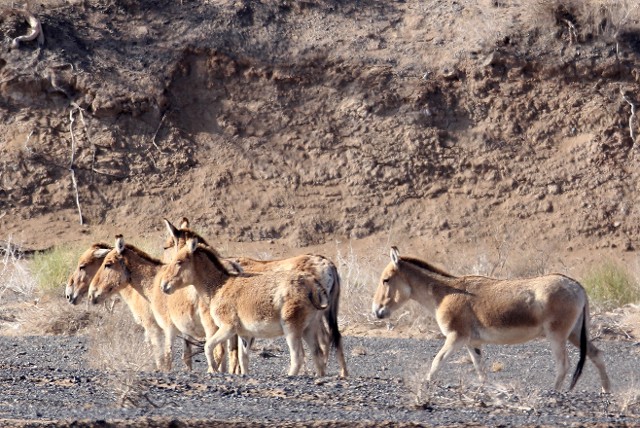
Mongolian Wild Ass!
***

We all felt very lucky to see such a nice-sized herd in such a ravaged ecosystem.
***
Finally arriving in Urumqi, we were all ready for some nice lodging options and good food. After learning about the obscene prices for the western-quality lodging in town, we finally found our way to the “Northwest Petroleum Hotel”, a five-star Chinese standard hotel affiliated ironically with the coal and petroleum industry….Damn! Well, the traffic and congestion of Urumqi narrowed the options seriously so we had no choice….It was a very nice hotel anyway, even though our bill helped subsidize the frickin’ oil industry….
We still had one additional day of wildlife options in store. Since the storm redirected us earlier in the trip to Turpan, we had still not yet attempted the Tianshan Mountains’ fauna. I was not sure what to expect as the storm has surely nailed the range even more seriously than the desert. Professor Li contacted his colleagues at the Tianshan Meteorological Station to check the conditions and they gave us the green light for an attempt in the mountains the next day.
***
***
Tianshan Mountains
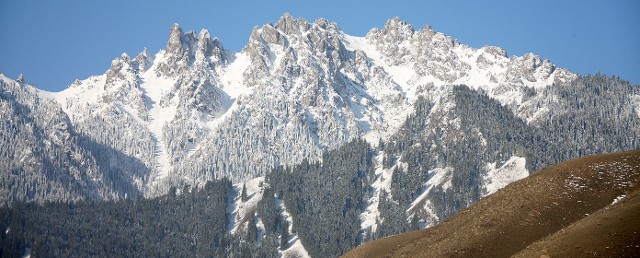
An amazing spring day in the Tianshan Mountains.
***
Our main target was the very rare Ili Pika, the very species that Professor Li actually discovered and described some thirty years prior. The professor told us that no one had seen an actual individual in over twenty years, but we were going to head to their core area and hope for other species along the way.
The Tianshan Mountains are an immense mountain range that basically divides western Xinjiang in to two sections – north and south. On clear days, one can see the Tianshan Mountains easily from Urumqi as they are located just a few kilometers to the south of the city. Our destination was a bit further to the east/southeast of the city along an ancient Silk Road route that is now the course for G216 following the Urumqi River to Tianshan Mountain Glacier #1. It was here that the professor had located a good population of Ili Pika some decades earlier. The glacier is located about 100 kilometersdeep in the Tianshan Mountains and the road is very slow going and surprisingly filled with large trucks.
It did not take us long to learn why there so many trucks on the road; the first 40 or so kilometers of the Urumqi River Canyon was filled with chemical factories, gold and coal mines and power stations. Almost immediately upon entering the spectacular Urumqi River Gorge and Canyon, we were greeted with the worst air pollution we had ever seen in our lives! And we’ve lived in Shanghai, China for three years! This was the absolute most polluted place ever. The mountains on this majestic post-storm morning soon disappeared behind an impenetrable blanket of toxic smoke. Our lungs filled with the toxins of the factories and our eyes stung and our throats soon burned painfully. I could not believe what we were observing – this was severe even by the very low China environmental standards.
***

Smack in the center of the spectacular Tianshan Mountains, we found the most polluted place we had ever seen on Earth. Coal power, toxic and unregulated chemical factories filled the valleys. We choked our way through this incredibly abused region. Sadly only in China could one see this level of pollution and utter disregard for people and the environment.
***
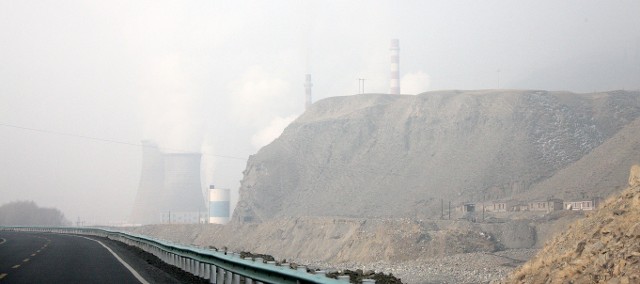
We went from a crystal clear spring morning with sweeping views of one of China's most spectacular mountain ranges....to this...
***

This was a seriously treacherous road even without the overloaded trucks!
***
Professor Li informed us that he was actively trying to have the entire area declared a nature reserve for the protection of the Ili Pika and the Siberian Ibex, but so far the powerful capitalists who operated these evil factories were simply too powerful, even for the provincial government, who supported the idea of a nature reserve. In China, capitalist interests are far more powerful than even the west can imagine. There were over ten thousand people employed in the valley with the factories, and even though they had a maximum life expectancy of 40-50 years, there was little movement by the government to get them out of this hell and in to a better life, while at the same time creating one of China’s most spectacular nature reserves. The professor told us how every time he entered this hell, he became angry. We felt the same after seeing this.
After about ten kilometers past the worst spot on earth, we once again began to see the grandeur that is the Tianshan Mountains. The skies were once again blue and clear. The professor instructed us to start searching for wildlife. And just a few seconds later, Som (of course) spotted something high up on the hill to the east of us. Sure enough, she nailed a nice young herd of Siberian Ibex! Very excited, we photographed this distant herd thinking it was most likely the only ones we would see this day. There were a couple minor males in the herd….we were very happy! Well, this was not our only herd…For the next several hours, we came across well over 250-300 of these amazing bovids grazing at very low elevations (thanks no doubt to the storm!). We came across at least a dozen separate herds and even spotted the largest and most impressive male that even Professor Li had ever seen in his entire field career. I was thrilled to see so many Ibexes in one day. Evidently this is one of the better times of year to see this species, as the professor told us that they tend to much higher in the summer months when the grasses are greener in the higher mountain elevations then.
***
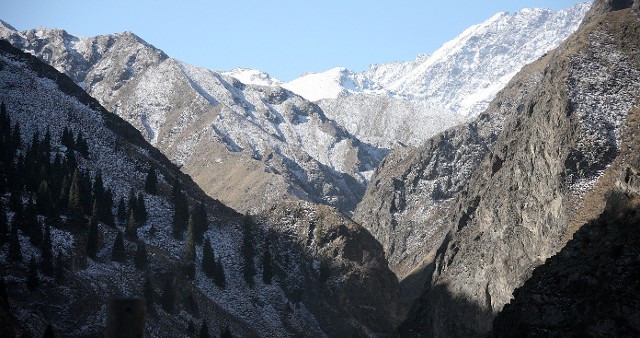
Once we got past the toxic soup from hell, we once again experienced the beauty that is the Tianshan Mountains.
***
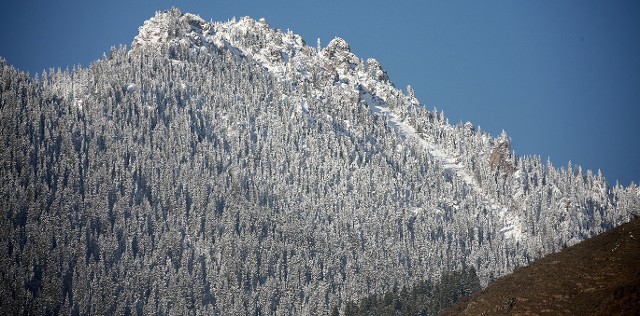
The Tianshan Mountains are dominated by Shrenk's Spruce (Picea shrenkiana) which were spectacular this morning after the storm.
***
Here is a great website that discusses the Tianshan Bioregion.
***
Siberian Ibex (Capra sibirica)
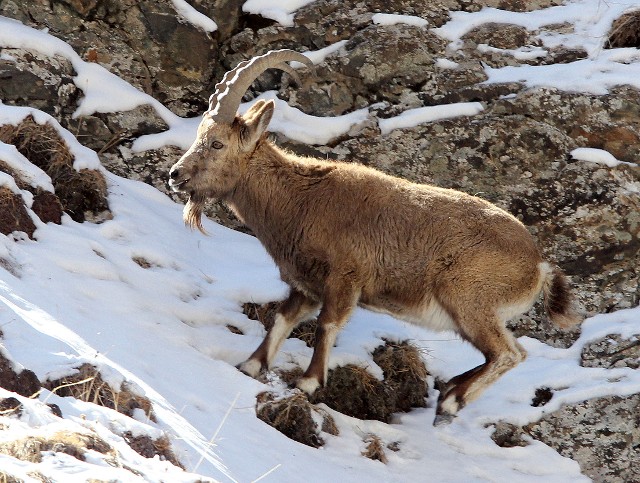
During our road trip through the Tianshan Mountains, we spotted well over 200 Siberian Ibex. Due to the unseasonably cold storm that just hit the region, they were forced down lower than normal giving us outstanding views.
***

There were several Siberian Ibex (Capra sibirica) near the road as well. Seeing them in good light and in snow was outstanding!
***

Very sure footed....I was secretly hoping to see one of the local Snow Leopards go for a hunt this morning....No such luck!
***
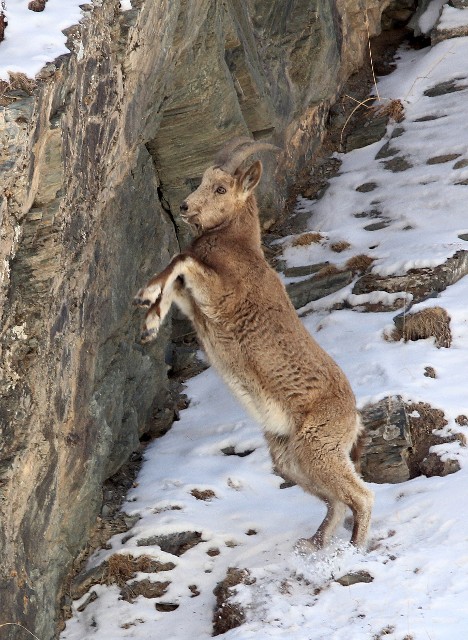
I wonder how often they fall...
***
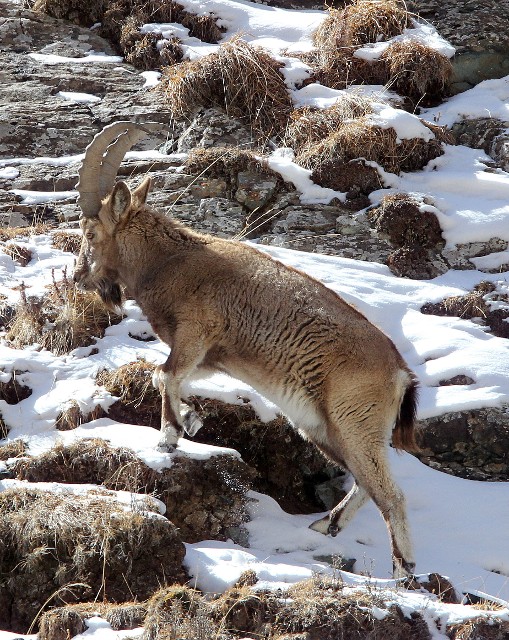
Siberian Ibex (Capra sibirica
***
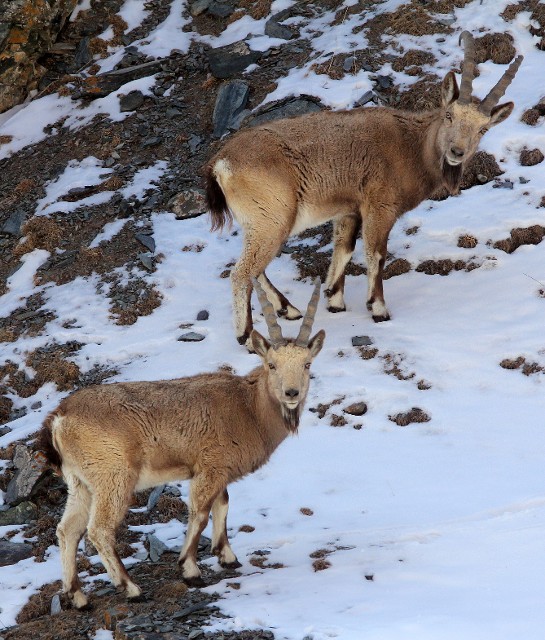
Siberian Ibex (Capra sibirica). Most of the herds were female but we did come across several younger males like these.
***
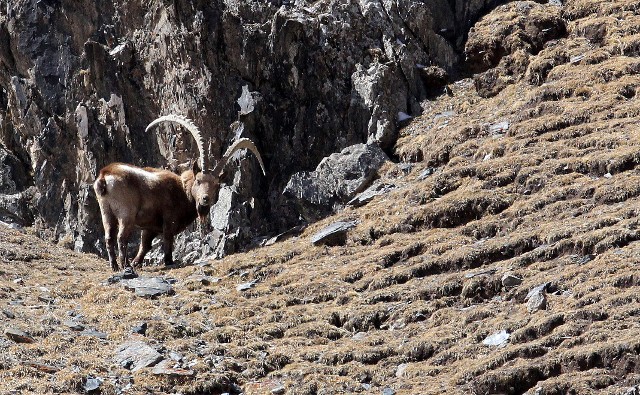
We did spot this major male later in the day. Even Professor Li said this was the largest male he had ever seen in over 30 years of venturing in to these mountains!
***
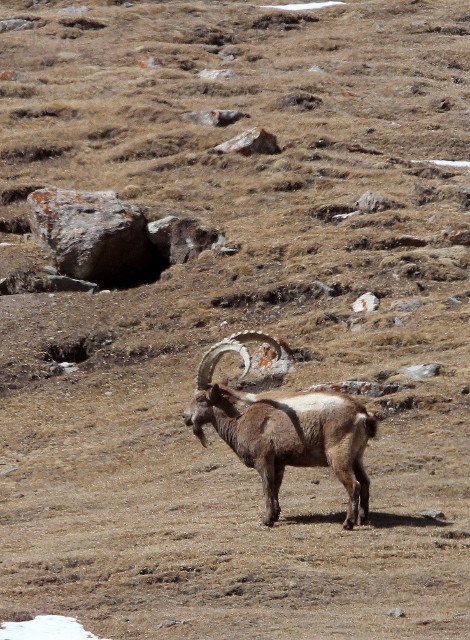
Amazing speciman!
***
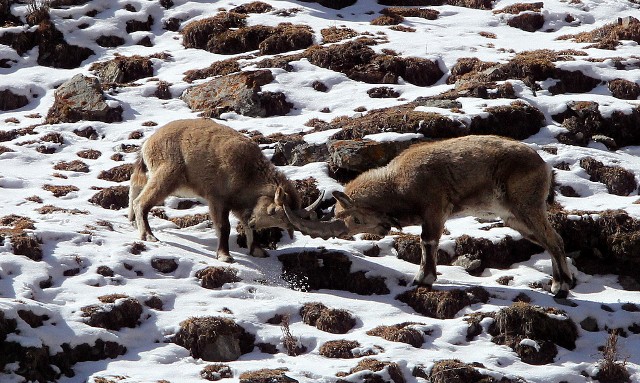
A couple younger males sparring.
***
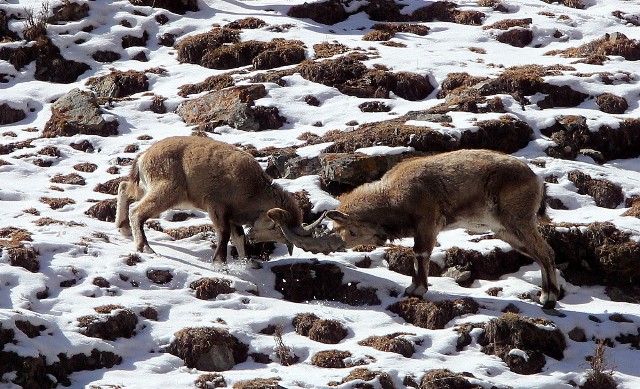
I would have loved to see a couple of the major males go at it
***
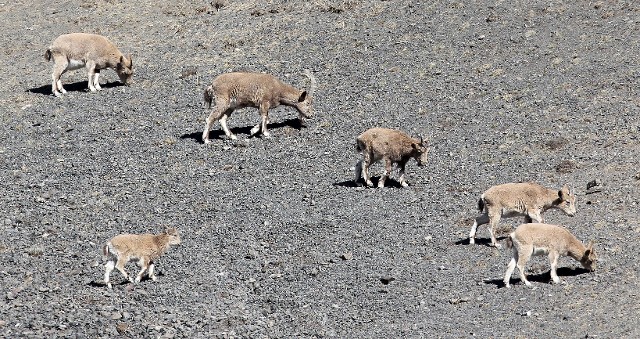
So many Siberian Ibex this day...
***
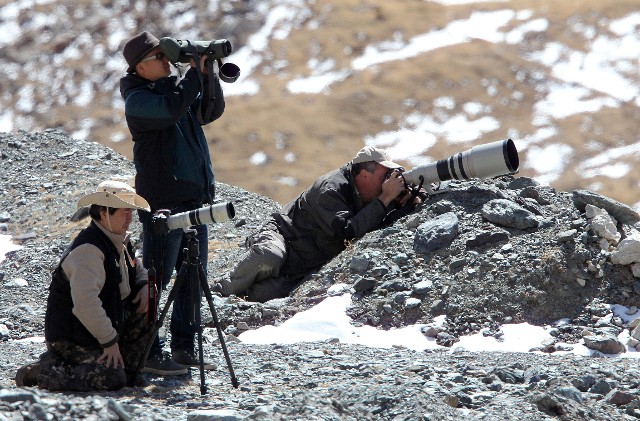
Shootin' some Ibex baby!
***
And another bonus species showed itself this morning. When we were observing our second or third ibex herd, we spotted several Gray or Altai Marmots sprinting across the mountain slopes! After our drive was completed this day, we saw many dozen of this rarely recorded rodent species. Initially I thought they were the Long-tailed Marmots (M. caudata), but the professor informed me that those were only found in the Pamir Mountains further south.
***
Gray (Altay) Marmot (Marmota baibacina)
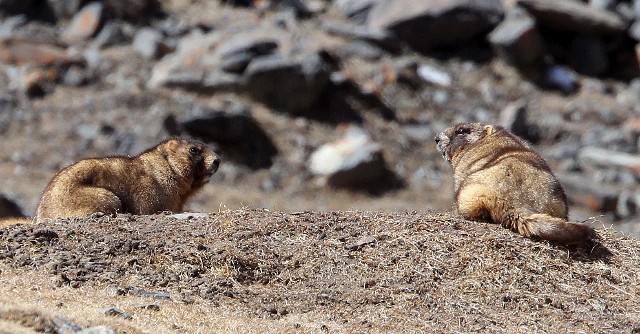
Initially I thought these were Long-tailed Marmots (M. caudata), but Professor Li correcte me. These are the rarer Altay or Gray Marmots! -Long-tailed are found further south in the Pamir Mountains.
***

Gray (Altay) Marmot (Marmota baibacina). We spotted several dozen this day.
***
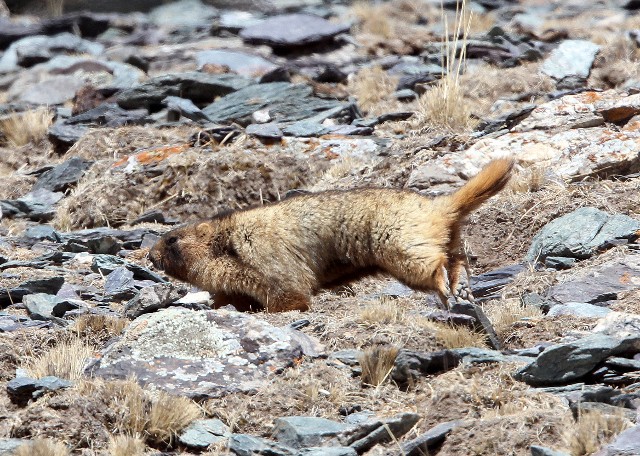
Gray (Altay) Marmot (Marmota baibacina) sprinting for safety!
***

Gray (Altay) Marmot (Marmota baibacina)
***
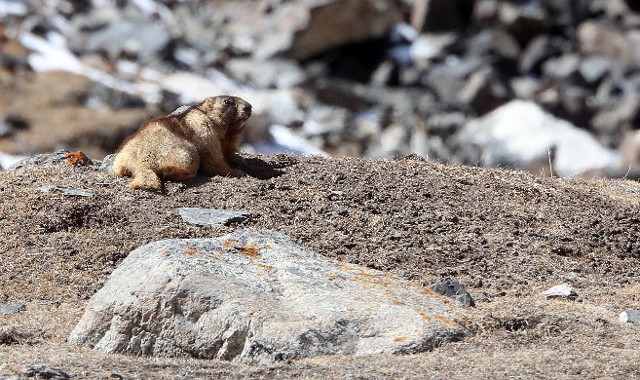
Gray (Altay) Marmot (Marmota baibacina)
***
Our morning in the Tianshan Mountains was progressing in stellar fashion. Now all we needed to do was spot some Ili Pika. It wasn’t long before we reached the highest point of the road (4200 meters) and the place that Professor Li told us was prime Ili Pika habitat, located at the base of Tianshan Mountain Glacier #1. Professor Li started to descend a very steep scree-filled slope in search of sign for the elusive lagomorph. I was not sure if I too should attempt the near suicidal trek down the scree, but when he told me he had found sign, I nearly sprinted down the treacherous slope. Sure enough, he showed me two very fresh Ili Pika tracks in the previous day’s snow! We scanned the scree for nearly an hour on the frigid, windy slope, but eventually left satisfied with only a sighting of the tracks and some fresh turds – no live pika this day. But it was still very cool to be up in this incredibly remote part of the Tianshan Mountains searching for such a rare and spectacular species with the very individual who had discovered them!
***
Ili Pika (Ochotona iliensis)
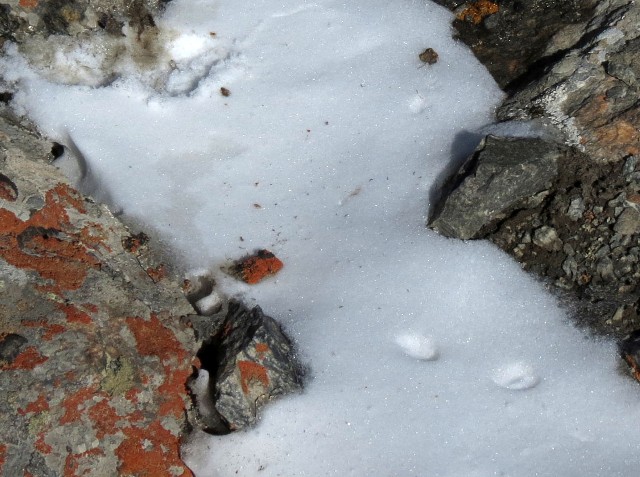
Although all we spotted was this morning's tracks, we were still very pleased to be in the rare Ili Pika's core habitat - 4000 meters up on large scree slopes.
***
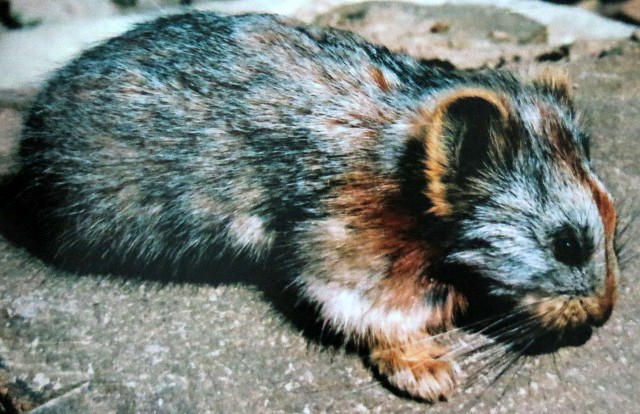
Professor Le WeiDong's image taken several years ago of one of his study specimens of the very rare and elusive Ili Pika.
***
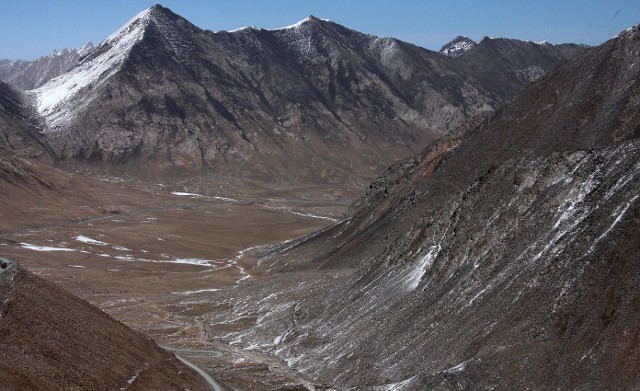
The view of the Tianshan Mountains from the scree slopes of the Ili Pika habitat at 4200 meters.
***
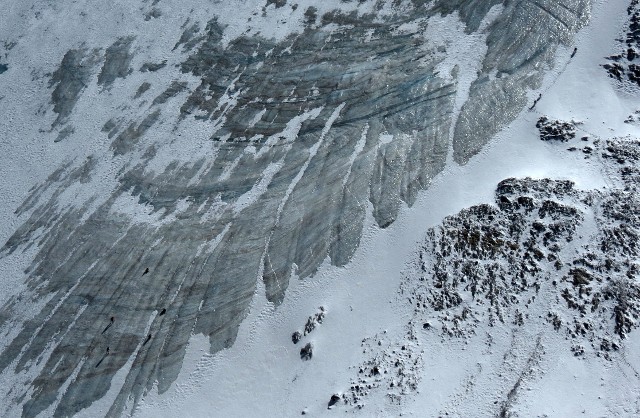
The sheer ice face of Tianshan Mountains Glacier #1! If you look hard enough, you will see some people attempting a climb....They didn't make it too far today though...
***
Urumqi
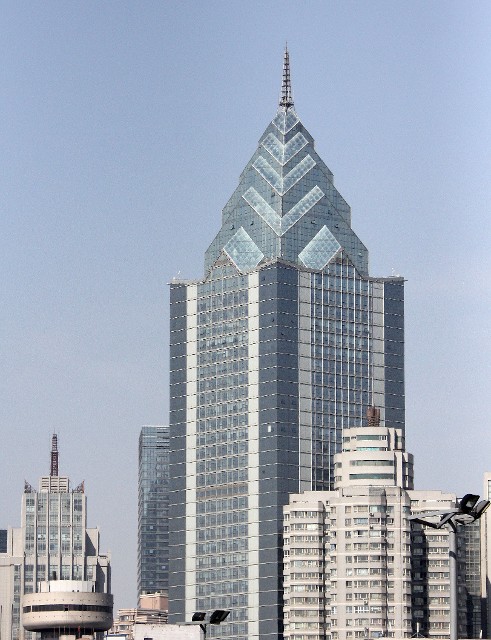
Downtown Urumqi
***
Our day in the Tianshan Mountains was incredible. The highs and lows of this day were typical of the entire expedition. We spent the next day and a half in Urumqi relaxing and exploring the city, visiting the Xinjiang Regional Museum and learning about the “Europoid” peoples who were some of the first inhabitants of this part of China. We also spent some time in the Grand Bazaar, where we enjoyed the cultural contrasts of this city. The city center of Urumqi has a much more central Asian feel than Chinese. The smells, sounds and people here were very un-Chinese. It was nice to experience this place….even though we were separated from a good chunk of change when we accidentally bought a camel-hair Uyghur rug… Steven got a kick out of how the local Uyghur people would stare non-stop at Som trying to figure out where she came from! One man even rammed his car in to a pole because he could not take his eyes off of Som!
***

My Uyghur family....definitely locals in Urumqi!
***
Our trip to Xinjiang has been one for the record books for sure. While ranking as one of the smallest species lists of any trip we’ve done, it absolutely ranks as one of the greatest adventures the Smith family has ever enjoyed together. In Xinjiang, we experienced an in-depth exposure to one of China’s most remote, inhospitable and spectacular regions. We traveled with a fascinating team with amazing levels of expertise and local knowledge and given rare and privileged glimpses to places and features of the region that very few people can see or experience. We were not tourists – we were true explorers – we were expeditioners.
***
During our final celebration dinner in Urumqi, I asked everyone to share their favorite moments:
Professor Li: Getting lost in southern Lop Nur searching for La Pie Chuan Springs and eventually finding our way out a day later after crossing the vast plains below the cliff we nearly froze to death on the night before. He also very much enjoyed finding his way to the newly constructed road in Lop Nur that cut off a full day of driving!
Mr. Fung: The search for camels while coursing our way through the dry riverbeds of Lop Nur.
Steven: The excitement of spotting the endless herds of Siberian Ibexes in the Tianshan Mountains. He also loved the spotting and the subsequent chase of the lone Kulan in the Karamori Desert.
Som: Searching for camels after stopping at the pass at Xa Gu and Professor Li telling us to quietly approach the crest and see what was on the other side and reaching the summit to see the great expanse of Lop Nur and the distant sand dunes.
Cokie: At the same pass as Som, but approaching from the opposite direction, and before the cars could actually make it up the steep sandy grade, I instructed him to go on ahead by himself to see if there were any camels awaiting us. He loved the solitude and responsibility of being the explorer.
***
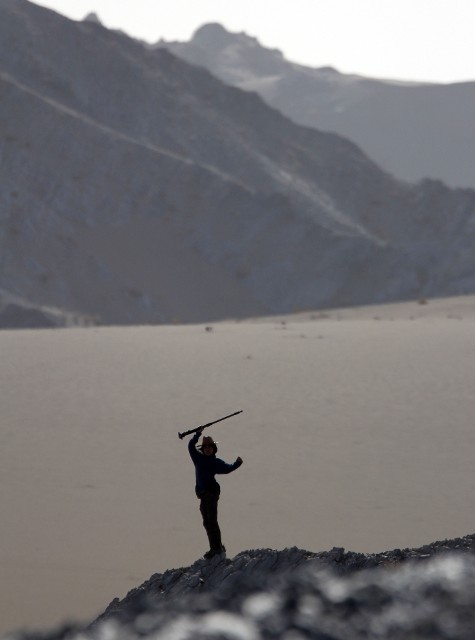
Cokie experiencing his high point of the trip.
***
Me: Getting lost in Lop Nur during our first day there and finding our way to the cliff edge near dark; experiencing the severe cold and wind and feeling, not afraid, but alive – knowing that this place was truly powerful and we were very insignificant in comparison. I also very much enjoyed our meal time together while wilderness camping, telling wildlife war-stories, laughing together and having a great time making connections.
***
For all of us, the Xinjiang expedition will be remembered as an experience of a lifetime. There were moments of extreme intensity and excitement as well as frustration and even disappointment. We saw and experienced amazing species in an amazing environment. We witnessed environmental destruction on an unparalleled scale but also saw pristine habitats with great potential for conservation. We traveled with true adventures and scientists who have their priorities straight are no doubt the cutting edge of the conservation movements currently happening this part of China. We had great laughs and made up our own slang and had truly quality cultural exchanges with wonderful people ranging from our own team members to people we met in the markets of Turpan and Urumqi. We experienced the thrill of spotting and recording a WILD Bactrian Camel and the disappointment of having to delete it from our list a few days later, but we learned so much about this amazing animal in the process.
Now I sit in the window seat of our flight from Urumqi back to Shanghai with a crystal clear, bird’s eye view of the Kumtage Desert below. I can’t help watch this roadless wilderness pass below with a new and deeper appreciation of what it is – what it truly is. I will cherish our Xinjiang trip memories for a lifetime and can only hope that we have opportunities again in the future for a similar adventure. As I write this, I am wondering, are there camels down there?
***
Some More Critters From Xinjiang & Gansu
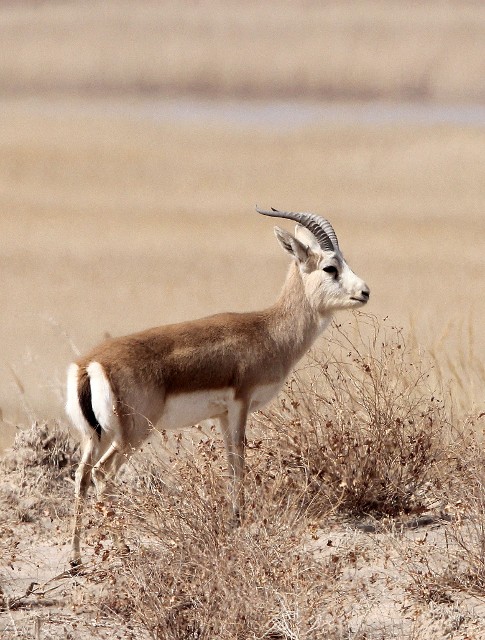
Gansu Goitered Gazelle in Xifu NR.
***
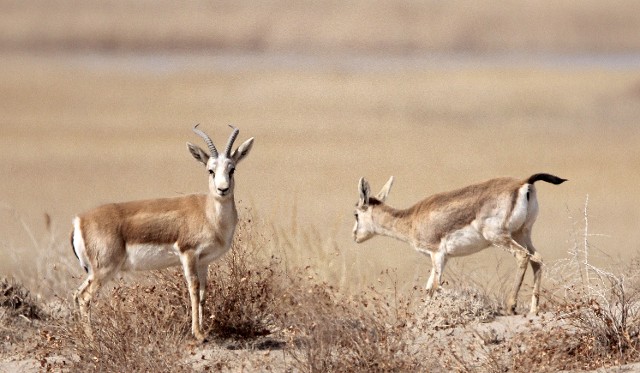
Gansu Goitered Gazelles
***

Gansu Goitered Gazelle
***

Very different from their Tibetan and Przewalski's Gazelle cousins to the south and east. (See Tibetan Gazelles in this trip report and Przewalski's Gazelles in this Trip Report)
***

Siberian Ibex
***
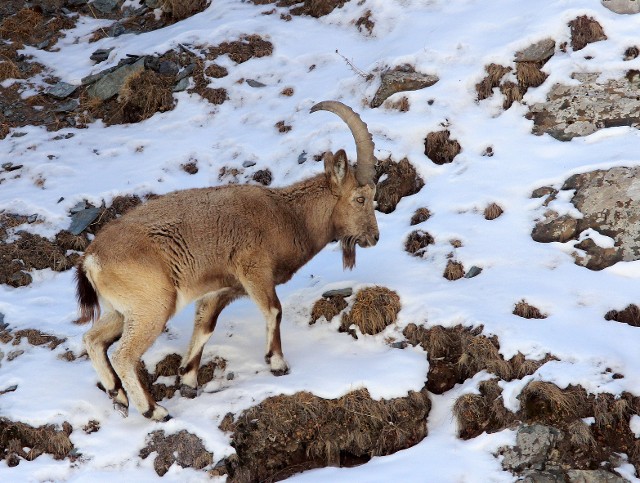
Young male Siberian Ibex.
***

Siberian Ibex
***
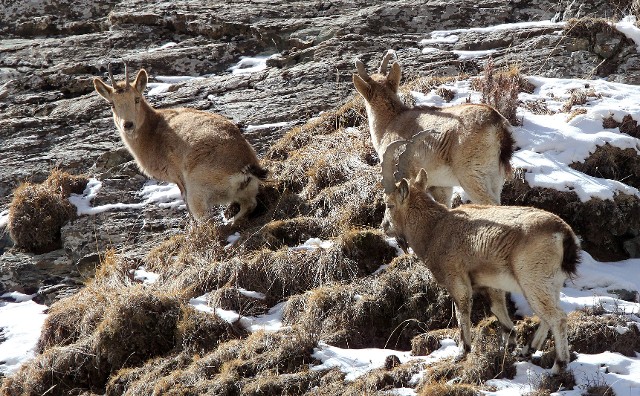
We spent hours with several herds of Ibex this day.
***
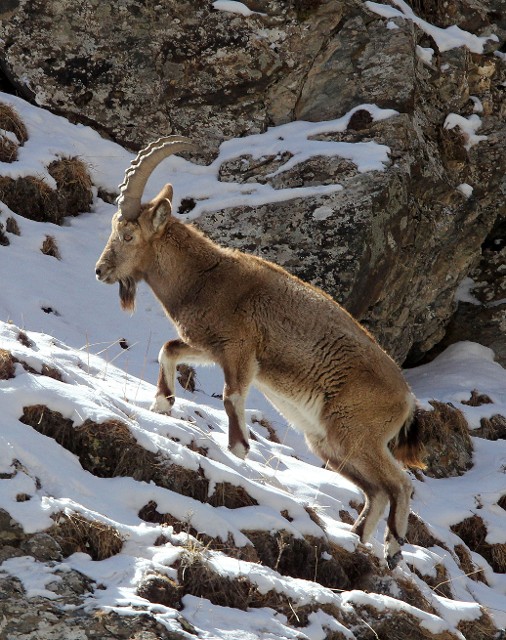
Siberian Ibex
***

Taking the leap!
***
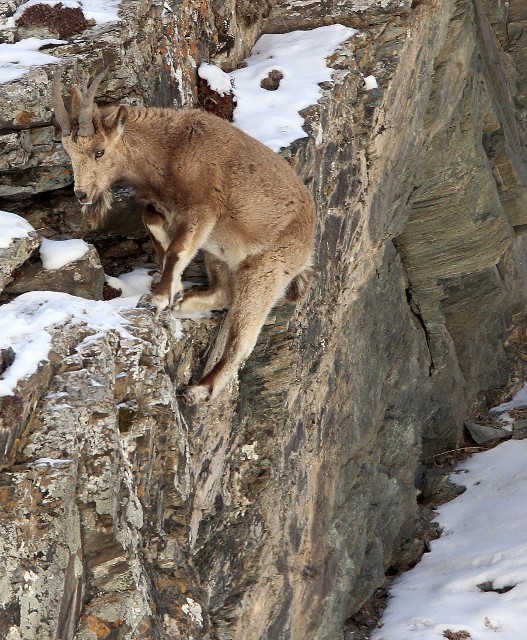
Very sure-footed!
***
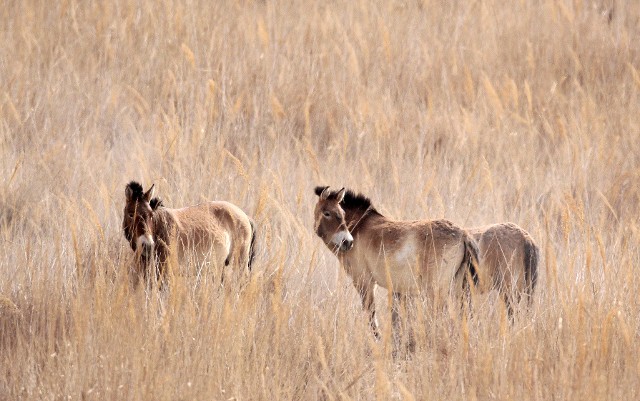
Przewalski's Horses grazing in Gansu Dunhuang Xifu Nature Reserve.
***
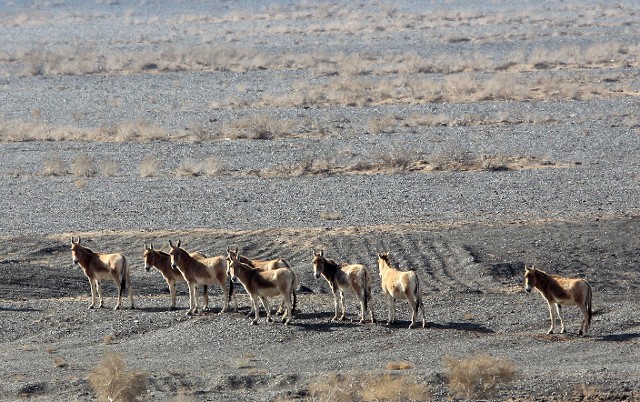
Wild Kulan (Mongolian Wild Ass) in Karamori Ungulate Reserve in northern Xinjiang.
***
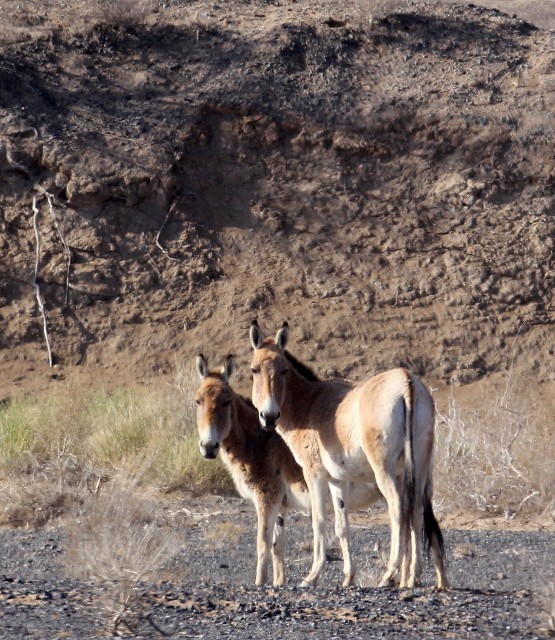
Kulan
***
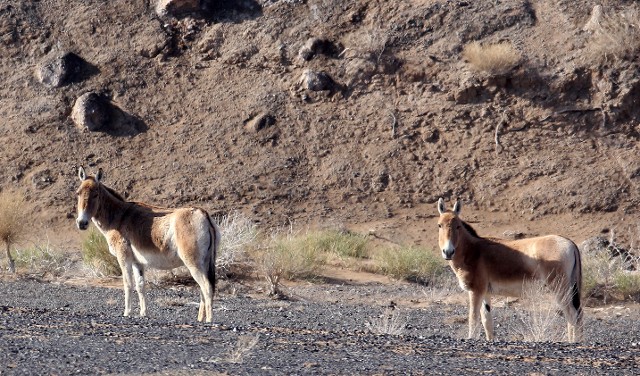
Kulan
***
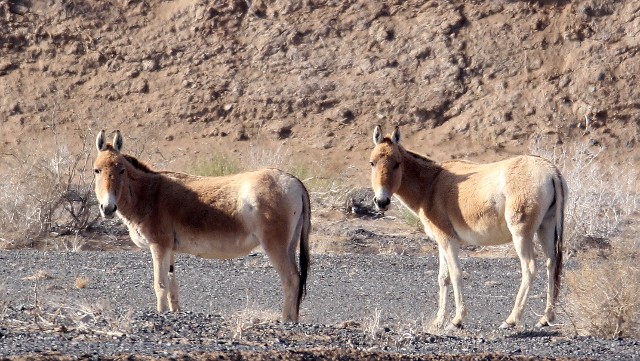
Great to see these Mongolian Wild Ass in Karamori during our last morning there!
***
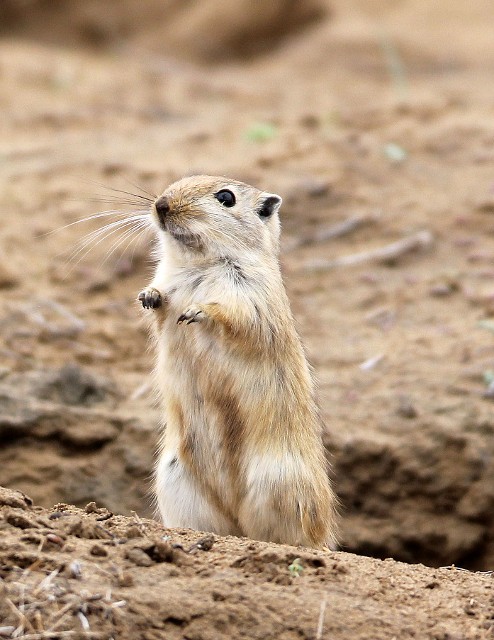
Great Gerbil in Wutong Gou Desert Attraction. They ruled this place!
***
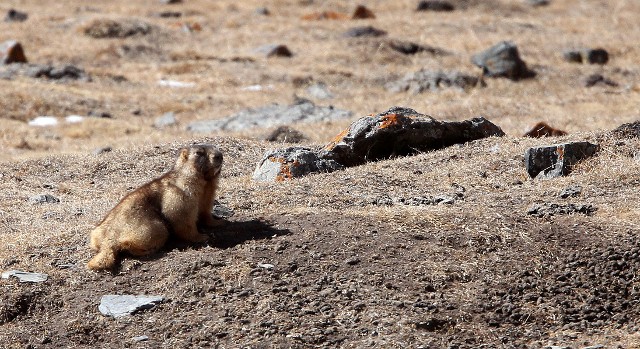
Altay or Gray Marmot in the Tianshan Mountains of Xinjiang.
***
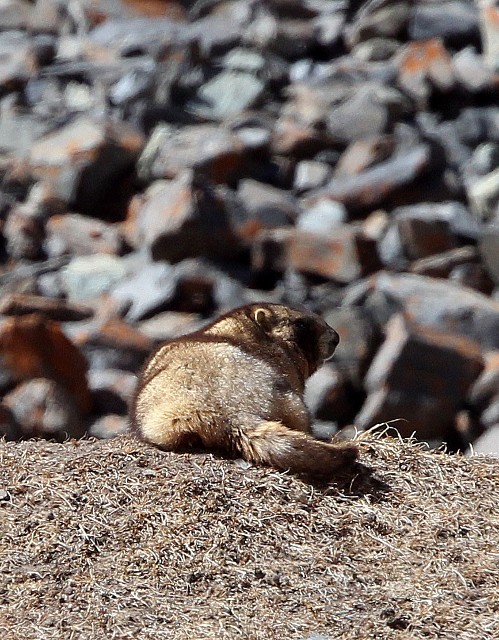
Altay Marmot (Gray Marmot) (Marmota baibacina)
***
Xinjiang Mammal List
- Gray (Altay) Marmot (Marmota baibacina) 20-30+
- Northern Three-toed Jerboa (Dipus sagitta) 1
- Przewalski’s Gerbil (Brachiones przewalskii) 1
- Great Gerbil (Rhombomys opimus) 15+
- Tarim Basin Red Fox (Vulpes vulpes karagan) 2-3
- Przewalski’s Horse (Equus caballus przewalskii) 7
- Kulan or Mongolian Wild Ass (Equus hemionus hermionus) 18+
- Gansu Goitered Gazelle (Gazella subgutturosa hilleriana) 2
- North Xinjiang Goitered Gazelle (Gazella subgutturosa sairensis) 100+
- Tarim Basin Goitered Gazelle (Gazella subgutturosa yarkendensis) 100+
- Siberian Ibex (Capra sibirica) 250++
Fresh Sign, Near Misses or Road Kill
- Mid-Day Gerbil (Meriones meridanus) – holes with sign of fresh activity at Wutong Gou Desert Attraction Area
- Libyan or Red-tailed Gerbil (Meriones lybicus) – holes with sign of fresh activity at Wutong Gou Desert Attraction Area
- Gray Dwarf Hamster (Cricetulus migratorius) Libyan or Red-tailed Gerbil (Meriones lybicus) – holes with sign of fresh activity at Wutong Gou Desert Attraction Area
- Corsac Fox (Vulpes corsac) – fresh tracks at Wutong Gou Desert Attraction Area
- Ili Pika (Ochotona iliensis) – very fresh tracks near rock outcroppings in Tianshan Mountains. Found by Professor Li Wei Dong, the discoverer of the species.
- Marbled Polecat (Vormela peregusna) – strong sent of this species was noted near Korla.
- Bactrian Camel (Camelus bactrianus) – So much sign it makes me sick to my stomach…
***
***
Birds of Xinjiang

We saw many Himalayan Griffons throughout Xinjiang's mountainous areas.
***
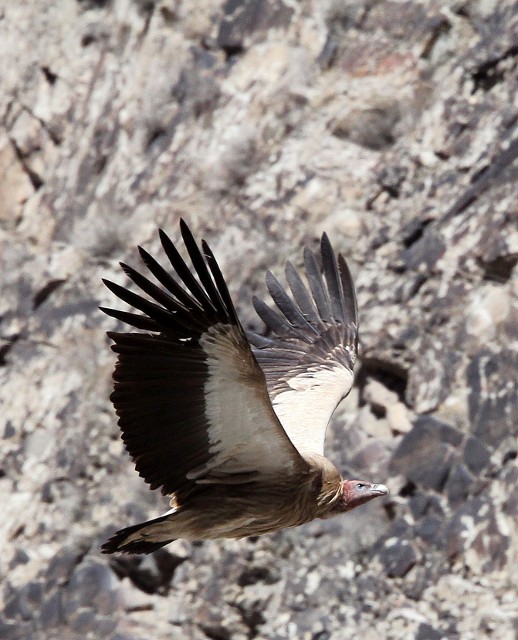
The Tianshan Mountains had healthy populations of the Himalayan Griffon.
***
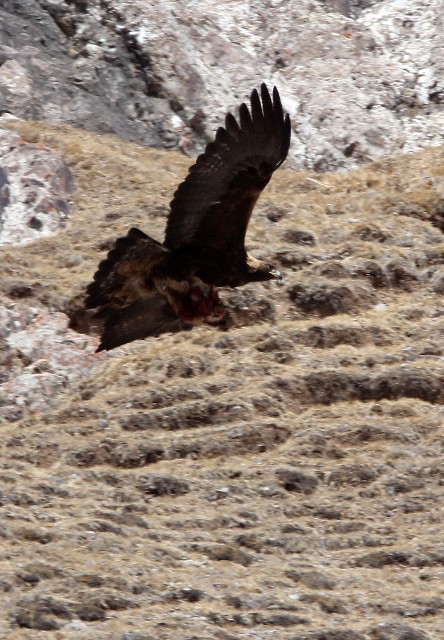
Tough to see by the rough image, but this Golden Eagle had just nabbed an Altay Marmot for breakfast!
***
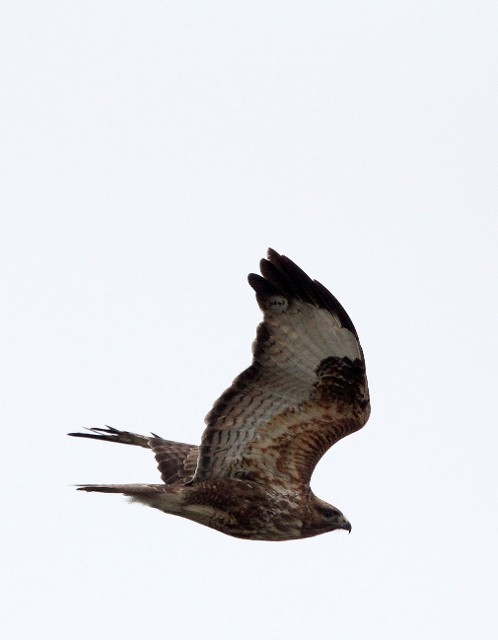
Rough-legged Buzzards were very common as well.
***
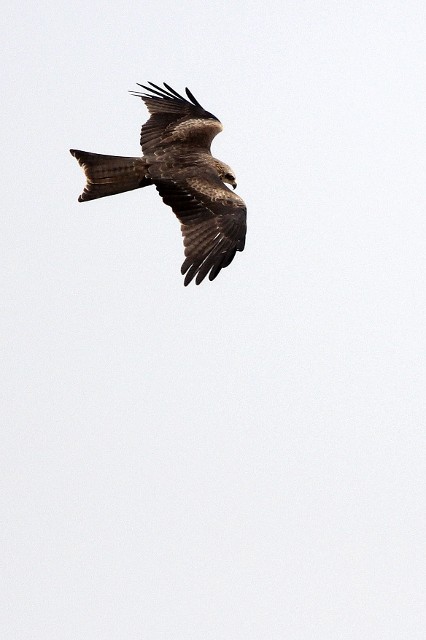
Black-eared Kites were very often seen as well.
***
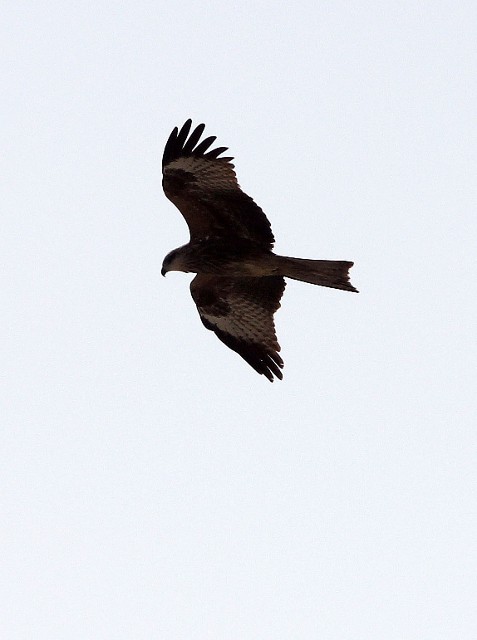
Black-eared Kite
***
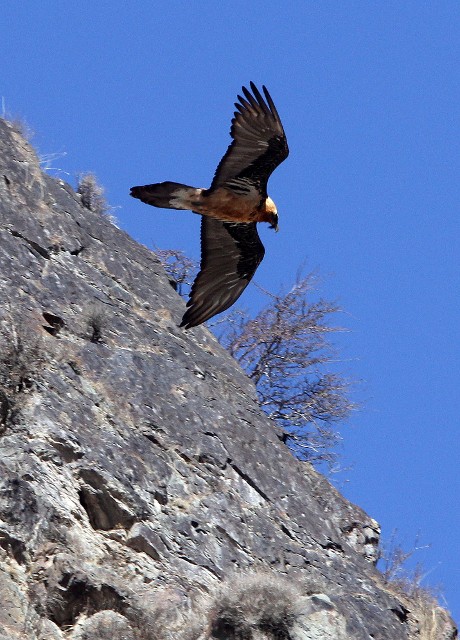
We only came across one Lammergeier while in Xinjiang. This one was spotted deep in the Tianshan Mountains.
***
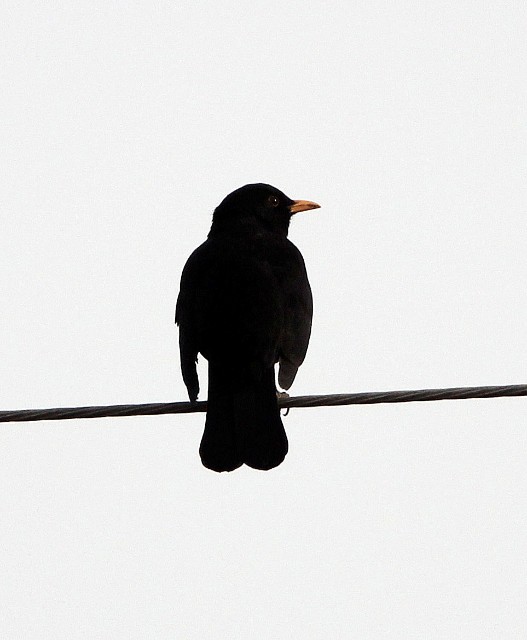
Eurasian Blackbird
***

Finally! Now I can say I've seen a Chukar in its native habitat! I've seen so many in the States but never in Asia....
***
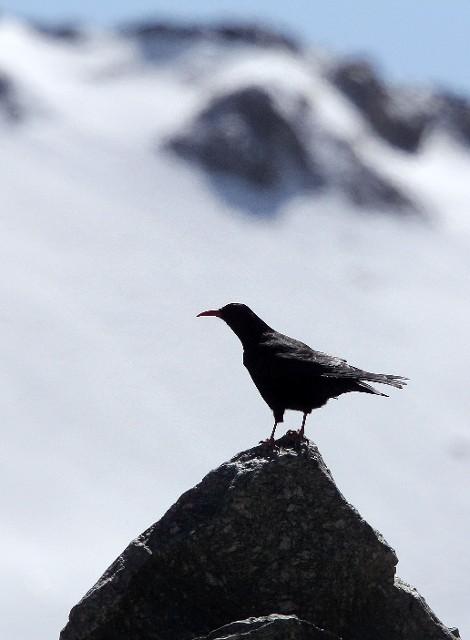
Red-billed Cough in the Tianshan Mountains.
***

Common Cranes in the agricultural lands outside Wutong Gou Desert Attraction area.
***
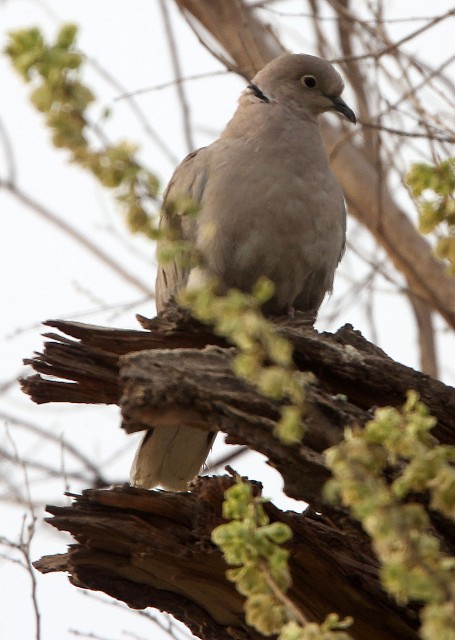
Eurasian Collared Dove in the vineyards of Turpan.
***

Northern Shovelers were very common in the wetlands of northern Xinjiang.
***

I think these are Black-headed Gulls near Wutong Gou Desert Attraction.
***
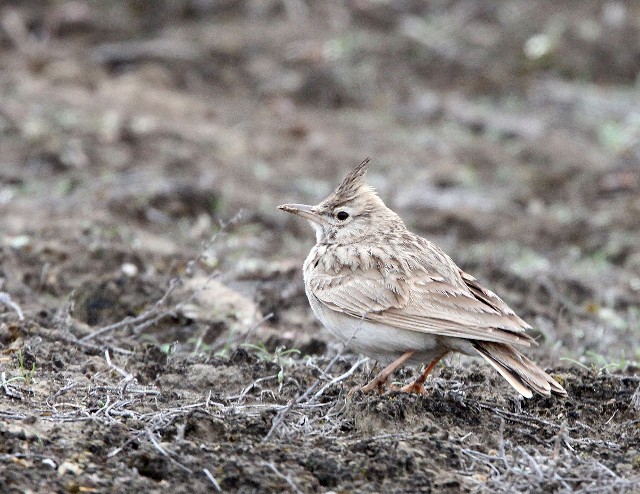
Crested Larks were very common at Wutong Gou Desert Attraction.
***
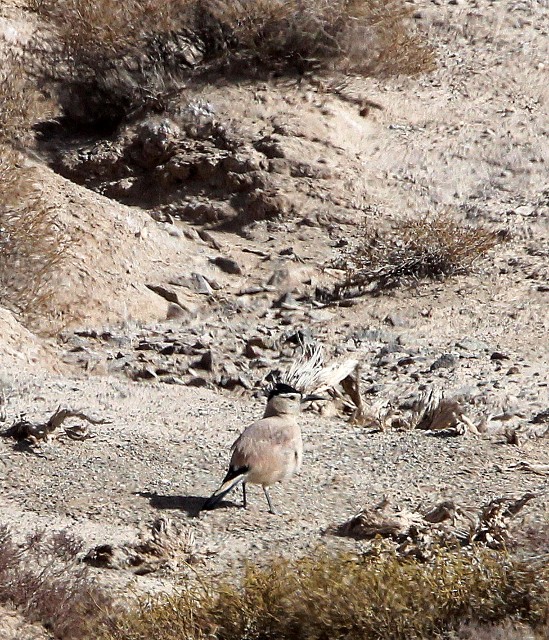
We came across this Mongolian Ground Jay in Lop Nur, but dipped on the rarer endemic Xinjiang Ground Jay.
***
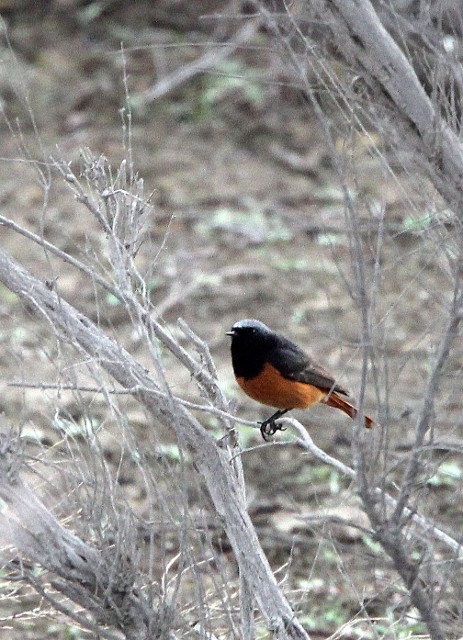
Xinjiang is Redstart central. This Black Redstart was seen in Wutong Gou Desert Attraction.
***
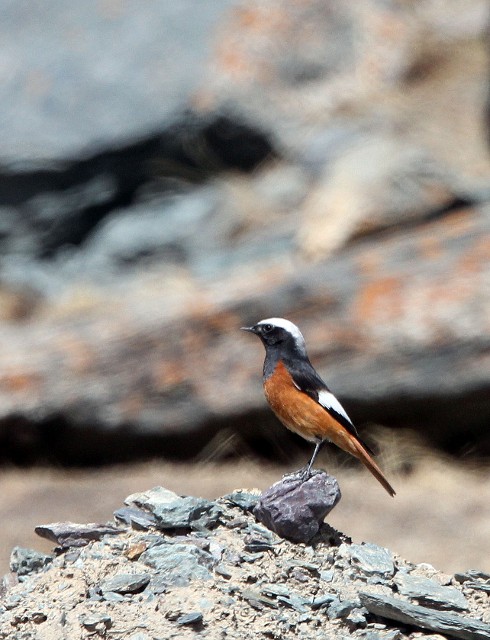
White-winged Redstarts were seen more commonly in the Tianshan Mountains.
***
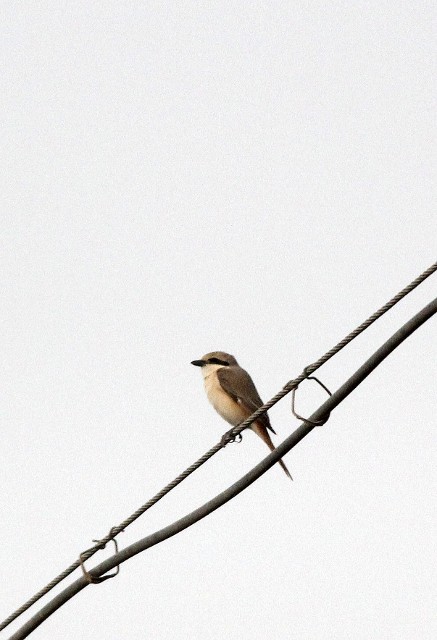
I believe this is a Red-backed Shrike...Feel free to correct!
***
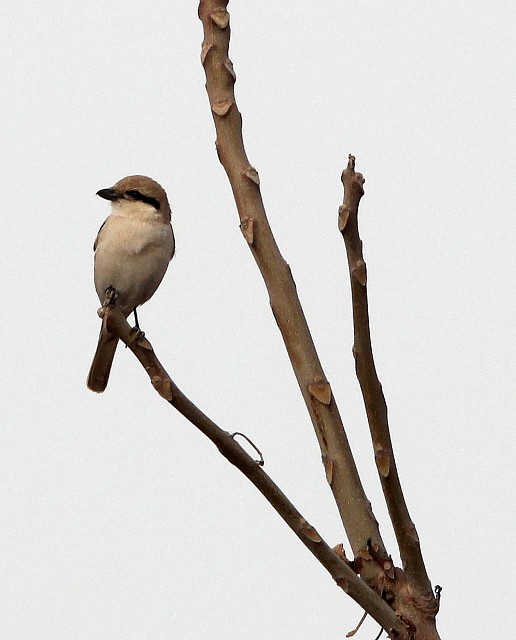
Rufous-tailed Shrike seen in Turpan.
***
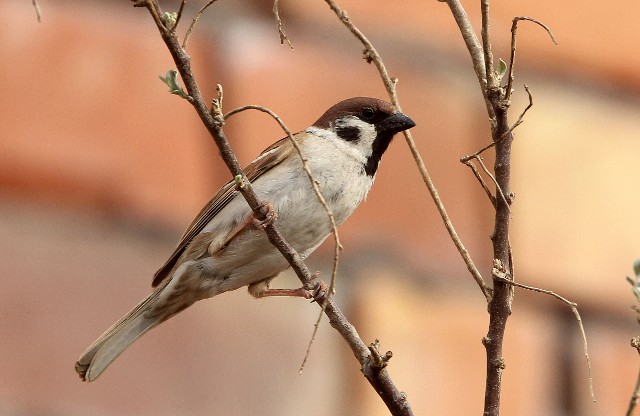
Ho Hum....Another Eurasian Tree Sparrow....
***
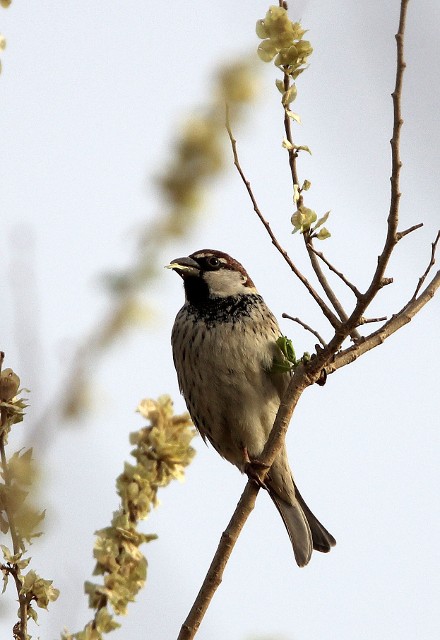
The vineyards south of Turpan are supposedly one of the only places to reliably spot the Spanish Sparrows that dip in to Xinjiang.
***
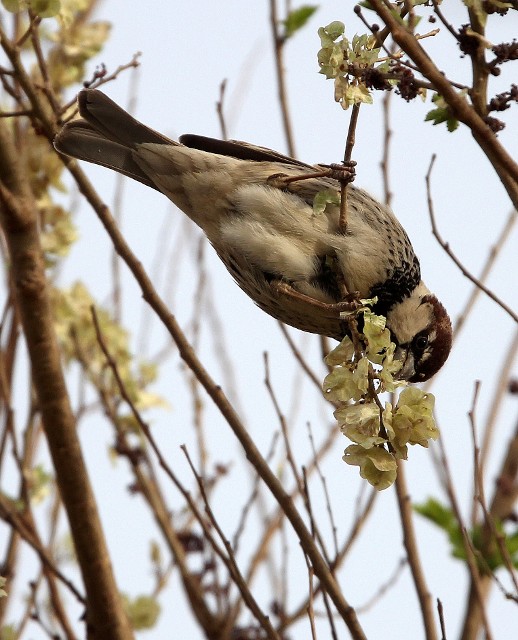
Spanish Sparrows of Turpan...
***
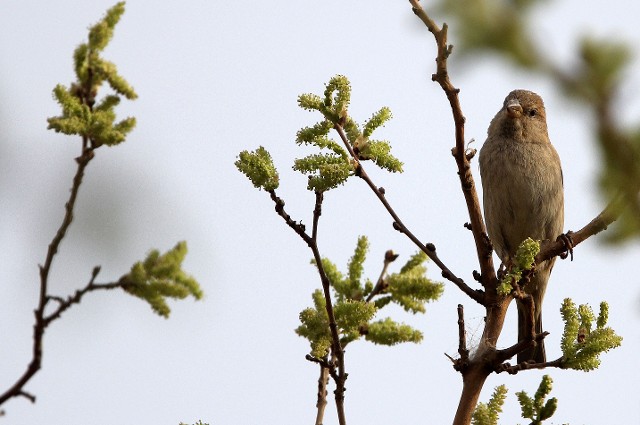
I believe this is a female Spanish Sparrow.
***
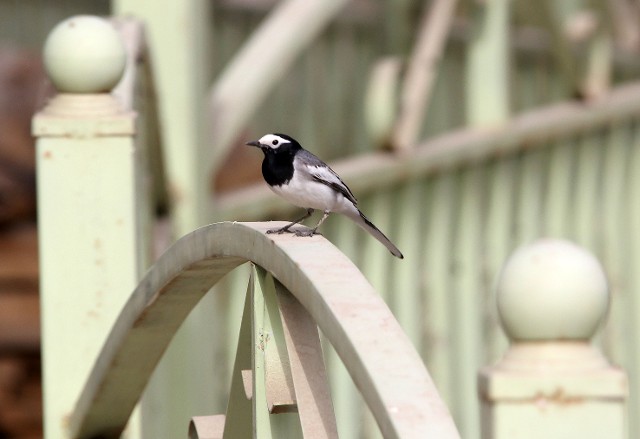
The Xinjiang White Wagtail (Motacilla alba personata) seen in Turpan.
***

Desert Wheatear!
***
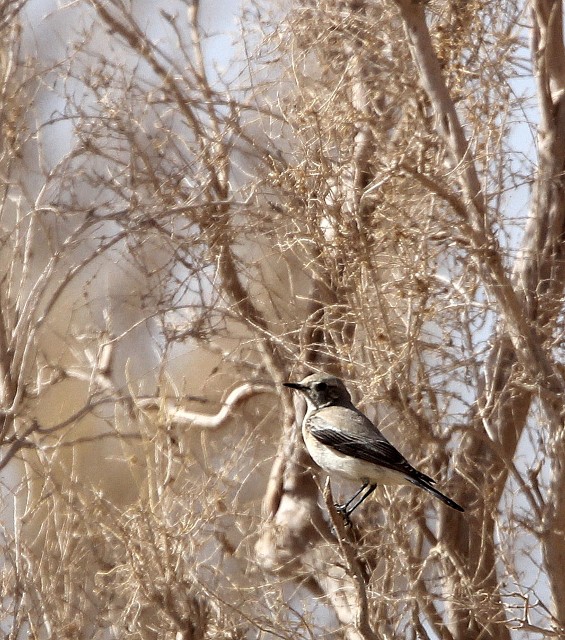
Northern Wheatear in Lop Nur.
***
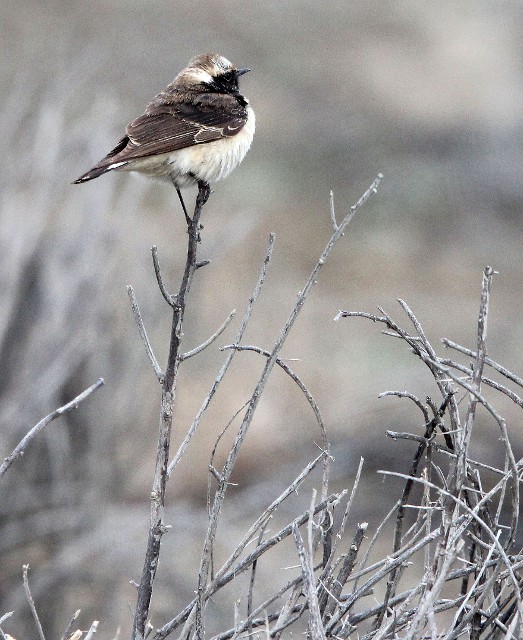
Pied Wheatear in Wutong Gou Desert Attraction.
***
***
Xinjiang Bird List
- Chukar
- Ruddy Shelduck
- Mallard
- Northern Shoveler
- Northern Pintail
- Common Teal
- Common Merganser
- Great Spotted Woodpecker
- Common Hoopoe
- Common Swift
- Rock Pigeon
- Hill Pigeon (Columba rupestris)
- Eurasian Turtle Dove
- Oriental Turtle Dove
- Eurasian Collared Dove
- Common Crane
- Common Moorhen
- Common Coot
- Pallas’s Sandgrouse (Syrrhaptes paradoxus)
- Northern Lapwing
- Common Sandpiper
- Some sort of Thick-knee???
- Brown-headed Gull
- Black-eared Kite
- Lammergeier
- Himalayan Griffon
- Cinereous Griffon (Aegypius monachus)
- Eurasian Marsh Harrier
- Northern Goshawk
- Common Buzzard
- Rough-legged Buzzard (Buteo lagopus)
- Steppe Eagle
- Golden Eagle
- Little Grebe
- Great Cormorant
- Great Egret
- Rufous-tailed Shrike (Lanius isabellinus)
- Red-backed Shrike (Lanius collurio)
- Black-billed Magpie
- Mongolian Ground Jay
- Red-billed Cough
- Carrion Crow
- Rook
- Rufous-tailed Rock Thrush (Monticola saxatilis)
- Eurasian Blackbird
- Dark-throated Thrush (Turdus ruficollis)
- Rufous-backed Redstart (Phoenicurus erythronota)
- Black Redstart (Phoenicurus ochruros)
- White-winged Redstart (Phoenicurus erythrogaster)
- Northern Wheatear (Oenanthe oenanthe)
- Pied Wheatear (Oenanthe pleschanka)
- Desert Wheatear (Oenanthe deserti)
- Isabelline Wheatear (Oenanthe isabellina)
- Common Starling
- Great Tit
- Barn Swallow
- Crested Lark
- Eurasian Skylark
- Saxaul Sparrow (Passer ammodendri)
- House Sparrow
- Spanish Sparrow (Passer hispaniolensis)
- Eurasian Tree Sparrow
- Rock Sparrow (Petronia petronia)
- White Wagtail (Motacilla alba personata)
***
***
More Stuff!

The two people who make all these experiences worthwhile.
***

The Gansu Dunes....I never get tired of dunes!
***
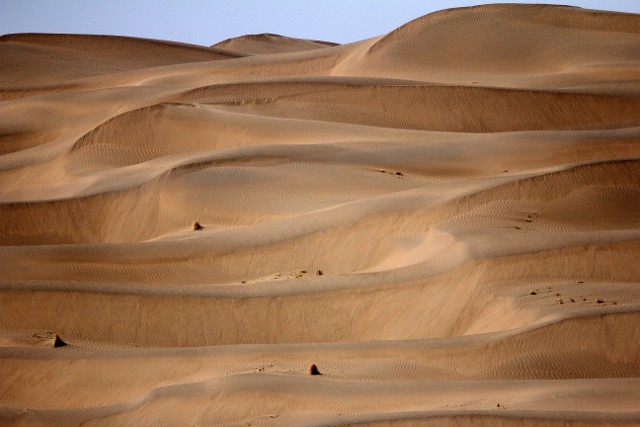
Thankfully the winds were light and we weren't sandblasted...
***

Gansu Dunes
***

Sublime
***
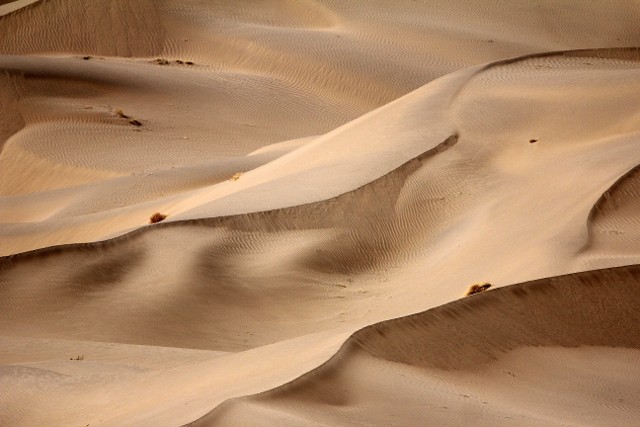
The colors and contrasts are outstanding!
***
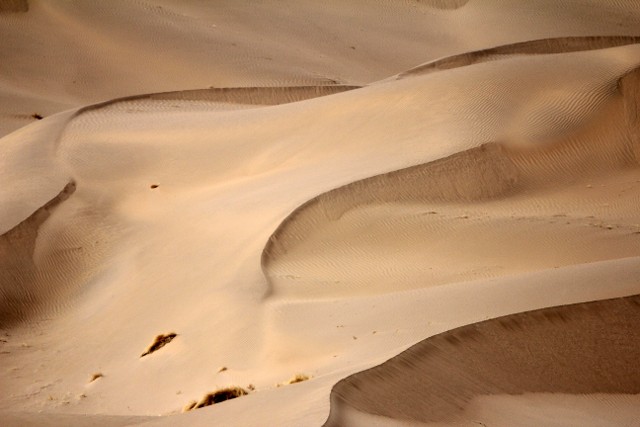
And these weren't even the largest dunes in the three deserts we visited. The Gobi dunes here were small in comparison to those found in the Taklamakan to the south.
***
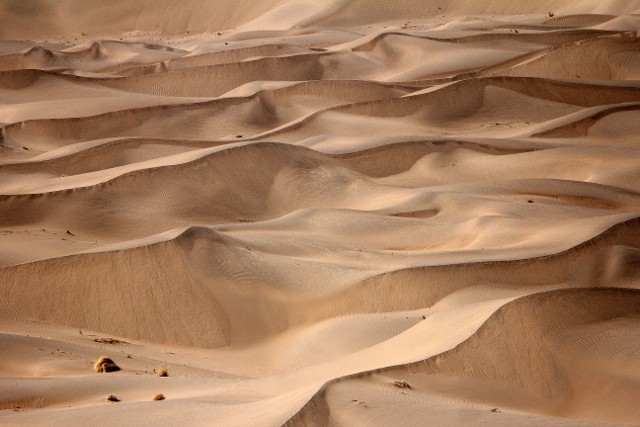
Gansu Dunes
***
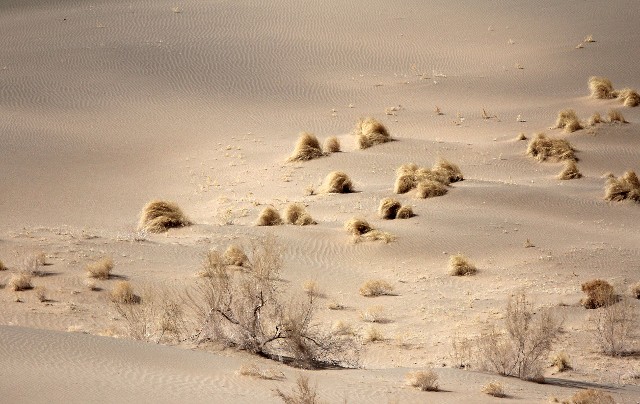
The transition to vegetation...
***
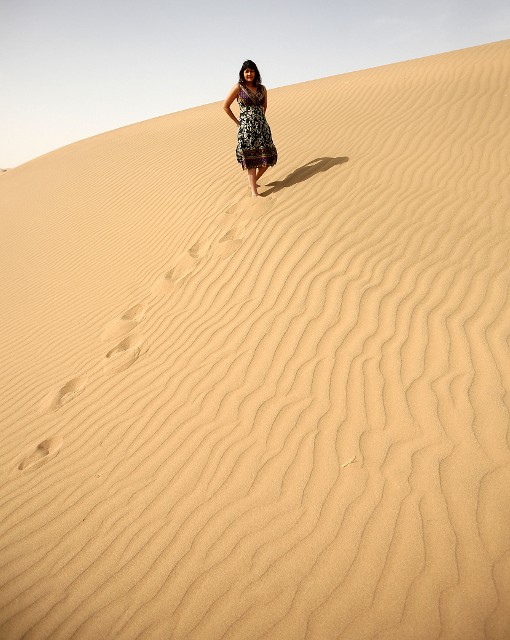
My desert flower!
***
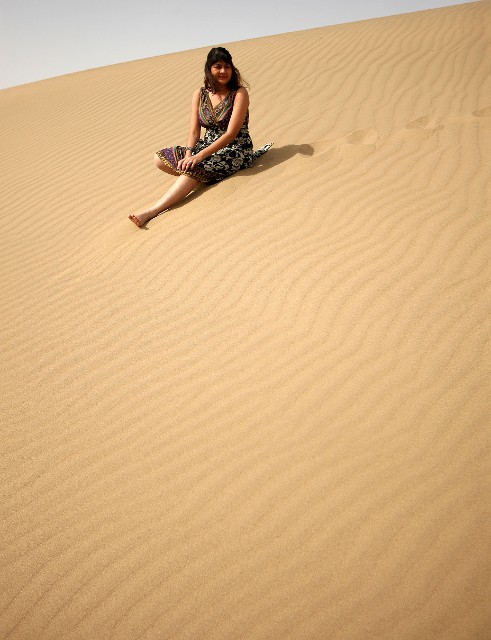
Som in the Gobi Desert!
***

Ironically, along with all of the unparalleled environmental destruction and pollution seen in Xinjiang, we saw more examples of green energy than anywhere else I have ever traveled. We came across dozens of massive wind farms and solar arrays. I just wish they would get rid of all the coal power....
***
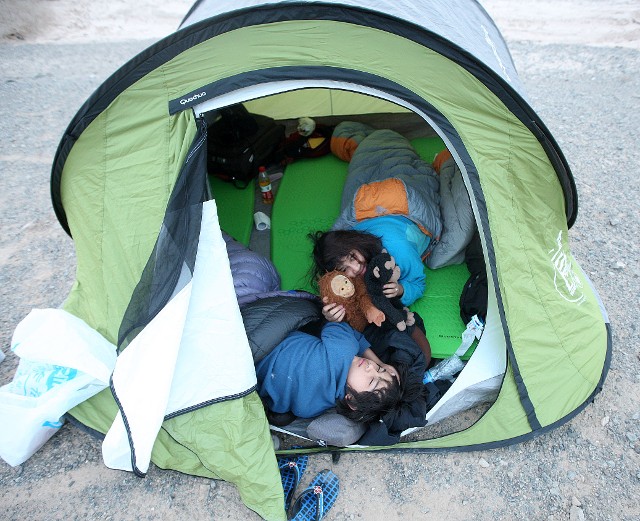
The first night of camping is always an adventure in itself....Cokie nearly squirmed his way out to the desert pavement this evening!
***

Although I would not necessarily recommend to folks that they need to visit Jiayuguan or Dunhuang, we did enjoy our experiences there....But only because there were virtually NO tourists at all...
***
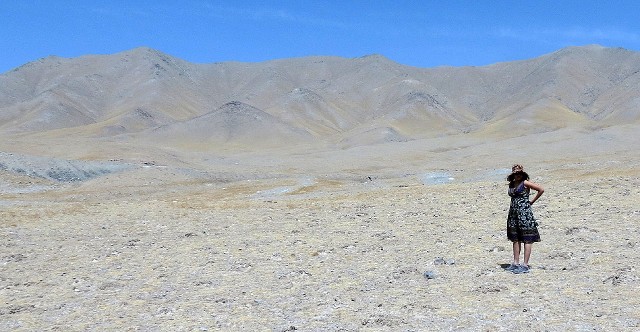
One day I would love to return to Altun Shan Nature Reserve and Arjinshan Nature reserve for more detailed exploration. I have no doubt that they have a lot to offer. Professor Li tells us that Arjinshan in particular is the most wildlife rich place in all of China!
***
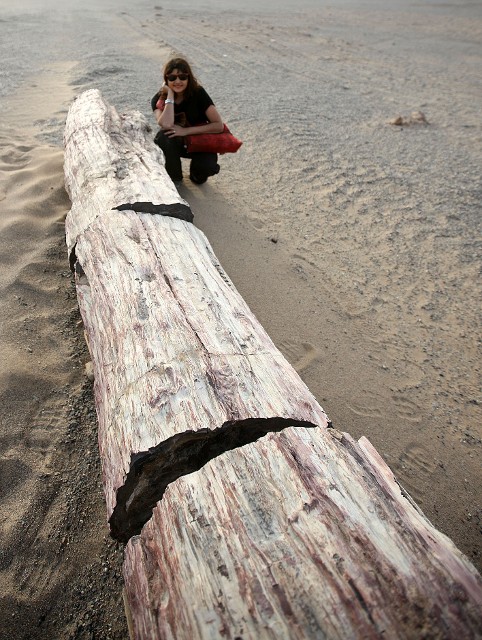
Yadan Geological Park was also home to a buried petrified forest.
***
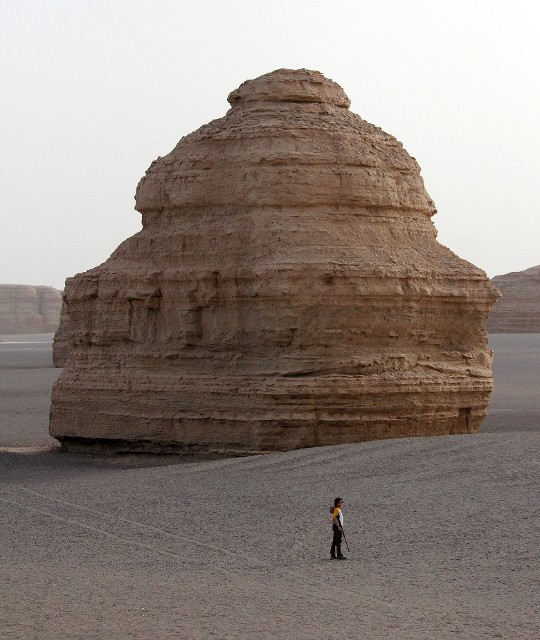
There is no doubt that Cokie would have liked to stay here for the rest of the expedition. He was in paradise.
***
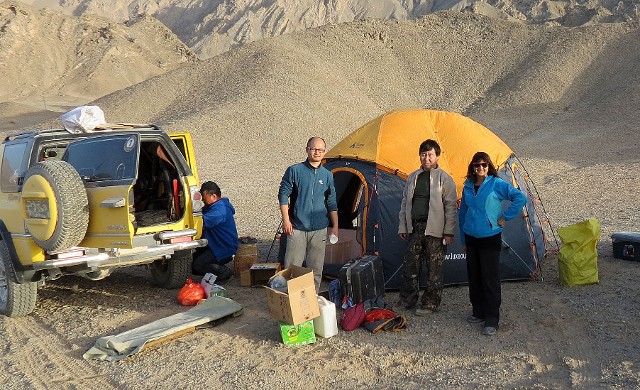
Setting up camp in Lop Nur's core area!
***
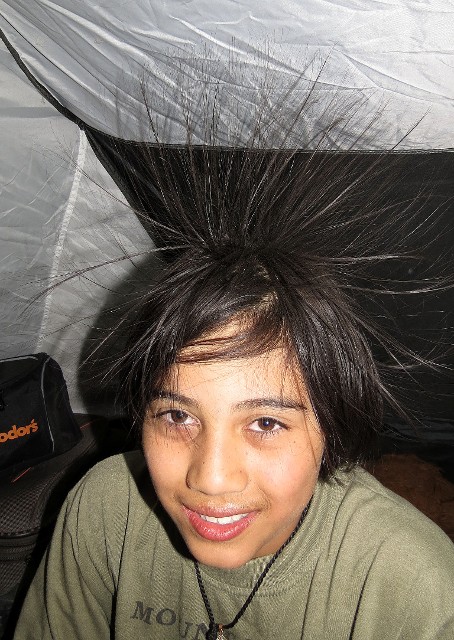
A little static electricity?
***
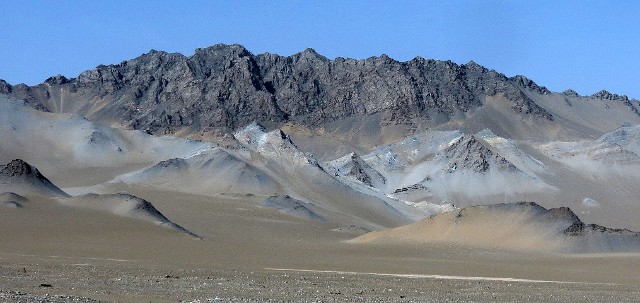
Lop Nur was simply spectacular on so many levels.
***

Lop Nur Dunes
***
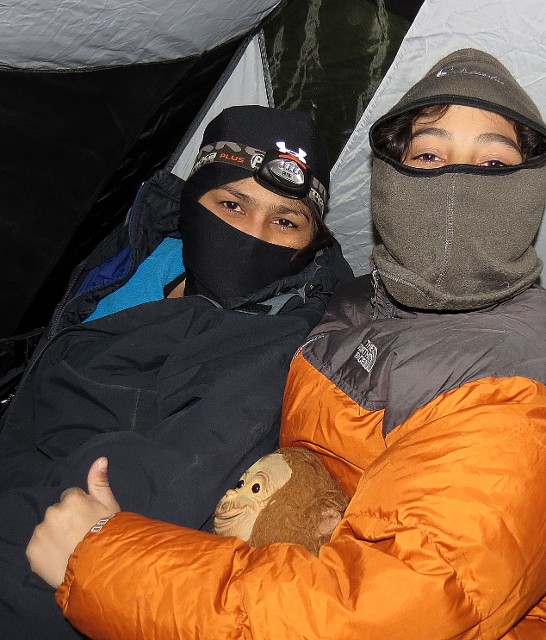
Our night lost in Lop Nur...Cold!
***
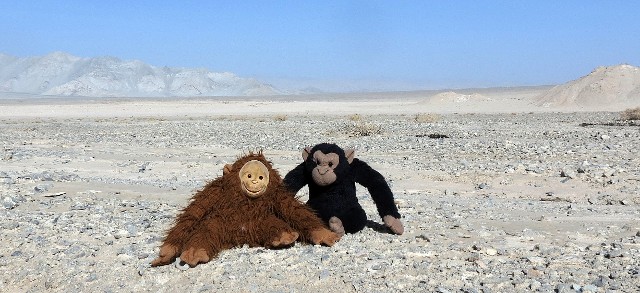
Oh yes, of course Toby and Nyungwe were part of Team Xinjiang!
***
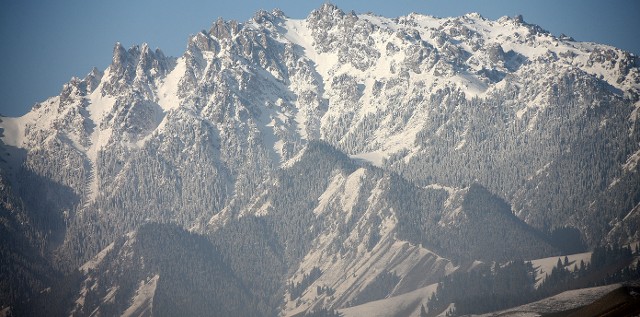
The glorious Tianshan Mountains of central Xinjiang. The haze in the image is the beginning of the smog hell described above...
***

Amazing Tianshan!
***
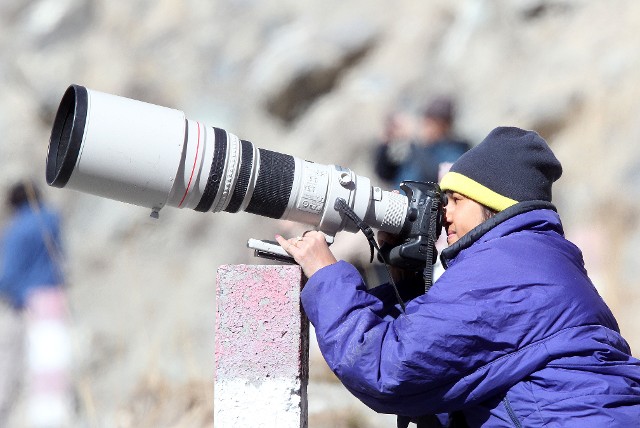
Som nailing some Ibex in the Tianshan Mountains!
***

Tibetan Prayer Flags in the Tianshan.
***
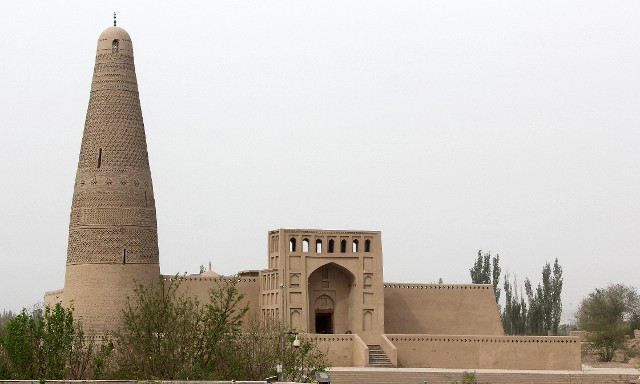
The Grand Mosque in Turpan.
***
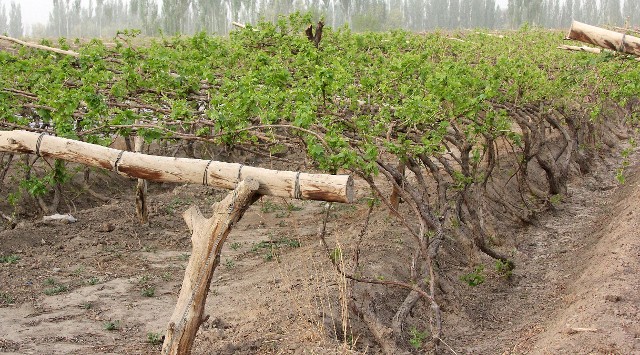
Turpan is filled with vineyards and is home to China's main wine industry, which produces some awful wines in general, but we did sample some quite acceptable varieties while on the expedition. Professor Li knew which ones to select!
***
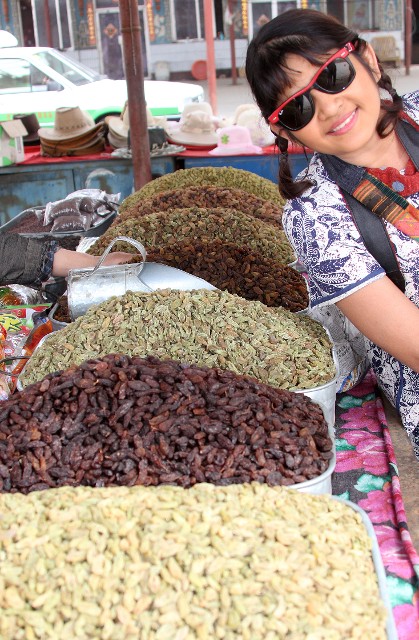
Som picking up some Turpan dried fruits.
***
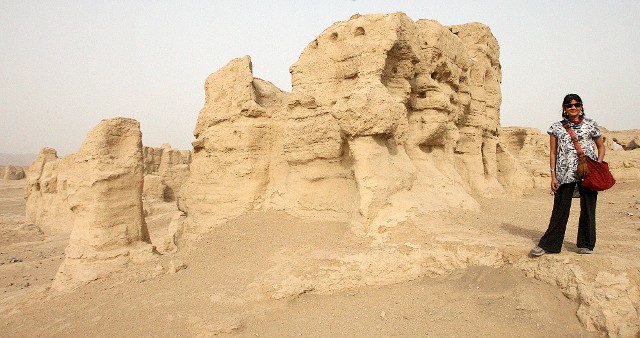
Owning the 2200-year old Jiaohe Ruins was a great way to spend the morning in Turpan.
***

Som in Jiaohe!
***
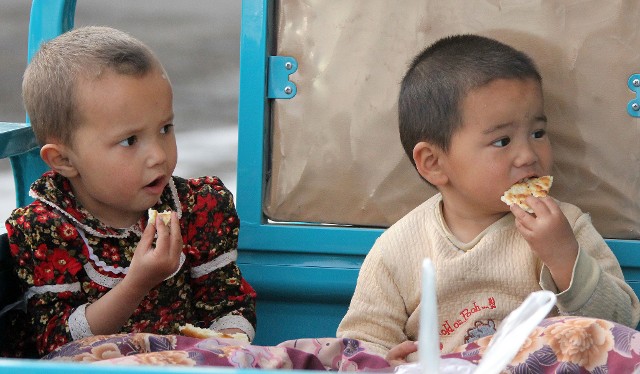
Two cute Uyghur children eating their morning bread in Turpan.
***
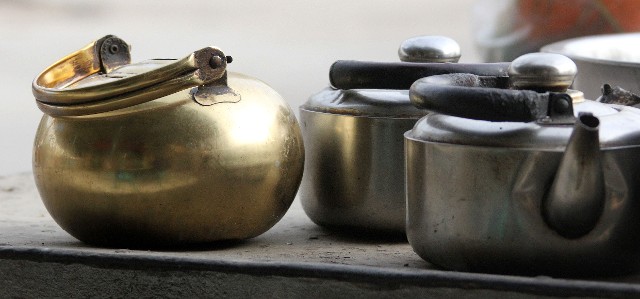
Tea time in Turpan market.
***

Jiaohe Ruins, Turpan
***

Our noodle chef and his son.
***
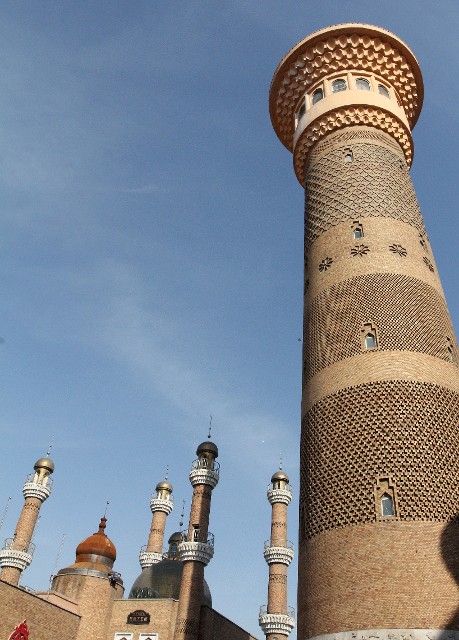
Urumqi's Grand Mosque and Bazaar
***

During our last day in Urumqi, we had time to explore the Xinjiang Regional Museum, where I was reminded of the fascinating "Europoid" culture that existed here some 3000 years ago. The Tarim Mummy exhibit is well worth a visit if you are in town.
***
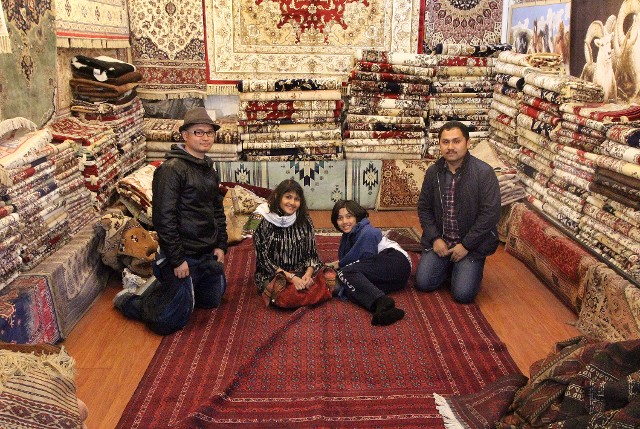
Unfortunately on our last day in Urumqi, we also had time to enter a carpet shop and become separated with a healthy chunk of our cash....It is a gorgeous carpet though (yes, it is the one we are sitting on...).
***

Being in this section of Urumqi was like being in central Asia, not China. We were excited for the change of pace.
***

Sun-dried fruits are definitely the main product of Xinjiang.
***
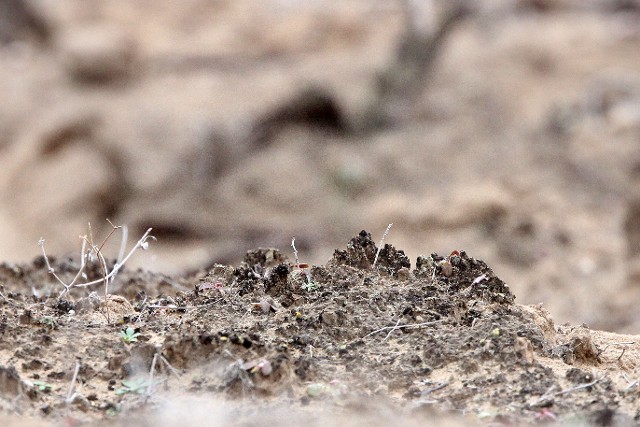
Although the deserts were quite trampled in many locations, there was still a surprising amount of cryptobiotic soil remaining intact. This image was taken in Wutong Gou Desert Attraction.
***

Som on Xinjiang's "Yellow Brick Road"! This brick road actually crossed the Taklamakan and Kumtage Deserts at one time before being replaced with the tar roads of today!
***
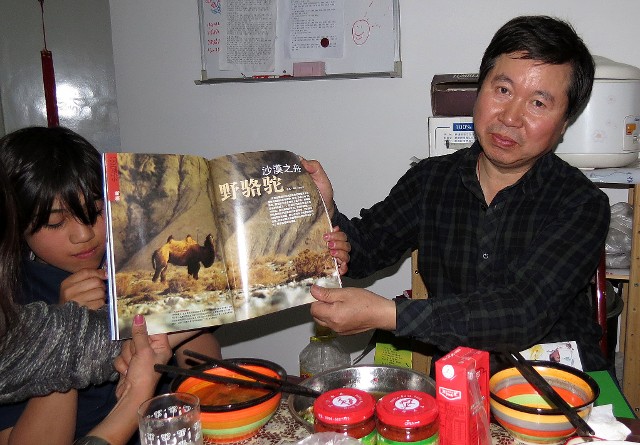
One of Professor Li's numerous publications. This one was special however in that it was about the wild Bactrian camels of Lop Nur. This article appeared in National Geographic China a couple years back. We were truly privileged to have such a worthy escort on our adventure to Xinjiang.
***

Enjoying a noodle dinner at Professor Li's home in Urumqi! His wife "Xie", on the left, is now part of Team Xinjiang!
***
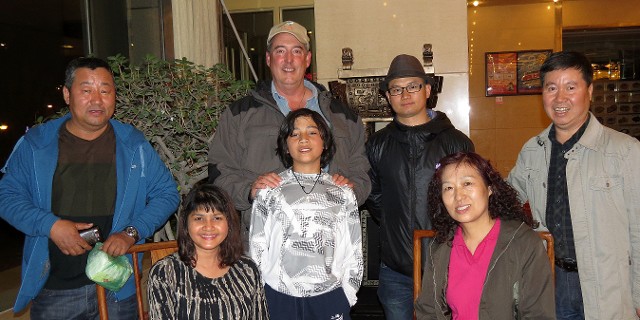
The complete Team Xinjiang!
***
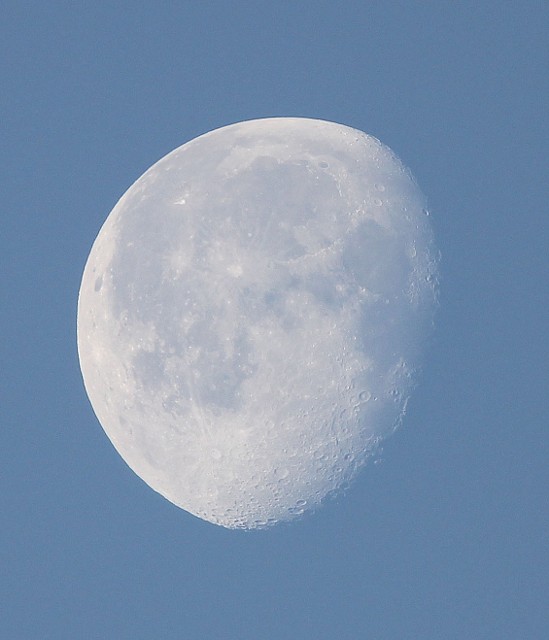
Lop Nur Moonrise
***
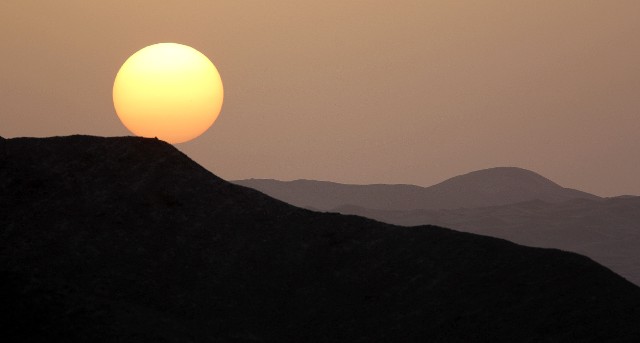
Our amazing Lop Nur sunset. We will never forget our time in the amazing deserts of China.
Be sure to check out our Pbase galleries for Xinjiang and Gansu:
***
Gansu's Gobi Desert
Yadan National Geological Reserve
Mammals of Xinjiang and Gansu
Lop Nur Wild Bactrian Camel Reserve
Tianshan Mountains
Turpan
Urumqi
Gansu's Ancient Sites
Wutong Gou & Karamori Reserves
Birds of Xinjiang
